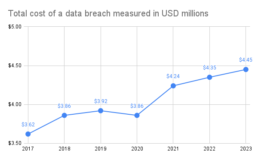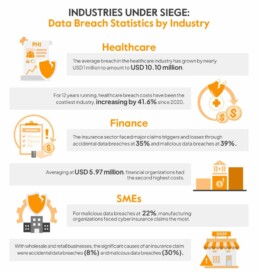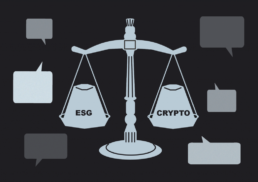AI Under Scrutiny
Why AI risk & governance should be a focus area for financial services firms
Introduction
As financial services firms increasingly integrate artificial intelligence (AI) into their operations, the imperative to focus on AI risk & governance becomes paramount. AI offers transformative potential, driving innovation, enhancing customer experiences, and streamlining operations. However, with this potential comes significant risks that can undermine the stability, integrity, and reputation of financial institutions. This article delves into the critical importance of AI risk & governance for financial services firms, providing a detailed exploration of the associated risks, regulatory landscape, and practical steps for effective implementation. Our goal is to persuade financial services firms to prioritise AI governance to safeguard their operations and ensure regulatory compliance.
The Growing Role of AI in Financial Services
AI adoption in the financial services industry is accelerating, driven by its ability to analyse vast amounts of data, automate complex processes, and provide actionable insights. Financial institutions leverage AI for various applications, including fraud detection, credit scoring, risk management, customer service, and algorithmic trading. According to a report by McKinsey & Company, AI could potentially generate up to $1 trillion of additional value annually for the global banking sector.
Applications of AI in Financial Services
1 Fraud Detection and Prevention: AI algorithms analyse transaction patterns to identify and prevent fraudulent activities, reducing losses and enhancing security.
2 Credit Scoring and Risk Assessment: AI models evaluate creditworthiness by analysing non-traditional data sources, improving accuracy and inclusivity in lending decisions.
3 Customer Service and Chatbots: AI-powered chatbots and virtual assistants provide 24/7 customer support, while machine learning algorithms offer personalised product recommendations.
4 Personalised Financial Planning: AI-driven platforms offer tailored financial advice and investment strategies based on individual customer profiles, goals, and preferences, enhancing client engagement and satisfaction.
Potential Benefits of AI
The benefits of AI in financial services are manifold, including increased efficiency, cost savings, enhanced decision-making, and improved customer satisfaction. AI-driven automation reduces manual workloads, enabling employees to focus on higher-value tasks. Additionally, AI's ability to uncover hidden patterns in data leads to more informed and timely decisions, driving competitive advantage.
The Importance of AI Governance
AI governance encompasses the frameworks, policies, and practices that ensure the ethical, transparent, and accountable use of AI technologies. It is crucial for managing AI risks and maintaining stakeholder trust. Without robust governance, financial services firms risk facing adverse outcomes such as biased decision-making, regulatory penalties, reputational damage, and operational disruptions.
Key Components of AI Governance
1 Ethical Guidelines: Establishing ethical principles to guide AI development and deployment, ensuring fairness, accountability, and transparency.
2 Risk Management: Implementing processes to identify, assess, and mitigate AI-related risks, including bias, security vulnerabilities, and operational failures.
3 Regulatory Compliance: Ensuring adherence to relevant laws and regulations governing AI usage, such as data protection and automated decision-making.
4 Transparency and Accountability: Promoting transparency in AI decision-making processes and holding individuals and teams accountable for AI outcomes.
Risks of Neglecting AI Governance
Neglecting AI governance can lead to several significant risks:
1 Embedded bias: AI algorithms can unintentionally perpetuate biases if trained on biased data or if developers inadvertently incorporate them. This can lead to unfair treatment of certain groups and potential violations of fair lending laws.
2 Explainability and complexity: AI models can be highly complex, making it challenging to understand how they arrive at decisions. This lack of explainability raises concerns about transparency, accountability, and regulatory compliance
3 Cybersecurity: Increased reliance on AI systems raises cybersecurity concerns, as hackers may exploit vulnerabilities in AI algorithms or systems to gain unauthorised access to sensitive financial data
4 Data privacy: AI systems rely on vast amounts of data, raising privacy concerns related to the collection, storage, and use of personal information
5 Robustness: AI systems may not perform optimally in certain situations and are susceptible to errors. Adversarial attacks can compromise their reliability and trustworthiness
6 Impact on financial stability: Widespread adoption of AI in the financial sector can have implications for financial stability, potentially amplifying market dynamics and leading to increased volatility or systemic risks
7 Underlying data risks: AI models are only as good as the data that supports them. Incorrect or biased data can lead to inaccurate outputs and decisions
8 Ethical considerations: The potential displacement of certain roles due to AI automation raises ethical concerns about societal implications and firms' responsibilities to their employees
9 Regulatory compliance: As AI becomes more integral to financial services, there is an increasing need for transparency and regulatory explainability in AI decisions to maintain compliance with evolving standards
10 Model risk: The complexity and evolving nature of AI technologies mean that their strengths and weaknesses are not yet fully understood, potentially leading to unforeseen pitfalls in the future
To address these risks, financial institutions need to implement robust risk management frameworks, enhance data governance, develop AI-ready infrastructure, increase transparency, and stay updated on evolving regulations specific to AI in financial services.
The consequences of inadequate AI governance can be severe. Financial institutions that fail to implement proper risk management and governance frameworks may face significant financial penalties, reputational damage, and regulatory scrutiny. The proposed EU AI Act, for instance, outlines fines of up to €30 million or 6% of global annual turnover for non-compliance. Beyond regulatory consequences, poor AI governance can lead to biased decision-making, privacy breaches, and erosion of customer trust, all of which can have long-lasting impacts on a firm's operations and market position.
Regulatory Requirements
The regulatory landscape for AI in financial services is evolving rapidly, with regulators worldwide introducing guidelines and standards to ensure the responsible use of AI. Compliance with these regulations is not only a legal obligation but also a critical component of building a sustainable and trustworthy AI strategy.
Key Regulatory Frameworks
1 General Data Protection Regulation (GDPR): The European Union's GDPR imposes strict requirements on data processing and the use of automated decision-making systems, ensuring transparency and accountability.
2 Financial Conduct Authority (FCA): The FCA in the UK has issued guidance on AI and machine learning, emphasising the need for transparency, accountability, and risk management in AI applications.
3 Federal Reserve: The Federal Reserve in the US has provided supervisory guidance on model risk management, highlighting the importance of robust governance and oversight for AI models.
4 Monetary Authority of Singapore (MAS): MAS has introduced guidelines for the ethical use of AI and data analytics in financial services, promoting fairness, ethics, accountability, and transparency (FEAT).
5 EU AI Act: This new act aims to protect fundamental rights, democracy, the rule of law and environmental sustainability from high-risk AI, while boosting innovation and establishing Europe as a leader in the field. The regulation establishes obligations for AI based on its potential risks and level of impact.
Importance of Compliance
Compliance with regulatory requirements is essential for several reasons:
1 Legal Obligation: Financial services firms must adhere to laws and regulations governing AI usage to avoid legal penalties and fines.
2 Reputational Risk: Non-compliance can damage a firm's reputation, eroding trust with customers, investors, and regulators.
3 Operational Efficiency: Regulatory compliance ensures that AI systems are designed and operated according to best practices, enhancing efficiency and effectiveness.
4 Stakeholder Trust: Adhering to regulatory standards builds trust with stakeholders, demonstrating a commitment to responsible and ethical AI use.
Identifying AI Risks
AI technologies pose several specific risks to financial services firms that must be identified and mitigated through effective governance frameworks.
Bias and Discrimination
AI systems can reflect and reinforce biases present in training data, leading to discriminatory outcomes. For instance, biased credit scoring models may disadvantage certain demographic groups, resulting in unequal access to financial services. Addressing bias requires rigorous data governance practices, including diverse and representative training data, regular bias audits, and transparent decision-making processes.
Security Risks
AI systems are vulnerable to various security threats, including cyberattacks, data breaches, and adversarial manipulations. Cybercriminals can exploit vulnerabilities in AI models to manipulate outcomes or gain unauthorised access to sensitive financial data. Ensuring the security and integrity of AI systems involves implementing robust cybersecurity measures, regular security assessments, and incident response plans.
Operational Risks
AI-driven processes can fail or behave unpredictably under certain conditions, potentially disrupting critical financial services. For example, algorithmic trading systems can trigger market instability if not responsibly managed. Effective governance frameworks include comprehensive testing, continuous monitoring, and contingency planning to mitigate operational risks and ensure reliable AI performance.
Compliance Risks
Failure to adhere to regulatory requirements can result in significant fines, legal consequences, and reputational damage. AI systems must be designed and operated in compliance with relevant laws and regulations, such as data protection and automated decision-making guidelines. Regular compliance audits and updates to governance frameworks are essential to ensure ongoing regulatory adherence.
Benefits of Effective AI Governance
Implementing robust AI governance frameworks offers numerous benefits for financial services firms, enhancing risk management, trust, and operational efficiency.
Risk Mitigation
Effective AI governance helps identify, assess, and mitigate AI-related risks, reducing the likelihood of adverse outcomes. By implementing comprehensive risk management processes, firms can proactively address potential issues and ensure the safe and responsible use of AI technologies.
Enhanced Trust and Transparency
Transparent and accountable AI practices build trust with customers, regulators, and other stakeholders. Clear communication about AI decision-making processes, ethical guidelines, and risk management practices demonstrates a commitment to responsible AI use, fostering confidence and credibility.
Regulatory Compliance
Adhering to governance frameworks ensures compliance with current and future regulatory requirements, minimising legal and financial repercussions. Robust governance practices align AI development and deployment with regulatory standards, reducing the risk of non-compliance and associated penalties.
Operational Efficiency
Governance frameworks streamline the development and deployment of AI systems, promoting efficiency and consistency in AI-driven operations. Standardised processes, clear roles and responsibilities, and ongoing monitoring enhance the effectiveness and reliability of AI applications, driving operational excellence.
Case Studies
Several financial services firms have successfully implemented AI governance frameworks, demonstrating the tangible benefits of proactive risk management and responsible AI use.
JP Morgan Chase
JP Morgan Chase has established a comprehensive AI governance structure that includes an AI Ethics Board, regular audits, and robust risk assessment processes. The AI Ethics Board oversees the ethical implications of AI applications, ensuring alignment with the bank's values and regulatory requirements. Regular audits and risk assessments help identify and mitigate AI-related risks, enhancing the reliability and transparency of AI systems.
ING Group
ING Group has developed an AI governance framework that emphasises transparency, accountability, and ethical considerations. The framework includes guidelines for data usage, model validation, and ongoing monitoring, ensuring that AI applications align with the bank's values and regulatory requirements. By prioritising responsible AI use, ING has built trust with stakeholders and demonstrated a commitment to ethical and transparent AI practices.
HSBC
HSBC has implemented a robust AI governance framework that focuses on ethical AI development, risk management, and regulatory compliance. The bank's AI governance framework includes a dedicated AI Ethics Committee, comprehensive risk management processes, and regular compliance audits. These measures ensure that AI applications are developed and deployed responsibly, aligning with regulatory standards and ethical guidelines.
Practical Steps for Implementation
To develop and implement effective AI governance frameworks, financial services firms should consider the following actionable steps:
Establish a Governance Framework
Develop a comprehensive AI governance framework that includes policies, procedures, and roles and responsibilities for AI oversight. The framework should outline ethical guidelines, risk management processes, and compliance requirements, providing a clear roadmap for responsible AI use.
Create an AI Ethics Board
Form an AI Ethics Board or committee to oversee the ethical implications of AI applications and ensure alignment with organisational values and regulatory requirements. The board should include representatives from diverse departments, including legal, compliance, risk management, and technology.
Implement Specific AI Risk Management Processes
Conduct regular risk assessments to identify and mitigate AI-related risks. Implement robust monitoring and auditing processes to ensure ongoing compliance and performance. Risk management processes should include bias audits, security assessments, and contingency planning to address potential operational failures.
Ensure Data Quality and Integrity
Establish data governance practices to ensure the quality, accuracy, and integrity of data used in AI systems. Address potential biases in data collection and processing, and implement measures to maintain data security and privacy. Regular data audits and validation processes are essential to ensure reliable and unbiased AI outcomes.
Invest in Training and Awareness
Provide training and resources for employees to understand AI technologies, governance practices, and their roles in ensuring ethical and responsible AI use. Ongoing education and awareness programs help build a culture of responsible AI use, promoting adherence to governance frameworks and ethical guidelines.
Engage with Regulators and Industry Bodies
Stay informed about regulatory developments and industry best practices. Engage with regulators and industry bodies to contribute to the development of AI governance standards and ensure alignment with evolving regulatory requirements. Active participation in industry forums and collaborations helps stay ahead of regulatory changes and promotes responsible AI use.
Conclusion
As financial services firms continue to embrace AI, the importance of robust AI risk & governance frameworks cannot be overstated. By proactively addressing the risks associated with AI and implementing effective governance practices, firms can unlock the full potential of AI technologies while safeguarding their operations, maintaining regulatory compliance, and building trust with stakeholders. Prioritising AI risk & governance is not just a regulatory requirement but a strategic imperative for the sustainable and ethical use of AI in financial services.
References and Further Reading
- McKinsey & Company. (2020). The AI Bank of the Future: Can Banks Meet the AI Challenge?
- European Union. (2018). General Data Protection Regulation (GDPR).
- Financial Conduct Authority (FCA). (2019). Guidance on the Use of AI and Machine Learning in Financial Services.
- Federal Reserve. (2020). Supervisory Guidance on Model Risk Management.
- JP Morgan Chase. (2021). AI Ethics and Governance Framework.
- ING Group. (2021). Responsible AI: Our Approach to AI Governance.
- Monetary Authority of Singapore (MAS). (2019). FEAT Principles for the Use of AI and Data Analytics in Financial Services.
For further reading on AI governance and risk management in financial services, consider the following resources:
- "Artificial Intelligence: A Guide for Financial Services Firms" by Deloitte
- "Managing AI Risk in Financial Services" by PwC
- "AI Ethics and Governance: A Global Perspective" by the World Economic Forum
Strengthening Information Security
The Combined Power of Identity & Access Management and Data Access Controls
The digital age presents a double-edged sword for businesses. While technology advancements offer exciting capabilities in cloud, data analytics, and customer experience, they also introduce new security challenges. Data breaches are a constant threat, costing businesses an average of $4.45 million per incident according to a 2023 IBM report (https://www.ibm.com/reports/data-breach) and eroding consumer trust. Traditional security measures often fall short, leaving vulnerabilities for attackers to exploit. These attackers, targeting poorly managed identities and weak data protection, aim to disrupt operations, steal sensitive information, or even hold companies hostage. The impact extends beyond the business itself, damaging customers, stakeholders, and the broader financial market
In response to these evolving threats, the European Commission (EU) has implemented the Digital Operational Resilience Act (DORA) (Regulation (EU) 2022/2554). This regulation focuses on strengthening information and communications technology (ICT) resilience standards in the financial services sector. While designed for the EU, DORA’s requirements offer valuable insights for businesses globally, especially those with operations in the EU or the UK. DORA mandates that financial institutions define, approve, oversee, and be accountable for implementing a robust risk-management framework. This is where identity & access management (IAM) and data access controls (DAC).
The Threat Landscape and Importance of Data Security
Data breaches are just one piece of the security puzzle. Malicious entities also employ malware, phishing attacks, and even exploit human error to gain unauthorised access to sensitive data. Regulatory compliance further emphasises the importance of data security. Frameworks like GDPR and HIPAA mandate robust data protection measures. Failure to comply can result in hefty fines and reputational damage.
Organisations, in a rapidly-evolving hybrid working environment, urgently need to implement or review their information security strategy. This includes solutions that not only reduce the attack surface but also improve control over who accesses what data within the organisation. IAM and DAC, along with fine-grained access provisioning for various data formats, are critical components of a strong cybersecurity strategy.
Keep reading to learn the key differences between IAM and DAC, and how they work in tandem to create a strong security posture.
Identity & Access Management (IAM)
Think of IAM as the gatekeeper to your digital environment. It ensures only authorised users can access specific systems and resources. Here is a breakdown of its core components:
- Identity Management (authentication): This involves creating, managing, and authenticating user identities. IAM systems manage user provisioning (granting access), authentication (verifying user identity through methods like passwords or multi-factor authentication [MFA]), and authorisation (determining user permissions). Common identity management practices include:
- Single Sign-On (SSO): Users can access multiple applications with a single login, improving convenience and security.
- Multi-Factor Authentication (MFA):An extra layer of security requiring an additional verification factor beyond a password (e.g., fingerprint, security code).
- Passwordless: A recent usability improvement removes the use of passwords and replaces them with authentication apps and biometrics.
- Adaptive or Risk-based Authentication: Uses AI and machine learning to analyse user behaviour and adjust authentication requirements in real-time based on risk level.
- Access Management (authorisation): Once a user has had their identity authenticated, then access management checks to see what resources the user has access to. IAM systems apply tailored access policies based on user identities and other attributes. Once verified, IAM controls access to applications, data, and other resources.
Advanced IAM concepts like Privileged Access Management (PAM) focus on securing access for privileged users with high-level permissions, while Identity Governance ensures user access is reviewed and updated regularly.
Data Access Control (DAC)
While IAM focuses on user identities and overall system access, DAC takes a more granular approach, regulating access to specific data stored within those systems. Here are some common DAC models:
- Discretionary Access Control (also DAC): Allows data owners to manage access permissions for other users. While offering flexibility, it can lead to inconsistencies and security risks if not managed properly. One example of this is UNIX files, where an owner of a file can grant or deny other users access.
- Mandatory Access Control (MAC): Here, the system enforces access based on pre-defined security labels assigned to data and users. This offers stricter control but requires careful configuration.
- Role-Based Access Control (RBAC): This approach complements IAM RBAC by defining access permissions for specific data sets based on user roles.
- Attribute-Based Access Control (ABAC): Permissions are granted based on a combination of user attributes, data attributes, and environmental attributes, offering a more dynamic and contextual approach.
- Encryption: Data is rendered unreadable without the appropriate decryption key, adding another layer of protection.
IAM vs. DAC: Key Differences and Working Together
While IAM and DAC serve distinct purposes, they work in harmony to create a comprehensive security posture. Here is a table summarising the key differences:
FEATURE
IAM
DAC
Description
Controls access to applications
Controls access to data within applications
Granularity
Broader – manages access to entire systems
More fine-grained – controls access to specific data check user attributes
Enforcement
User-based (IAM) or system-based (MAC)
System-based enforcement (MAC) or user-based (DAC)
Imagine an employee accessing customer data in a CRM system. IAM verifies their identity and grants access to the CRM application. However, DAC determines what specific customer data they can view or modify based on their role (e.g., a sales representative might have access to contact information but not financial details).
Dispelling Common Myths
Several misconceptions surround IAM and DAC. Here is why they are not entirely accurate:
- Myth 1: IAM is all I need. The most common mistake that organisations make is to conflate IAM and DAC, or worse, assume that if they have IAM, that includes DAC. Here is a hint. It does not.
- Myth 2: IAM is only needed by large enterprises. Businesses of all sizes must use IAM to secure access to their applications and ensure compliance. Scalable IAM solutions are readily available.
- Myth 3: More IAM tools equal better security. A layered approach is crucial. Implementing too many overlapping IAM tools can create complexity and management overhead. Focus on choosing the right tools that complement each other and address specific security needs.
- Myth 4: Data access control is enough for complete security. While DAC plays a vital role, it is only one piece of the puzzle. Strong IAM practices ensure authorised users are accessing systems, while DAC manages their access to specific data within those systems. A comprehensive security strategy requires both.
Tools for Effective IAM and DAC
There are various IAM and DAC solutions available, and the best choice depends on your specific needs. While Active Directory remains a popular IAM solution for Windows-based environments, it may not be ideal for complex IT infrastructures or organisations managing vast numbers of users and data access needs.
Imagine a scenario where your application has 1,000 users and holds sensitive & personal customer information for 1,000,000 customers split across ten countries and five products. Not every user should see every customer record. It might be limited to the country the user works in and the specific product they support. This is the “Principle of Least Privilege.” Applying this principle is critical to demonstrating you have appropriate data access controls.
To control access to this data, you would need to create tens of thousands of AD groups for every combination of country or countries and product or products. This is unsustainable and makes choosing AD groups to manage data access control an extremely poor choice.
The complexity of managing nested AD groups and potential integration challenges with non-Windows systems highlight the importance of carefully evaluating your specific needs when choosing IAM tools. Consider exploring cloud-based IAM platforms or Identity Governance and Administration (IGA) solutions for centralised management and streamlined access control.
Building a Strong Security Strategy
The EU’s Digital Operational Resilience Act (DORA) emphasises strong IAM practices for financial institutions and will coming into act from 17 January 2025. DORA requires financial organisations to define, approve, oversee, and be accountable for implementing robust IAM and data access controls as part of their risk management framework.
Here are some key areas where IAM and DAC can help organisations comply with DORA and protect themselves:
DORA Pillar
How IAM helps
How DAC helps
ICT risk management
- Identifies risks associated with unauthorised access/misuse
- Detects users with excessive permissions or dormant accounts
- Minimises damage from breaches by restricting access to specific data
ICT related incident reporting
- Provides audit logs for investigating breaches (user activity, login attempts, accessed resources)
- Helps identify source of attack and compromised accounts
- Helps determine scope of breach and potentially affected information
ICT third-party risk management
- Manages access for third-party vendors/partners
- Grants temporary access with limited permissions, reducing attack surface
- Restricts access for third-party vendors by limiting ability to view/modify sensitive data
Information sharing
- Permissions designated users authorised to share sensitive information
- Controls access to shared information via roles and rules
Digital operational resilience testing
- Enables testing of IAM controls to identify vulnerabilities
- Penetration testing simulates attacks to assess effectiveness of IAM controls
- Ensures data access restrictions are properly enforced and minimizes breach impact
Understanding IAM and DAC empowers you to build a robust data security strategy
Use these strategies to leverage the benefits of IAM and DAC combined:
- Recognise the difference between IAM and DAC, and how they are implemented in your organisation
- Conduct regular IAM and DAC audits to identify and address vulnerabilities
- Implement best practices like the Principle of Least Privilege (granting users only the minimum access required for their job function)
- Regularly review and update user access permissions
- Educate employees on security best practices (e.g., password hygiene, phishing awareness)
Explore different IAM and DAC solutions based on your specific organisational needs and security posture. Remember, a layered approach that combines IAM, DAC, and other security measures like encryption creates the most effective defence against data breaches and unauthorised access.
Conclusion
By leveraging the combined power of IAM and DAC, you can ensure only the right people have access to the right data at the right time. This fosters trust with stakeholders, protects your reputation, and safeguards your valuable information assets.
Top 5 Trends for MLROs in 2024
Our Financial Crime Practice Lead, Kavita Harwani, recently attended the FRC Leadership Convention at the Celtic Manor, Newport, Wales. This gave us the opportunity to engage with senior leaders in the financial risk and compliance space on the latest best practices, upcoming technology advances, and practical insights.
Criminals are becoming increasingly sophisticated, driving MLROs to innovate their financial crime controls. There is never a quiet time for FRC professionals, but 2024 is proving to be exceptionally busy.
Our view on the top five trends that MLROs need to focus on is presented here.
Top 5 Trends
- Minimise costs by using technology to scan the regulatory horizon and identify impacts on your business
- Accelerating transaction monitoring & decisioning by applying AI & data analytics
- Optimising due diligence with a 360 view of the customers
- Improving operational efficiency by using machine learning to automate alert handling
- Reducing financial crime risk through training and communications programmes.
1. Regulatory Compliance and Adaptation
MLROs need to stay abreast of evolving regulatory frameworks and compliance requirements. With regulatory changes occurring frequently, MLROs must ensure their organisations are compliant with the latest anti-money laundering (AML) and counter-terrorist financing (CTF) regulations.
This involves scanning the regulatory horizon, updating policies, procedures, and systems to reflect regulatory updates and adapting swiftly to new compliance challenges.
2. Technology & Data Analytics
MLROs will increasingly leverage advanced technology and data analytics tools to enhance their AML capabilities.
Machine learning algorithms and predictive analytics can help identify suspicious activities more effectively, allowing MLROs to detect and prevent money laundering and financial crime quicker, at lower cost, and with higher accuracy rates.
MLROs must focus on implementing robust AML technologies and optimising data analytics strategies to improve risk detection and decision-making processes.
3. Customer Due Diligence (CDD) and Enhanced Due Diligence (EDD)
MLROs should prioritise strengthening CDD processes to better understand their customers’ risk of committing financial crimes.
Enhanced due diligence is critical for high-risk customers, such as politically exposed persons (PEPs) and high net worth individuals (HNWIs).
MLROs should focus on enhancing risk-based approaches to CDD and EDD, leveraging technology and data analytics to streamline customer onboarding processes while maintaining compliance with regulatory requirements.
4. Transaction Monitoring and Suspicious Activity Reporting
MLROs will continue to refine transaction monitoring systems to effectively identify suspicious activities and generate accurate alerts for investigation.
MLROs should focus on optimising transaction monitoring rules and scenarios to reduce false positives and prioritise high-risk transactions for further review.
Enhanced collaboration with law enforcement agencies and financial intelligence units will be crucial for timely and accurate suspicious activity reporting. Cross-industry collaboration is an expanding route to quicker insights on bad actors and behaviours.
5. Training and Awareness Programmes
MLROs must invest in comprehensive training and awareness programs to educate employees on AML risks, obligations, and best practices.
Building a strong culture of compliance within the organisation is essential for effective AML risk management.
Additionally, MLROs must promote a proactive approach to AML compliance, encouraging employees to raise concerns and seek guidance when faced with potential AML risks.
Conclusion
The expanded use of technology and data is becoming more evident from our discussions. The latest, ever-accelerating, improvements in automation and AI has brought a new set of opportunities to transform legacy manual, people-heavy processes into streamlined, efficient, and effective anti-financial crime departments.
Leading Point has a specialist financial crime team and can help strengthen your operations and meet these challenges in 2024. Reach out to our practice lead Kavita Harwani on kavita@leadingpoint.io to discuss your needs further.
Catch the Multi-Cloud Wave
Charting Your Course
The digital realm is a constant current, pulling businesses towards new horizons. Today, one of the most significant tides shaping the landscape is the surge of multi-cloud adoption. But what exactly is driving this trend, and is your organisation prepared to ride the wave?
At its core, multi-cloud empowers businesses to break free from the constraints of a single cloud provider. Imagine cherry-picking the best services from different cloud vendors, like selecting the perfect teammates for a sailing crew. In 2022, 92% of firms either had or were considering a multi-cloud strategy (1). Having a strategy is one thing. Implementing it is a very different story. It takes meticulous planning and preparation. The potential of migrating from a single cloud provider to a multi-cloud environment can be huge if you are dealing with vast volumes of data. This flexibility unlocks a treasure trove of benefits.
1 Faction - The Continued Growth of Multi-Cloud and Hybrid Infrastructure
Top 4 Benefits
1 Unmatched Agility
Respond to ever-changing demands with ease by scaling resources up or down. Multi-cloud lets you ditch the "one-size-fits-all" approach and tailor your cloud strategy to your specific needs, fostering innovation and efficiency
2 Resilience in the Face of the Storm
Don't let cloud downtime disrupt your operations. By distributing your workload across multiple providers, you create a safety net that ensures uninterrupted service even when one encounters an issue.
3 A World of Choice at Your Fingertips
No single cloud provider can be all things to all businesses. Multi-cloud empowers you to leverage the unique strengths of different vendors, giving you access to a diverse array of services and optimising your overall offering.
4 Future-Proofing Your Digital Journey
The tech landscape is a whirlwind of innovation. With multi-cloud, you're not tethered to a single provider's roadmap. Instead, you have the freedom to seamlessly adapt to emerging technologies and trends, ensuring you stay ahead of the curve.
Cost Meets the Cloud
Perhaps the most exciting development propelling multi-cloud adoption is the shrinking cost barrier. As cloud providers engage in fierce competition, prices are driving down, making multi-cloud solutions more accessible for businesses of all sizes. This cost optimisation, coupled with the strategic advantages mentioned earlier, makes multi-cloud an increasingly attractive proposition. However, a word of caution: While the overall trend is towards affordability, navigating the multi-cloud landscape still requires meticulous planning and cost management. Without proper controls and precise resource allocation, you risk increased expenses and potential setbacks. With increased distribution of data, comes the increased risk of data leakage. Not only must data be protected within each cloud environment, it needs to be protected across the multi-cloud. Data monitoring increases in complexity. As data needs to move between cloud solutions, there may be additional latency risks. These can be mitigated with good risk controls and monitoring.
Kicking Off Your Journey
Ditch single-provider limitations and enjoy flexibility, resilience, and a wider range of services to boost your digital transformation but remember…
Multi-cloud environments can heighten security risks.
Navigate cautiously with proper controls and expert guidance to avoid hidden expenses.
Fierce competition is lowering multi-cloud barriers.
Let Leading Point be your guide, helping you set sail on the multi-cloud journey with confidence and unlock its full potential.
The multi-cloud path isn't without its challenges, but the rewards are undeniable. At Leading Point, we're experts in helping businesses navigate the multi-cloud wave with confidence. Let us help you unlock the full potential of multi-cloud for a more resilient, flexible, and innovative future. So, is your organisation ready to catch the wave? Contact Leading Point today and start your multi-cloud journey!
AI in Insurance - Article 1 - A Catalyst for Innovation
How insurance companies can use the latest AI developments to innovate their operations
The emergence of AI
The insurance industry is undergoing a profound transformation driven by the relentless advance of artificial intelligence (AI) and other disruptive technologies. A significant change in business thinking is gaining pace and Applied AI is being recognised for its potential in driving top-line growth and not merely a cost-cutting tool.
The adoption of AI is poised to reshape the insurance industry, enhancing operational efficiencies, improving decision-making, anticipating challenges, delivering innovative solutions, and transforming customer experiences.
This shift from data-driven to AI-driven operations is bringing about a paradigm shift in how insurance companies collect, analyse, and utilise data to make informed decisions and enhance customer experiences. By analysing vast amounts of data, including historical claims records, market forces, and external factors (global events like hurricanes, and regional conflicts), AI can assess risk with speed and accuracy to provide insurance companies a view of their state of play in the market.
Data vs AI approaches
This data-driven approach has enabled insurance companies to improve their underwriting accuracy, optimise pricing models, and tailor products to specific customer needs. However, the limitations of traditional data analytics methods have become increasingly apparent in recent years.
These methods often struggle to capture the complex relationships and hidden patterns within large datasets. They are also slow to adapt to rapidly-changing market conditions and emerging risks. As a result, insurance companies are increasingly turning to AI to unlock the full potential of their data and drive innovation across the industry.
AI algorithms, powered by machine learning and deep learning techniques, can process vast amounts of data far more efficiently and accurately than traditional methods. They can connect disparate datasets, identify subtle patterns, correlations & anomalies that would be difficult or impossible to detect with human analysis.
By leveraging AI, insurance companies can gain deeper insights into customer behaviour, risk factors, and market trends. This enables them to make more informed decisions about underwriting, pricing, product development, and customer service and gain a competitive edge in the ever-evolving marketplace.

Top 5 opportunities
1. Enhanced Risk Assessment
AI algorithms can analyse a broader range of data sources, including social media posts and weather patterns, to provide more accurate risk assessments. This can lead to better pricing and reduced losses.
2. Personalised Customer Experiences
AI can create personalised customer experiences, from tailored product recommendations to proactive risk mitigation guidance. This can boost customer satisfaction and loyalty.
3. Automated Claims Processing
AI can automate routine claims processing tasks, for example, by reviewing claims documentation and providing investigation recommendations, thus reducing manual efforts and improving efficiency. This can lead to faster claims settlements and lower operating costs.
4. Fraud Detection and Prevention
AI algorithms can identify anomalies and patterns in claims data to detect and prevent fraudulent activities. This can protect insurance companies from financial losses and reputational damage.
5. Predictive Analytics
AI can be used to anticipate future events, such as customer churn or potential fraud. This enables insurance companies to take proactive measures to prevent negative outcomes.
Adopting AI in Insurance
The adoption of AI in the insurance industry is not without its challenges. Insurance companies must address concerns about data quality, data privacy, transparency, and potential biases in AI algorithms. They must also ensure that AI is integrated seamlessly into their existing systems and processes.
Despite these challenges, AI presents immense opportunities. Insurance companies that embrace AI-driven operations will be well-positioned to gain a competitive edge, enhance customer experiences, and navigate the ever-changing risk landscape.
The shift from data-driven to AI-driven operations is a transformative force in the insurance industry. AI is not just a tool for analysing data; it is a catalyst for innovation and a driver of change. Insurance companies that harness the power of AI will be at the forefront of this transformation, shaping the future of insurance and delivering exceptional value to their customers.
Download the PDF article here.
The Consumer Duty Regulation
Improving outcomes with the Consumer Duty Regulation

How can buy-side retail financial firms improve consumer outcomes and the wider economy?
The FCA introduced new guidelines, rules and policies last year in 2022, comprised as the Consumer Duty Regulation, to ensure products and services are delivered at fair value to customers, as well as a better standard of care. With the recent rise of the cost-of-living crisis, consumers are struggling and are faced with difficult times ahead, including the UK economy. This Duty lays out responsibilities for Boards and senior management within firms, to implement this regulation, to not only benefit consumers, but the wider economy.
In a recent review published by the FCA in January 2023, the FCA identified key areas where firms are meeting obligations, and where areas of improvement are required. As stated in the Policy Statement PS22/9, the FCA would like to see firms make full use of the implementation period of this three-year strategy, to implement the Duty effectively, and that by October 2022, ‘firm’s boards (or equivalent management body) should have agreed their plans for implementing the Duty’ and to have evidenced this, to ‘challenge their plans to ensure they are deliverable and robust’ (Consumer Duty Implementation Plans, FCA, Jan 2023).
This review published by the FCA, helps firms understand the FCA’s expectations, and to work together with firms to ensure the Duty is implemented effectively. The review identified that firms are behind with the implementation of the Duty and need to improve their approach. Three key areas were suggested where firms can focus on for the second half of the implementation period, the first being ‘effective prioritisation of the Duty’ – in order to reduce risk of poor customer outcomes, and to prioritise the implementation plans. The second ‘embedding substantive requirements’, on how firms are over-confident on their plans, and instead should focus on the substantive requirements laid out in the Duty, and review ‘their products and services, communications and customer journeys, they identify and make the changes needed to meet the new standards’ (Consumer Duty Implementation Plans, FCA, Jan 2023). The third area of focus identified was on how firms should work together with other firms, to share information in the distribution chain, to ensure the Duty can be implemented effectively and consistently (Consumer Duty Implementation Plans, FCA, Jan 2023).

What can retail financial firms do to improve and what are the implications of not meeting the Duty requirements?
From the FCA’s recent review, it has been determined there are still many areas by which firms are falling short, which raises the risks of not meeting the Duty obligation deadlines. From the governance aspect, the FCA’s review has established that the board members and senior management teams within firms, have no clearly defined and developed plans in place, neither timings, and lack engagement. When it comes to the plans compiled by firms, the project requirements and timelines are unclear, there is a lack of detail, explanation, and evidence on the implementation of the Duty, including how a firm’s purpose, culture and values are in alignment with the Duty.
Additionally, the review identified that firms also fail to define risks, and internal/external dependencies such as resource planning, budgeting, and technology resources, including working together with third parties, which as a result may impact the implementation plans. Further, firms fail to distinguish mitigation strategies and approaches or methodologies for conducting reviews and gap analysis of products, services, communications, and customer journeys, as part of implementation of the Four Outcomes within the Duty. Firms have also failed to provide in-depth details into the types of data they will require, and how this will be tested, and used, to better understand the customer outcomes, which is another key part of the Duty requirements.
How can Leading Point help to simplify this process?
At Leading Point, our team of expert practitioners can assist the board members and senior managers within retail financial firms, to conduct more in-depth project scope and planning, gap analysis, as well as workflow strategies, and assist to define clear methodologies and approaches to implement the Duty policies and rules. We are fully-equipped to help any organisation that is looking to improve their implementation plans for meeting the Consumer Regulations, to ensure deadlines are met, whilst reducing costs, and risks, with defined mitigation strategies, and enhanced quality of consumer data. This will not only better equip firms with meeting the Duty obligations, but will help to accelerate new business growth, to ensure high-quality products and services are delivered to consumers.
Appendix and Additional Information on the Duty Regulation
What is the Consumer Duty Regulation?
The FCA introduced the Consumer Duty Regulation, and published the Finalised Guidelines FG22/5, along with the Policy Statement PS22/9 in July 2022, which is a ‘standard of care firms should give to customers in retail financial markets’ (FG22/9, p.3).
The FCA states that the purpose of the Consumer Duty (‘the Duty’) is to provide ‘a fairer basis for competition’, to help ‘boost growth and innovation’ (What firms and customers can expect from the consumer duty and other regulatory reforms, FCA (Sept, 2022)).
The Duty is comprised of three key areas: A Consumer Principle; the Cross-Cutting Rules; and the Four Outcomes (FG22/9, p.3). Each of these three key areas focus on how firms should deliver suitable products and services, as well as good outcomes to consumers.
Which firms and who will it impact?
The FG22/5 Guidelines state that the Duty applies ‘across retail financial services’, and that ‘firms should review all examples in this guidance and consider how they may be relevant to their business models and practices’ (FG22/5).
As stated in the FG22/5 Guidance, it is the firms responsibility to identify which rules and principles are applicable to their firm, and ‘what they are required to do’ (FG22/5).
What is the timeline of this Regulation?
It has been proposed for the Duty to be enforced in two-phase implementation periods, the first being by the end of July 2023, whereby the Duty will apply to new and existing products and services that remain for sale or open for renewal, and the second date is by July 2024, whereby the Duty will come fully into force, and will apply to all closed products and services (PS22/9).
The following timeline has been extracted from the Policy Statement – Implementation Timetable (PS22/9):
Implementation Period | Timeline |
Firms’ boards (or equivalent management body) should have agreed their implementation plans and be able to evidence they have scrutinised and challenged the plans to ensure they are deliverable and robust to meet the new standards. Firms should expect to be asked to share implementation plans, board papers and minutes with supervisors and be challenged on their contents. | End of October 2022 |
Manufacturers should aim to complete all the reviews necessary to meet the four outcome rules for their existing open products and services by the end of April 2023, so that they can:
• Share with distributors by the end of April 2023 the information necessary for them to meet their obligations under the Duty (e.g., in relation to the price and value, and products and service outcomes)
| End of April 2023 |
Manufacturers should: • Identify where changes need to be made to their existing open products and services to meet the Duty and implement these remedies by the end of July 2023 | End of July 2023 |
The Duty will apply to all new products and services, and all existing products and services that remain on sale or open for renewal. This gives firms 12 months to implement the new requirements on the bulk of retail financial products and services, benefiting the majority of consumers | End of July 2023 |
The Duty will come fully into force and apply to all closed products and services. This extra 12 months will help those firms with large numbers of closed products and will also help mitigate some of the wider concerns firms raised about the difficulty of applying the Duty to these products (see Chapter 3). | End of July 2024 |
How should firms implement the Consumer Duty Regulation?
According to the Guidance (FG22/5), it is a firm’s responsibility to identify which policies and rules apply and what they will be required to do (FG22/5). In addition to this, the Guidance has dedicated Chapter 10, on the Culture, Governance and Accountability that the Duty sets out for firms to give their customers. This is so that firms shift their focus on customer outcomes, and to ‘review the outcomes of their customers to ensure they are consistent with the Duty’ (PS22/9).
The Guidance (FG22/5) states the following:
- The rules require firms to ensure their strategies, governance, leadership, and people policies (including incentives at all levels) lead to good outcomes for customers. The rules also make clear that we expect customer outcomes to be a key lens for important areas, such as Risk and Internal Audit.
- A firm’s board, or equivalent governing body, should review and approve an assessment of whether the firm is delivering good outcomes for its customers which are consistent with the Duty, at least annually.
- Individual accountability and high standards of personal conduct in firms will ensure that firms are meeting their obligations under the Duty.
The Guidance (FG22/5) outlines four important drivers of culture that firms will need to ensure they deliver on from: Purpose; Leadership; People; and Governance. The Duty will also hold senior managers accountable via the Senior Managers & Certification Regime (SMCR) (FG22/5). A firm’s board will be responsible for the submission of a Board Report, which will be comprised of an assessment of whether the ‘firm is delivering good outcomes for its customers which are consistent with the Duty’ (FG22/5). Firms will also be required to monitor their outcomes, with a key focus of the Duty requiring firms to ‘assess, test, and understand’ and be able ‘to evidence the outcomes their customers are receiving’ (FG22/5), thus firms will be required to identify relevant sources of their data, to ensure they are consistent with meeting the obligations of the Duty, to their customers.
Unlocking the opportunity of vLEIs
Streamlining financial services workflows with Verifiable Legal Entity Identifiers (vLEIs)
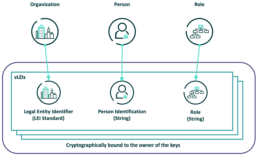
Source: GLIEF
Trust is hard to come by
How do you trust people you have never met in businesses you have never dealt with before? It was difficult 20 years ago and even more so today. Many checks are needed to verify if the person you are talking to is the person you think it is. Do they even work for the business they claim to represent? Failures of these checks manifest themselves every day with spear phishing incidents hitting the headlines, where an unsuspecting clerk is badgered into making a payment to a criminal’s account by a person claiming to be a senior manager.
With businesses increasing their cross-border business and more remote working, it is getting harder and harder to trust what you see in front of you. How do financial services firms reduce the risk of cybercrime attacks? At a corporate level, there are Legal Entity Identifiers (LEIs) which have been a requirement for regulated financial services businesses to operate in capital markets, OTC derivatives, fund administration or debt issuance.
LEIs are issued by Local Operating Units (LOUs). These are bodies that are accredited by GLEIF (Global Legal Entity Identifier Foundation) to issue LEIs. Examples of LOUs are the London Stock Exchange Group (LSEG) and Bloomberg. However, LEIs only work at a legal entity level for an organisation. LEIs are not used for individuals within organisations.
Establishing trust at this individual level is critical to reducing risk and establishing digital trust is key to streamlining workflows in financial services, like onboarding, trade finance, and anti-financial crime.
This is where Verifiable Legal Entity Identifiers (vLEIs) come into the picture.
What is the new vLEI initiative and how will it be used?
Put simply, vLEIs combine the organisation’s identity (the existing LEI), a person, and the role they play in the organisation into a cryptographically-signed package.
GLEIF has been working to create a fully digitised LEI service enabling instant and automated identity verification between counterparties across the globe. This drive for instant automation has been made possible by developments in blockchain technology, self-sovereign identity (SSI) and other decentralised key management platforms (Introducing the verifiable LEI (vLEI), GLEIF website).
vLEIs are secure digitally-signed credentials and a counterpart of the LEI, which is a unique 20-digit alphanumeric ISO-standardised code used to represent a single legal organisation. The vLEI cryptographically encompasses three key elements; the LEI code, the person identification string, and the role string, to form a digital credential of a vLEI. The GLEIF database and repository provides a breakdown of key information on each registered legal entity, from the registered location, the legal entity name, as well as any other key information pertaining to the registered entity or its subsidiaries, as GLEIF states this is of “principally ‘who is who’ and ‘who owns whom’”(GLEIF eBook: The vLEI: Introducing Digital I.D. for Legal Entities Everywhere, GLEIF Website).
In December 2022, GLEIF launched their first vLEI services through proof-of-concept (POC) trials, offering instant digitally verifiable credentials containing the LEI. This is to meet GLEIF’s goal to create a standardised, digitised service capable of enabling instant, automated trust between legal entities and their authorised representatives, and the counterparty legal entities and representatives with which they interact” (GLEIF eBook: The vLEI: Introducing Digital I.D. for Legal Entities Everywhere, page 2).
“The vLEI has the potential to become one of the most valuable digital credentials in the world because it is the hallmark of authenticity for a legal entity of any kind. The digital credentials created by GLEIF and documented in the vLEI Ecosystem Governance Framework can serve as a chain of trust for anyone needing to verify the legal identity of an organisation or a person officially acting on that organisation’s behalf. Using the vLEI, organisations can rely upon a digital trust infrastructure that can benefit every country, company, and consumers worldwide”,
Karla McKenna, Managing Director GLEIF Americas
This new approach for the automated verification of registered entities will benefit many organisations and businesses. It will enhance and speed up regulatory reports and filings, due diligence, e-signatures, client onboarding/KYC, business registration, as well as other wider business scenarios.
Imagine the spear phishing example in the introduction. A spoofed email will not have a valid vLEI cryptographic signature, so can be rejected (even automatically), saving potentially thousands of £.
How do I get a vLEI?
Registered financial entities can obtain a vLEI from a Qualified vLEI Issuer (QVI) organisation to benefit from instant verification, when dealing with other industries or businesses (Get a vLEI: List of Qualified vLEI Issuing Organisations, GLEIF Website).
A QVI organisation is authorised under GLEIF to register, renew or revoke vLEI credentials belonging to any financial entity. GLEIF offers a Qualification Program where organisations can apply to operate as a QVI. GLEIF maintain a list of QVIs on their website.
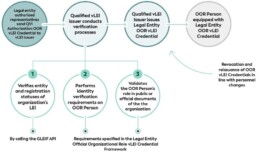
Source: GLIEF
What is the new ISO 5009:2022 and why is it relevant?
The International Organisation of Standards (ISO) published the ISO 5009 standard in 2022, which was initially proposed by GLEIF, for the financial services sector. This is a new scheme to address “the official organisation roles in a structured way in order to specify the roles of persons acting officially on behalf of an organisation or legal entity” (ISO 5009:2022, ISO.org).
Both ISO and GLEIF have created and developed this new scheme of combining organisation roles with the LEI, to enable digital identity management of credentials. This is because the ISO 5009 scheme offers a standard way to specify organisational roles in two types of LEI-based digital assets, being the public key certificates with embedded LEIs, as per X.509 (ISO/IEC 9594-8), also outlined in ISO 17442-2, or for digital verifiable credentials such as vLEIs to be specified, to help confirm the authenticity of a person’s role, who acts on behalf of an organisation (ISO 5009:2022, ISO Website). This will help speed up the validation of person(s) acting on behalf of an organisation, for regulatory requirements and reporting, as well as for ID verification, across various business use cases.
Leading Point have been supporting GLEIF in the analysis and implementation of the new ISO 5009 standard, for which GLEIF acts as the operating entity to maintain the ISO 5009 standard on behalf of ISO. Identifying and defining OORs was dependent on accurate assessments of hundreds of legal documents by Leading Point.
“We have seen first-hand the challenges of establishing identity in financial services and were proud to be asked to contribute to establishing a new standard aimed at solving this common problem. As data specialists, we continuously advocate the benefits of adopting standards. Fragmentation and trying to solve the same problem multiple times in different ways in the same organisation hurts the bottom line. Fundamentally, implementing vLEIs using ISO 5009 roles improves the customer experience, with quicker onboarding, reduced fraud risk, faster approvals, and most importantly, a higher level of trust in the business.”
Rajen Madan (Founder and CEO, Leading Point)
Thushan Kumaraswamy (Founding Partner & CTO, Leading Point)
How can Leading Point assist?
Our team of expert practitioners can assist financial entities to implement the ISO 5009 standard in their workflows for trade finance, anti-financial crime, KYC and regulatory reporting. We are fully-equipped to help any organisation that is looking to get vLEIs for their senior team and to incorporate vLEIs into their business processes, reducing costs, accelerating new business growth, and preventing anti-financial crime.
Glossary of Terms and Additional Information on GLEIF
Who is GLEIF?
The Global Legal Entity Identifier Foundation (GLEIF) was established by the Financial Stability Board (FSB) in June 2014 and as part of the G20 agenda to endorse a global LEI. The GLEIF organisation helps to implement the use of the Legal Entity Identifier (LEI) and is headquartered in Basel, Switzerland.
What is an LEI?
A Legal Entity Identifier (LEI) is a unique 20 alphanumeric character code based on the ISO-17442 standard. This is a unique identification code for legal financial entities that are involved in financial transactions. The role of the structure of how an LEI is concatenated, principally answers ‘who is who’ and ‘who owns whom’, as per ISO and GLEIF standards, for entity verification purposes and to improve data quality in financial regulatory reports.
How does GLEIF help?
GLEIF not only helps to implement the use of LEI, but it also offers a global reference data and central repository on LEI information via the Global LEI Index on gleif.org, which is an online, public, open, standardised, and a high-quality searchable tool for LEIs, which includes both historical and current LEI records.
What is GLEIF’S Vision?
GLEIF believe that each business involved in financial transactions should be identifiable with a unique single digital global identifier. GLEIF look to increase the rate of LEI adoption globally so that the Global LEI Index can include all global financial entities that engage in financial trading activities. GLEIF believes this will encourage market participants to reduce operational costs and burdens and will offer better insight into the global financial markets (Our Vision: One Global Identity Behind Every Business, GLEIF Website).
ESG Operating models hold the key to ESG compliance
John Macpherson on ESG Risk

In my last article, I wrote about the need for an effective operating model in the handling and optimisation of data for Financial Services firms. But data is only one of several key trends amongst these firms that would benefit from a digital operating model. ESG has risen the ranks in importance, and the reporting of this has become imperative.
The Investment Association Engine Program, which I Chair, is designed to identify the most relevant pain points and key themes amongst Asset and Investment Management clients. We do this by searching out FinTech businesses that are already working on solutions to these issues. By partnering with these businesses, we can help our clients overcome their challenges and improve their operations.
While data has been an ever-present issue, ESG has risen to an equal standing of importance over the last couple of years. Different regulatory jurisdictions and expectations worldwide has left SME firms struggling to comply and implement in a new paradigm of environmental, sustainable and governance protocols.
ESG risk is different to anything we have experienced before and does not fit into neat categories such as areas like operational risk. The depth and breadth of data and models required for firms to make informed strategic decisions varies widely based on the specific issue at hand (e.g., supply chain, reputation, climate change goals, etc.). Firms need to carefully consider their own position and objectives when determining how much analysis is needed.
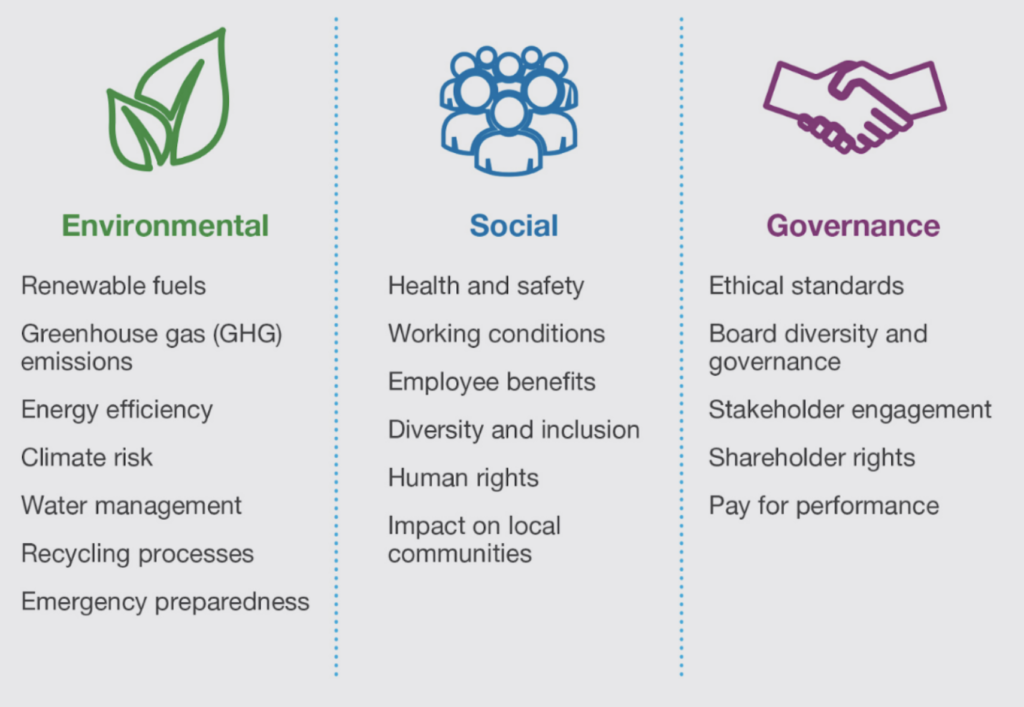
According to S&P Global, sustainable debt issuance reached a record level in 2021, and is only expected to increase further in the coming years. With this growth comes increased scrutiny and a heightened concern of so-called ‘greenwashing’, where companies falsely claim to be environmentally friendly. To combat this, participants need to manage that growth in a way that combats rising concerns about ‘greenwashing’.
Investors, regulators and the public, in general, are keen to challenge large companies’ ESG goals and results. These challenges vary wildly, but the biggest seen on a regular basis range from human rights to social unrest and climate change. As organisations begin to decarbonise their operations, they face the initially overlooked challenge of creating a credible near-term plan that will enable them to reach their long-term sustainability goals.
Investor pressure on climate change has historically focussed on the Energy sector. Now central banks are trying to incorporate climate risk as a stress testing feature for all Financial Services firms.
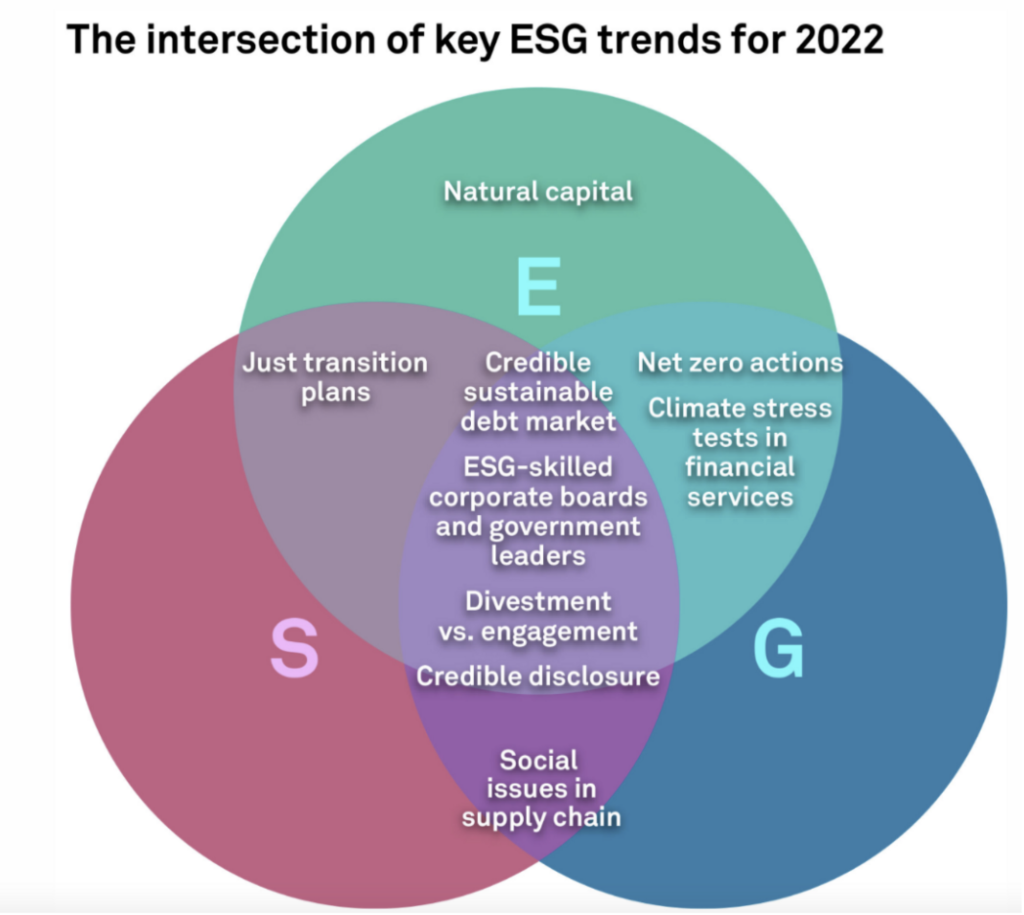
Source: S&P Global
Operating models hold the key to ESG transition and compliance. Having an operating model for how each of the firm’s functions intersect with ESG, requires new processes, new data, and new reporting techniques. This needs to be pulled across the enterprise, so firms have a process that is substantiated.
Before firms worry about ESG scores from their market data providers, they would do well to look closely at their own operating model and framework. In this way, they can then pull in the data required from the marketplace and use it in anger.
Leading Point is a FinTech business I am proud to be supporting. Their operating model system, modellr™ describes how financial services businesses work, from the products and services offered, to the key processes, people, data, and technology used to deliver value to their customers. This digital representation of how the business works is crucial to show what areas ESG will impact and how the firm can adapt in the most effective way.
Rajen Madan, CEO at Leading Point:
“In many ways, the transition to ESG is exposing the acute gap in firms of not being able to have meaningful dialogue with the plethora of data they already have, and need, to further add to for ESG”.
modellr™ harvests a company’s existing data to create a living dashboard, whilst also digitising the change process and enabling quicker and smarter decision-making. Access to all the information, from internal and external sources, in real time is proving transformative for SME size businesses.
Thushan Kumaraswamy, Chief Solutions Officer at Leading Point:
“ESG is already one of the biggest drivers of transformation in financial services and is only going to get bigger. Firms need to identify the impact on their business, choose the right change option, execute the strategy, and measure the improvements. The mass of ESG frameworks adds to the confusion of what to report and how. Tools such as modellr™ bring clarity and purpose to the ESG imperative.”
While most firms will look to sustainability officers for guidance on matters around ESG, Leading Point are providing these officers, and less qualified team members, with the tools to make informed decisions now, and in the future. We have established exactly what these firms need to succeed – a digital operating model.
Words by John Macpherson — Board advisor at Leading Point and Chair of the Investment Association Engine
The Challenges of Data Management
John Macpherson on The Challenges of Data Management

I often get asked, what are the biggest trends impacting the Financial Services industry? Through my position as Chair of the Investment Association Engine, I have unprecedented access to the key decision-makers in the industry, as well as constant connectivity with the ever-expanding Fintech ecosystem, which has helped me stay at the cutting edge of the latest trends.
So, when I get asked, ‘what is the biggest trend that financial services will face’, for the past few years my answer has remained the same, data.
During my time as CEO of BMLL, big data rose to prominence and developed into a multi-billion-dollar problem across financial services. I remember well an early morning interview I gave to CNBC around 5 years ago, where the facts were starkly presented. Back then, data was doubling every three years globally, but at an even faster pace in financial markets.
Firms are struggling under the weight of this data
The use of data is fundamental to a company's operations, but they are finding it difficult to get a handle on this problem. The pace of this increase has left many smaller and mid-sized IM/ AM firms in a quandary. Their ability to access, manage and use multiple data sources alongside their own data, market data, and any alternative data sources, is sub-optimal at best. Most core data systems are not architected to address the volume and pace of change required, with manual reviews and inputs creating unnecessary bottlenecks. These issues, among a host of others, mean risk management systems cannot cope as a result. Modernised data core systems are imperative to solve where real-time insights are currently lost, with fragmented and slow-moving information.
Around half of all financial service data goes unmentioned and ungoverned, this “dark data” poses a security and regulatory risk, as well as a huge opportunity.
While data analytics, big data, AI, and data science are historically the key sub-trends, these have been joined by data fabric (as an industry standard), analytical ops, data democratisation, and a shift from big data to smaller and wider data.
Operating models hold the key to data management

Governance is paramount to using this data in an effective, timely, accurate and meaningful way. Operating models are the true gauge as to whether you are succeeding.
Much can be achieved with the relatively modest budget and resources firms have, provided they invest in the best operating models around their data.
Leading Point is a firm I have been getting to know over several years now. Their data intelligence platform modellr™, is the first truly digital operating model. modellr™ harvests a company’s existing data to create a living operating model, digitising the change process, and enabling quicker, smarter, decision making. By digitising the process, they’re removing the historically slow and laborious consultative approach. Access to all the information in real-time is proving transformative for smaller and medium-sized businesses.
True transparency around your data, understanding it and its consumption, and then enabling data products to support internal and external use cases, is very much available.
Different firms are at very different places on their maturity curve. Longer-term investment in data architecture, be it data fabric or data mesh, will provide the technical backbone to harvest ML/ AI and analytics.
Taking control of your data
Recently I was talking to a large investment bank for whom Leading Point had been brought in to help. The bank was looking to transform its client data management and associated regulatory processes such as KYC, and Anti-financial crime.
They were investing heavily in sourcing, validating, normalising, remediating, and distributing over 2,000 data attributes. This was costing the bank a huge amount of time, money, and resources. But, despite the changes, their environment and change processes had become too complicated to have any chance of success. The process results were haphazard, with poor controls and no understanding of the results missing.
Leading Point was brought in to help and decided on a data minimisation approach. They profiled and analysed the data, despite working across regions and divisions. Quickly, 2,000 data attributes were narrowed to less than 200 critical ones for the consuming functions. This allowed the financial institutions, regulatory, and reporting processes to come to life, with clear data quality measurement and ownership processes. It allowed the financial institutions to significantly reduce the complexity of their data and its usability, meaning that multiple business owners were able to produce rapid and tangible results
I was speaking to Rajen Madan, the CEO of Leading Point, and we agreed that in a world of ever-growing data, data minimisation is often key to maximising success with data!
Elsewhere, Leading Point has seen benefits unlocked from unifying data models, and working on ontologies, standards, and taxonomies. Their platform, modellr™is enabling many firms to link their data, define common aggregations, and support knowledge graph initiatives allowing firms to deliver more timely, accurate and complete reporting, as well as insights on their business processes.
The need for agile, scalable, secure, and resilient tech infrastructure is more imperative than ever. Firms’ own legacy ways of handling this data are singularly the biggest barrier to their growth and technological innovation.
If you see a digital operating model as anything other than a must-have, then you are missing out. It’s time for a serious re-think.
Words by John Macpherson — Board advisor at Leading Point, Chair of the Investment Association Engine
John was recently interviewed about his role at Leading Point, and the key trends he sees affecting the financial services industry. Watch his interview here
What COP26 means for Financial Services
What COP26 means for Financial Services

Many have proclaimed COP26 as a failure, with funding falling short, loose wording and non-binding commitments. However, despite the doom and gloom, there was a bright spot; the UK’s finance industry.
Trillions need to be invested to achieve the 1.5 degrees target, but governments alone do not have the funds to achieve this. Alternative sources of finance must be found, and private investment needs to be encouraged on all fronts to, ‘go green’. Looking at supply-side energy alone, the IPPC estimates that up to $3.8 trillion needs to be mobilised annually to achieve the transition to net-zero by 2050.
The UK led from the front in green finance, introducing plans to become the world’s first net-zero aligned financial centre. New Treasury rules for financial institutions, listed on the London Stock Exchange, mean that companies will have to create and publish net-zero transition plans by 2023, although the full details are yet to be announced. These plans will be evaluated by a new institution, but crucially, are not mandatory. The adjudicator of the investment plans will be investors. Although some argue the regulation could be stronger, just like national climate targets, once there are institutions publishing their alignment with net-zero, there is a level of accountability that can be scrutinised and a platform for comparison which encourages competition. Anything stronger could have pushed investment firms into less-regulated exchanges.
Encouragingly, the private sector showed strong engagement, with nearly 500 global financial services firms agreeing to align $130 trillion — around 40% of the world’s financial assets — with the goals set out in the Paris Agreement, including limiting global warming to 1.5 degrees Celsius.
From large multinational companies, to small local businesses, the summit provided greater clarity on how climate policies and regulations will shape the future business environment. The progress made, on phasing out fossil fuel subsidies and coal investments, was a clear signal to the global market about the future viability of fossil fuels. It will now be more difficult to gain funding to expand existing or build new coal mines. Over time, this adjustment will have wider impacts on the funding of other polluting industries.
This new framework will give the private sector the confidence and certainty it needs to invest in green technology and green energy. Renewable energy is already the cheapest form of energy in 2/3 of the world. This reassurance will be crucial in driving the economies of scale we need, within the renewable energy industry.
A truly sustainable future is still a long way off. The private sector will still invest in fossil fuels, new regulations will cause challenges, and ESG remains optional; but initial signals from COP26 show that the future of the world is looking green.
By Maria King — ESG Associate at Leading Point
Who we are:
Leading Point is a fintech specialising in digital operating models. We are revolutionising the way operating models are created and managed through our proprietary technology, modellr™, and expert services delivered by our team of specialists.[/vc_column_text][/vc_column][/vc_row]
Arx Alliance Cyber Security Newsletter #1
Arx Alliance Cyber Security Newsletter
Originally published October 4, 2021 at ARX
Welcome to our inaugural newsletter! Thank you for taking the time to spend a few minutes with us as we discuss the world of cybersecurity and try to share interesting stories, perspectives, and news. Those who know us already will know we are a massive advocate for the ‘little guy’ and feel more needs to be done to help create visibility, transparency, and increased education for SMEs who would otherwise not be in a position to combat or even manage an ever-worsening world of cyber. Therefore, we genuinely hope this monthly sharing of information will help organisations, both small and large, better understand and therefore manage their respective landscapes when it comes to cybersecurity and supply chain risk management.
Modern day cyber attacks
Let me first begin with a question: how many companies out there (regardless of size) believe they are immune to a cyber-attack? In my humble opinion, the simple answer is a big fat zero! Size clearly does not play a role in an organisations ability to avoid attacks which has been proven time and again as some of the largest tech companies in the world have fallen victim on multiple occasions. It therefore won’t surprise many that more than 90% of industrial companies are open to cyber-attacks. Perhaps this is due to their perceived lack of industrial organisations being tech-savvy. One such (worrying) stat was that “…penetration testers gained access to the industrial control systems (ICS) networks at 75% of these companies“. Let’s also not forget, these are often large organisations who demand and work with a large network of suppliers therefore potentially resulting in a knock-on effect that no one would want to experience. Some eye-opening & eye-catching stats within which are worth a read!
There are of course plenty of preventative measures available (but as mentioned above, unfortunately not accessible for all) however, as the old adage goes look close to home first and foremost to begin addressing issues. But what does this actually mean in a practical sense?! It’s not as complicated as it might sound at first with six basic things one can do to prevent being hacked. Changing personal behaviours will not only help individuals in their usage of personal devices but also when using company infrastructure. For instance, using free to use authenticator tools by turning on two-/multi-factor authentication and using a password manager would be two great steps to get us all started.
The importance of multi-factor authentication and strong passwords seems obvious but is regularly overlooked by the masses. This helps protect data, devices, and systems from unauthorised access. There have been many examples of poor password strength being used repeatedly including the use of the same ‘weak’ passwords for most (if not all) access. Let’s not forget, hackers are continually upping their game to ensure they can access what we don’t want them to; therefore, meaning we have to continually up our game too to stay one- step ahead. A simple change in approach of regular password changes and the use of password managers to help generate random passwords would make a material difference in this line of defence.
What are sniffing attacks?
It is important the industry terminology and acronyms don’t put people off from exploring approaches and solutions to addressing cyber issues. This not only helps cut through the jargon but also results in the basic measures being put into place for what’s (at some point inevitably) to come. Sniffing attacks is one such term that is gaining prominence among cybercriminals today to steal customer data and compromise network security.
To put into perspective exactly how much cyber criminals are raising their game, it might surprise you to know that these attacks are not at all random and opportunistic as one might think. There is a whole ecosystem where hackers can actually purchase access to victims’ networks from other cybercriminal groups and initial access brokers (IABs). Attackers are so savvy they have lists based on Geography, Revenue, Sectors, and Access Type which they are explicitly looking for in terms of vulnerabilities to target. This has gone so far that its even has a mainstream and very much identifiable name: Ransomware- as-a-Service (RaaS) with pricing far outweighed by the potential of payouts.
It is therefore no surprise that the cyber security industry is combatting people burnout! The ‘defenders’ of the peace are not only inundated but often the unsung heroes as their visibility is reduced the better the job they perform. This is of course due to increased cybercriminal sophistication which in turn means things need to change with some practice changes including investing in solutions that empower these teams to detect and stop attacks. The added ability to provide non-IT jargon-based management reports would be a massive plus to these individuals in helping to facilitate decision making at the very top. This approach will in turn promote a proactive and preventative strategy rather than fire-fighting once the problem has landed on their doorstep. Some food for thought!
Prevention and education!
Words by Dishang, COO Arx Alliance, COO Leading Point
How To Sustainably Return To The Office & Incorporate ESG
How To Sustainably Return To The Office & Incorporate ESG
Freedom has engulfed the UK since the 19th of July, with restrictions and masks now being a choice, this means the penultimate move back to the office is looming, or already loomed for many of us. After a yearlong hiatus from the bustle of office life, it is time to up our ESG game. If you’re unfamiliar with ESG (Environmental, Social and Governance), there’s no better time than now to learn. More and more businesses are adopting ESG solutions in the hopes of bettering themselves, or simply, to keep up with the times. According to The Cone Communications Millennial Employee Study, 64% of millennial workers won’t take a job if the business does not have a strong corporate social responsibility (CSR) or ESG policy (1). Studies such as these reflect the traction ESG is generating, and why companies like us are so passionate about driving it.
Ways of working have fundamentally changed, and as companies navigate this, they have the chance to ensure that the environmental aspect of ESG is not only theoretical, but implemented into their everyday ways of working. SMEs are now using significantly more electricity than they need to, i.e., a small business uses an average of 15,000-25,000 kWh per year in the UK (2). To put those numbers into perspective, the average UK household consumes 3,731 kWh per year (3), and although an office accommodates more than a typical family home would, these figures are undeniably excessive.
Returning to the office after numerous COVID-19 lockdowns gives the feeling of a fresh start. We now have a chance to create a more carbon-neutral workplace that uses less energy, produces less waste, and benefits the overall welfare of staff. Cutting your office’s electricity consumption has endless benefits, from relieving the environment of greenhouse gasses and fossil fuels to reducing the costs associated with running your firm.
2021 will see a surge in policymakers taking action to manage and measure the climate crisis, but the key question is, how will you respond?
Improve your green credentials with these 3 simple steps:
1. Reduce your carbon footprint through your transport choices – take public transport, walk, or cycle. Even carpool if possible!
2. Support your local businesses – eat lunch near the office, go to local pubs after work. This reduces the energy exuded from delivery services and travel.
3. Lower your office's electricity consumption:
i) Open windows instead of using air conditioning.
ii) Minimise artificial lighting – during daylight, open blinds instead of using bulbs.
iii) Use energy-saving bulbs – switching to LEDs could save you 85% on your lighting costs according to EON (4).
iv) Install motion sensors to control lighting in certain rooms – ensures that lights are not left on needlessly.
v) Switch off computer workstations at the end of the day – reduces electricity consumption from appliances.
vi) Reduce paper wastage – print only when necessary.
vii) Consider micro-generation (small-scale production of heat and/or electricity from a low carbon source, i.e., solar panels).
viii) Book a commercial energy audit – quantify your firm's environmental impacts.
Keeping in line with the ever-changing rules, our team have slowly and recently migrated back to the office. ESG is a huge part of our service lines and overall ethos, therefore implanting green habits upon the return to the office was hugely important. ESG expert, Ziko Townsend, who has written several pieces on the importance of ESG, lets us in on how he has successfully, sustainably, returned to the office.
“I try to do the simple things. Walk as much as possible where I can, bring my own mugs for coffee and water, and try to recycle as much as I can at home and in the office.”
As you can see, there are tonnes of small ways, to make a big impact. We are in a unique situation in the work force right now that is giving us the opportunity to reset, change old habits and form new ways of everyday working. So, leave your pre-pandemic office habits in 2020, and use your new freedom to adopt some of the above suggestions upon your return to the office.
If you would like to learn more about Leading Point and how we help businesses manage change, you can reach us here.
By Nadyah Ibrahim - Marketing and Communications Executive
Leading Point's Guide to Change Terms
Leading Point's Guide to Change Terms

We at Leading Point know all too well that the business world is full of jargon. So here's our handy guide to the eight most common terms used in change management.
Op model (AKA Operating model)
A representation of how a business works. It is not an org chart or a process map. This is traditionally done in PowerPoint and Excel.
Digital op model
This often means, how your business works in a digital world.
However, at Leading Point we believe that operating models can be done differently. To us, a digital op model is a digital representation of your operating model. This means that the op model remains live, and can be updated in real time; rather than living in a rarely opened PowerPoint.
Digital transformation
Making the business work better using digital tools and processes.
Business transformation
Any kind of significant change to how the business works.
Digitisation
Turning paper documents into structured data.
Business capability
What the business does.
Capabilities are stable and rarely change.
Business process
How the business operates.
Unlike ‘business capability’, this is variable and changes frequently.
Function
Either used as another word for capability, or another word for organisation. (This is confusing, which is why we at Leading Point don't use it.)
We hope this has helped to translate some of the jargon!
If you would like to learn more about Leading Point and how we help businesses manage change, you can reach us here.
The Great Crypto-ESG Debate
The Great Crypto-ESG Debate
In my 13 years of finance, I’ve never quite encountered anything like this current trading environment. That’s taking into account a global financial crisis, a European debt crisis, a “flash crash”, and various other bits of absolute market turmoil and panic. Specialising in ESG investing has allowed me to strengthen my investment management craft in a way I have not been able to previously. It has been riveting to see the extent to which sustainability issues have affected the market’s views on different securities. As exciting as ESG considerations are, they seem relatively boring in comparison to cryptocurrency issues. As fate would have it, the two have recently become juxtaposed, and this provides an opportunity for some interesting views on where ESG and Cryptocurrency issues go from here.
So, what is cryptocurrency?
Cryptocurrency (as I understand it) is a decentralised vehicle for conducting various financial transactions, similar to the way money works, but in a much less conventional sense. What is untraditional about cryptocurrencies is that they operate through blockchain technology (BCT) rather than more orthodox mediums such as banks. This BCT is supposed to enable greater transparency and safety for the transacting parties. The creators of cryptocurrencies, also known as miners, use computational powers to solve complex algorithms and produce tokens. These tokens can then be bought, sold, and traded as needed.
ESG takes into account environmental, social and good governance factors in business decision making. At Leading Point, we have recently published our ESG Rationale and Action plan; read about them here.
The issue
One of the tenets of ESG is environmental sustainability. In recent years, there has been a monumental move in thinking towards climate change and the overall impact on human life. As a result, there has been a concurrent shift in businesses becoming more sustainable. This dynamic shift in thinking is unlikely to reverse.
One of the criticisms of the cryptocurrency mining process is that it tends to use a staggering amount of energy. For example, Cambridge University suggests that generating Bitcoin requires more power annually than powering Argentina. Higher electricity usage translates to higher CO2 production, which naturally is a big no-no in the ESG space. Of course, in a cruel twist of irony, there have been reports that the production of conventional forms of fiat currency (e.g. gold and copper) surpasses Bitcoin. Still, this has not slowed down the most recent criticism of cryptocurrencies. Many have argued that we cannot achieve greater efficiency in sustainability and increased cryptocurrency dominance at the same time.
The role that technology is playing in transforming the ESG market is well-documented. Meanwhile, BCT has seen higher usability across several sectors. So, the question is; where do we go from here in the great ESG vs Crypto debate?
There will be a sharper focus on the sustainability of cryptocurrency mining.
From its peak (at the time of writing), Bitcoin has fallen by more than 40% after Elon Musk (long time Bitcoin advocate and environmentalist) announced that Tesla would no longer be accepting Bitcoin as payment due to environmental concerns about its heavy energy use. Cardano, regarded as a much more sustainably mined cryptocurrency, has increased roughly 70% between May 2nd and May 16th as its executives have made moves to have Tesla replace Bitcoin with its offering. At Leading Point, we expect investors to continue to weigh sustainability and efficiency vs the popularity of various types of cryptocurrencies. As an asset class, cryptocurrencies will invariably come under greater regulatory scrutiny.
There will be increased volatility in the cryptocurrency market.
Investor discernment over sustainability will lead to higher volatility in cryptocurrency markets. This scrutiny adds to a trading dynamic that is already highly volatile.
ESG will continue to present moral and ethical dilemmas
If you’ve ever spoken to a very opinionated climate change activist, they may have been the type of person who wants to shut down fossil fuel production worldwide. While this would have immediate environmental benefits, there would be substantial human costs. No more fossil fuels would immediately put thousands out of work. At the same time, we’d also need massive infrastructural investment across the globe to ready ourselves thoroughly for new energy inputs. As one can imagine, there are numerous considerations.
As the world moves towards a more sustainable and responsible future, we view businesses as active participants rather than judging them as being “good or bad” in an ESG sense. At Leading Point, we have committed to using our expertise across many industries to help organisations address their stewardship needs. My most recent article talks on this in detail, exploring stewardship and ESG solutions, and why it will always matter, especially in 2021, read more here.
Summary
ESG vs Cryptocurrency is a debate that is growing in importance. We expect that this will reflect increased volatility and greater regulatory scrutiny.
How Startups Can Increase Employee Freedoms Without Losing Control
How Startups Can Increase Employee Freedoms Without Losing Control
Introduction from Leading Point:
We love collaboration here at Leading Point and we are lucky enough to have some great clients and partners that feel the same. We work with some similar like-minded start-ups that share some of the same challenges and adventures as us. Below is a brilliantly informative article by our friends at Spendesk, explaining how startups can successfully create a positive working environment for their employees through trust and freedom. At Leading Point, this is something we firmly embody. Forging strong, meaningful relations is how we deliver our services, and without a satisfied, confident team, this simply can't be done. If you're a startup, and increasing employee freedoms without losing control is something your company is in need of, don’t fret, this piece will provide great tips on how to apply some quick and easy changes to make team building better and brighter for everyone. Overall, we are delighted to be office neighbours with Spendesk, and are looking forward to some more collaborations in the future. Watch this space!
Words by Ellen Masterson:
Every employer wants their team to be happy, efficient, and effective. Most recognise that the vast majority make good decisions and don’t need to be micromanaged.
And yet, because of concerns about risk and compliance, many companies create hurdles that slow down their teams and take power away from actors.
As HBR explains, “executives have trouble resolving the tension between employee empowerment and operational discipline. This challenge is so difficult that it ties companies up in knots. Indeed, it has led to decades’ worth of management experiments, from matrix structures to self-managed teams.”
Today, we have bad solutions to legitimate concerns. The answer to a need for process security isn’t to restrict access - it’s to create more secure processes. And as we’ll see, that doesn’t have to be complex.
In this article, we’ll explore the reasons why companies struggle allowing freedom, and how a few simple shifts can make all the difference.
What prevents employee freedoms today?
Before getting to the positive actions all businesses can take, let’s start by identifying why employees may not have the freedom they need to excel.
Here, we’re talking about two kinds of freedom:
- Freedom to make decisions and shape their own work scope and projects;
- Freedom from excessive administrative and managerial pressure.
Together, these lead to more productive employees, a happier work environment, and faster growth.
In particular, we can look at two crucial causes.
A systemic lack of trust
This is fundamental. Many businesses simply aren’t structured to let team members think for themselves. Every decision must be scrutinized, and every action needs sign-off.
Of course, some micromanaging is always to be expected. And some actions really do need sign-off. But many don’t, and it’s vital to consider the cost of always putting the breaks on as team members push forward.
A few simple questions to ask:
- Are our employees free to do their best work?
- Are the rules we have in place helping, or hurting?
- Can we trust our teams to make the right decisions, without always second guessing?
As we’ll see, there are plenty of positive ways to remove hurdles without losing control over what really matters.
Closed-off systems and gatekeepers
Aside from the broad principle that employees should be free to make choices, there are common corporate practices that limit freedom - and not always for good reasons. Whether there’s limited institutional knowledge or a lack of trust, we make certain people responsible for processes, and lock everyone else out.
A few examples:
- Key business data is only accessible by executive leadership. New revenue, customer churn, and average deal size can all help employees make smarter decisions. But many simply don’t have access.
- Corporate credit cards belong to a few select managers. This makes it very hard for anyone else to spend company money, creates hurdles, and slows down business.
Today, we have ways to give employees more hands-on access to these processes without creating new risks or losing control. Let’s take a look at these now.
How to increase freedom while retaining control
We have what seem to be two conflicting objectives. But employee freedom and organisational freedom can certainly co-exist. Just follow these four principles.
1. Recognise trust as a core company value
If you want employees to feel free to do their best work, you obviously need to trust them to do so. What’s more, they need to know that they’re trusted to make decisions. This is empowering.
Which means that trust needs to be enshrined as a company value. Many startups are now taking the time to carefully craft their culture code - this is seen as vital to startup success. It’s also hugely important in the hiring process, and helps you keep employees around for longer.
So one way or another, trust needs to be in there. At Spendesk, for example, one of our core values is ownership. Each employee owns their scope and is empowered to make decisions. Which is another way of saying that the company trusts us.
2. Build systems that everyone can use
We mentioned above the trouble with having closed-off systems. This manifests itself in two main ways:
- Systems are so complex that only those with specific skills can use them;
- Most employees literally cannot access them - they lack the permissions or the tools to do so.
And of course, there is occasionally good reason for this. Average employees shouldn’t have access to the company bank account, for example. Which leads many finance teams to believe they need control over all spending. Or that only managers should have the right to spend company money. Neither of which are true.
Instead, you need systems that guide employees, set out limits and rules, and prevent them from making costly mistakes. Team members are free to make choices, just within certain parameters.
One example is replacing company credit cards and expense claims with more tailored spend management solutions. These let you set the rules per employee or team, create spending limits, and require managerial approval above certain thresholds.
So there you have full control. But employees have their own access - they don’t need to come begging for the corporate card - and finance teams don’t have to hold people’s hands throughout. The software guides them through each payment.
That was one just one example. But similar systems exist for HR and payroll, invoice processing, accounting, and a wide array of other corporate procedures.
3. Speak in plain language
Another simple error that many companies make is in communication. If you make policies harder to understand than they need to be, you actually reduce the likelihood that teams follow them. Which then leads to two outcomes:
- Reduced control, since people aren’t following the rules you create;
- Slower outcomes, because a manager or finance team member has to explain every transaction to employees one-to-one.
So the simple and impactful choice here is to ensure that internal policies and processes can be followed with no intervention. In practice, this means:
- No lengthy policy documents. The more you trust your team, the shorter you can make your travel and expense policy, for example.
- Keep jargon to a minimum. Documents should be easy to understand.
- Build policies into processes. Even better than cross-referencing policy documents is to have them actually built-into systems. Assume that people haven’t read the document, so have systems that guide them through the process and keep them within boundaries.
- Communicate clearly and repeat yourself. At a higher level, company values and expectations should be expressed openly and reiterated often.
Overall, don’t confuse freedom with a lack of rules. Employees need the freedom to make choices within clearly set boundaries. Knowing what’s expected and allowed is freeing.
4. Remove obvious administrative hurdles
One clear impediment to freedom is creating hurdles and hoops to jump through. If employees can’t work smoothly and independently - and are always catching up on paperwork - it’s hard to say that they’re operating freely.
But we can’t remove all admin for good. Instead, here are principles to make processes as painless as possible, while still maintaining compliance and control.
- Go paperless. The very act of filing a form by hand, only to digitize it later adds time and effort. Replace all paper-based systems with digital-first alternatives, and things will move faster and freer.
- Make processes and data easy to find. Employees should be able to answer their own questions and find solutions quickly. Otherwise, you’re forcing them to rely on others - usually HR and finance teams - which can quickly lead to interpersonal issues.
- Make approvals fast and efficient. Purchases will usually need a manager’s approval. As will other areas of compliance. Make this smoother with automated approval workflows, and with systems that track approvals asynchronously. In other words, it shouldn’t require an email chain to find out who approved a particular transaction. Build this into your systems.
We often think of admin as a necessary evil if we want to keep control and compliance. But you can have free-flowing, fast processes without creating unnecessary roadblocks along the way.
Conclusion
As mentioned above, it’s natural to micromanage and to seek control over company decisions. But it’s not good. You’ve hired team members for their skills and ingenuity, so why would you restrict their use of them?
Brian Carney and Isaac Getz offer this example of a liberated company’s manager: “When her team shares a problem or an opportunity with her, she will not offer a solution. Instead, she asks them to find their own—after ensuring that there isn’t something she’s doing that would get in the way.”
For some businesses, achieving liberated company status would be a tectonic shift. It’s a worthwhile project, but one that will take years and plenty of soul searching.
But we’ve seen examples above of precise, easy-to-implement changes that have profound effects. Start with a few of these, and gradually work towards becoming a company that puts employee trust on a par with corporate control.
After all, the two can naturally co-exist with no issue.
Author:
Ellen Masterson: Ellen Masterson is a UK and Ireland market expert at Spendesk, where she helps startups and scaleups establish simple yet robust spend management processes.
Stewardship Always Matters: 3 reasons why ESG is here to stay

It’s difficult to imagine a world without ESG. It certainly feels like it’s all anyone talks about now. It seems like everyone is covering it. Here’s Matthew, who has just become an ESG Consultant. There’s Annie, who completed her CFA Level 4 ESG-Investing certificate. And Jason, who has a daily blog post covering the top 10 largest US companies’ efforts concerning ESG.
It’s understandable that some of us are experiencing a level of “ESG-fatigue” as we continue to be washed in news, updates, regulations and content. But none of this is without good reason. All this is to preserve our quality of life as a species, and it will take herculean efforts spanning all across the globe in EVERY industry.
ESG is a relatively new term (reportedly coined in the early to mid-2000s after the now famous ‘Who Cares Wins’ conference). However, “stewardship” is not. The word ‘steward’ is derived from an old English saying describing an estate’s guardian; charged with ensuring the safety of the estate’s asset.
In this vein, as stewards of business and investment, we are charged with being guardians of our customers, shareholders, ourselves and our operating environment. It’s as simple (and complicated) as that.
ESG factors can be traced as far back as the 17th and 18th century; when Methodists and Quakers set out guidelines for their followers about which companies they should invest in (this is the first recording “exclusionary screen”). Via advancements such as the Sullivan Principles in the 1970s (two guidelines that sought to bring economic pressure on ending apartheid in South Africa) and the growth of impact/social investing through the 1980s and 2000s, we find ourselves at a tipping point of what can overall be categorised as a stewardship revolution. But what makes this more than just another passing cloud?
1. Greater political and regulatory commitment
In April of this year, the US President, Joe Biden, hosted a virtual two-day summit where both the US and the EU pledged to cut carbon emissions by 50% by 2030. In the UK, the Task Force for Climate-Related Financial Disclosures (TCFD), has engaged in consultation to bring all large UK firms into regulation. This is regarding their governance, strategy, risk management and metrics and targets, as they relate to carbon emission reductions. It comes into effect by 2022. Japan has been steadily trying to incorporate higher diversity, inclusion and ESG into corporate governance codes. Similar efforts are being made in China and Korea.
It’s clear that there is already a buy-in from “the top”. We predict stricter ESG regulatory frameworks going forward, affecting both smaller and larger companies alike. We believe businesses should prepare for this eventuality sooner rather than later.
2. Greater efforts to standardise disclosures
One of the pain points in the ESG market is that data is often incomparable. The levels of disclosure differ by company, industry and geography. Additionally, among ESG research companies, there are differing views of levels of materiality (a crucial aspect of ESG incorporation) which has led to differing opinions on firms’ ESG readiness. It is widely accepted that industry ESG scores correlate somewhere between 0.3 and 0.5. Recently, The International Integrated Reporting Council (IIRC) and the Sustainability Accounting Standards Board (SASB) announced a 2021 merge into a unified organisation, The Value Reporting Foundation. This is intended to simplify sustainability reporting disclosures for companies and investors alike.
We think this represents a turning point in how companies and investors will be able to assess risk and opportunities; opening the doors for greater global collaboration on solving complex yet common ESG issues.
3. Technology opening new doors
Blockchain technology has a range of applications in the ESG market, e.g. enabling companies to more quickly identify instances of money laundering and bribery (higher governance); to playing a major part in data security and privacy. There has been a higher use of AI and other forms of technology to aid the ESG-data integration process. While there is some discrepancy as to the view of how intense technology exacerbates the climate change issue, there is a range of applications that technology can play in improving our current, and future quality of life.
We expect to see soaring use of tech in the ESG landscape going forward, as companies explore ways of becoming more efficient in executing their stewardship frameworks and action plans.
Summary
There always was and continues to be room for stewardship in every business model. In that vein,
ESG will simply not come and go like Blu-ray technology. It’s here to stay and we should all buy-in.
The Composable Enterprise: Improving the Front-Office User Experience
[et_pb_section fb_built="1" _builder_version="4.4.8" min_height="1084px" custom_margin="16px||-12px|||" custom_padding="0px||0px|||"][et_pb_row column_structure="2_3,1_3" _builder_version="3.25" custom_margin="-2px|auto||auto||" custom_padding="1px||3px|||"][et_pb_column type="2_3" _builder_version="3.25" custom_padding="|||" custom_padding__hover="|||"][et_pb_social_media_follow url_new_window="off" follow_button="on" _builder_version="4.4.8" text_orientation="left" module_alignment="left" min_height="14px" custom_margin="1px||5px|0px|false|false" custom_padding="0px|0px|0px|0px|false|false" border_radii="on|1px|1px|1px|1px"][et_pb_social_media_follow_network social_network="linkedin" url="https://uk.linkedin.com/company/leadingpoint" _builder_version="4.4.8" background_color="#007bb6" follow_button="on" url_new_window="off"]linkedin[/et_pb_social_media_follow_network][/et_pb_social_media_follow][et_pb_image src="https://leadingpointfm.com/wp-content/uploads/2020/10/cloud-based-services.png" title_text="cloud-based-services" align_tablet="center" align_phone="" align_last_edited="on|desktop" admin_label="Image" _builder_version="4.4.8" locked="off"][/et_pb_image][/et_pb_column][et_pb_column type="1_3" _builder_version="3.25" custom_padding="|||" custom_padding__hover="|||"][/et_pb_column][/et_pb_row][et_pb_row column_structure="1_2,1_2" _builder_version="4.4.8"][et_pb_column type="1_2" _builder_version="4.4.8"][et_pb_text _builder_version="4.4.8" text_font="||||||||" text_font_size="14px" text_line_height="1.6em" header_font="||||||||" header_font_size="25px" width="100%" custom_margin="10px|-34px|-5px|||" custom_padding="16px|0px|5px|8px||" content__hover_enabled="off|desktop"]
By Dishang Patel, Fintech & Growth Delivery Partner, Leading Point Financial Markets.
The past six months have by no means been a time of status quo. During this period of uncertainty, standards have been questioned and new ‘norms’ have been formed.
A standout development has been the intensified focus on cloud-based services. Levels of adoption have varied, from those moving to cloud for the first time, to others making cloud their only form of storage and access, and with numerous ‘others’ in between.
One area affected adversely (for those who weren’t ready) but positively (for those who were) is software. ‘Old-school’ software vendors – whose multi-million-pound solutions were traditionally implemented on premise at financial institutions, whether as part of a pure ‘buy’ or broader ‘build’ approach – have worked hard to offer cloud-based services.
The broad shift to working from home (WFH) as a result of the Covid-19 pandemic has tested the end-user experience all the way from front to back offices in financial institutions. Security, ease of access and speed are all high on the agenda in the new world in which we find ourselves.
The digitisation journey
With workforces operating globally, it is difficult to guarantee uniform user experiences and be able to cater for a multitude of needs. To achieve success in this area and to ensure a seamless WFH experience, financial institutions have moved things up a level and worked as hard as software providers to offer cloud-based solutions.
All manner of financial institutions (trading firms, brokerages, asset managers, challenger banks) have been on a digitisation journey to make the online user experience more consistent and reliable.
Composable Enterprise is an approach that those who have worked in a front office environment within financial services may have come across and for many could be the way forward.
Composable Enterprise: the way forward
Digitisation can come in many forms: from robotic process automation (RPA), operational excellence, implementation of application-based solution, interoperability and electronification. Interoperability and electronification are two key components of this Composable Enterprise approach.
Interoperability – whether in terms of web services, applications, or both – is an approach that can create efficiencies on the desktop and deliver improved user experience. It has the potential to deliver business performance benefits, in terms of faster and better decision making with the ultimate potential to uncover previously untapped alpha. It also has two important environmental benefits:
1) Reducing energy spend;
2) Less need for old hardware to be disposed of, delivering the reduced environmental footprint that organisations desire.
Electronification, for most industry players, may represent the final step on the full digitisation journey. According to the Oxford English Dictionary, electronification is the “conversion to or adoption of an electronic mode of operation,” which translates to the front office having all the tools they need to do their jobs to the best of their ability.
The beauty of both interoperability and electronification is that they work just as well in a remote set up as they do in an office environment. This is because a good implementation of both results in maximising an organisation’s ability to use all the tools (trading platforms, market data feeds, CRMs, and so on) at their disposal without needing masses of physical infrastructure.
Because of the lower barriers (such as time and cost) of interoperability, financial institutions should start their digitisation journeys from this component and then embark on a larger and more complicated move to electronification.
Composable Enterprise is about firms being able to choose the best component needed for their business, allowing them to be more flexible and more open in order to adapt to new potential revenue opportunities. In these challenging times, it is no surprise that more and more financial institutions are adding Composable Enterprise as a key item on their spending agenda.
[/et_pb_text][/et_pb_column][et_pb_column type="1_2" _builder_version="4.4.8"][et_pb_text disabled_on="on|on|off" _builder_version="4.4.8" min_height="15px" custom_margin="452px||133px|||" custom_padding="8px||0px|||"]
"The broad shift to working from home as a result of the Covid-19 pandemic has tested the end-user experience all the way from front to back offices in financial institutions."
[/et_pb_text][et_pb_text disabled_on="on|on|off" _builder_version="4.4.8" min_height="15px" custom_margin="452px||133px|||" custom_padding="8px|||||"]
"It has the potential to deliver business performance benefits, in terms of faster and better decision making with the ultimate potential to uncover previously untapped alpha."
[/et_pb_text][et_pb_text disabled_on="on|on|off" _builder_version="4.4.8" min_height="15px" custom_margin="427px|||||" custom_padding="1px|||||"]
"The beauty of both interoperability and electronification is that they work just as well in a remote set up as they do in an office environment."
[/et_pb_text][/et_pb_column][/et_pb_row][/et_pb_section][et_pb_section fb_built="1" _builder_version="3.22.3" animation_style="fade" locked="off"][et_pb_row _builder_version="3.25"][et_pb_column type="4_4" _builder_version="3.25" custom_padding="|||" custom_padding__hover="|||"][et_pb_team_member name="Dishang Patel" position="Fintech & Growth Delivery Partner" image_url="https://leadingpointfm.com/wp-content/uploads/2020/03/dishang.2e16d0ba.fill-400x400-1.jpg" _builder_version="4.4.8" link_option_url="mailto:dishang@leadingpoint.io" hover_enabled="0" admin_label="Person" title_text="dishang.2e16d0ba.fill-400x400"]
Responsible for delivering digital FS businesses.
Transforming delivery models for the scale up market.
[/et_pb_team_member][et_pb_text admin_label="Contact Us" module_class="txtblue" _builder_version="3.27.4" text_font="||||||||" link_font="||||||||" ul_font="||||||||" text_orientation="center"]
Contact Us
[/et_pb_text][et_pb_text admin_label="Form" _builder_version="3.27.4"][formidable id=2][/et_pb_text][et_pb_code admin_label="Social media icons" module_class="form" _builder_version="3.19.4" custom_margin="0px||0px" custom_padding="0px||0px"]
-
- Connect
[/et_pb_code][/et_pb_column][/et_pb_row][/et_pb_section]
Information Security in a New Digital Era
[et_pb_section fb_built="1" _builder_version="4.4.8" min_height="1084px" custom_margin="16px||-12px|||" custom_padding="0px||0px|||"][et_pb_row column_structure="2_3,1_3" _builder_version="3.25" custom_margin="-2px|auto||auto||" custom_padding="1px||3px|||"][et_pb_column type="2_3" _builder_version="3.25" custom_padding="|||" custom_padding__hover="|||"][et_pb_social_media_follow url_new_window="off" follow_button="on" admin_label="Social Media Follow" _builder_version="4.4.8" text_orientation="left" module_alignment="left" min_height="14px" custom_margin="1px||5px|0px|false|false" custom_padding="0px|0px|0px|0px|false|false" border_radii="on|1px|1px|1px|1px"][et_pb_social_media_follow_network social_network="linkedin" url="https://uk.linkedin.com/company/leadingpoint" _builder_version="4.4.8" background_color="#007bb6" follow_button="on" url_new_window="off"]linkedin[/et_pb_social_media_follow_network][/et_pb_social_media_follow][et_pb_image src="https://leadingpointfm.com/wp-content/uploads/2020/09/infosec.jpg" title_text="infosec" align_tablet="center" align_phone="" align_last_edited="on|desktop" admin_label="Image" _builder_version="4.4.8" locked="off"][/et_pb_image][/et_pb_column][et_pb_column type="1_3" _builder_version="3.25" custom_padding="|||" custom_padding__hover="|||"][/et_pb_column][/et_pb_row][et_pb_row column_structure="1_2,1_2" _builder_version="4.4.8"][et_pb_column type="1_2" _builder_version="4.4.8"][et_pb_text admin_label="Text" _builder_version="4.4.8" text_font="||||||||" text_font_size="14px" text_line_height="1.6em" header_font="||||||||" header_font_size="25px" width="100%" custom_margin="10px|-34px|-5px|||" custom_padding="16px|0px|5px|8px||" content__hover_enabled="off|desktop"]
Shifting priorities
The 2020’s pandemic, subsequent economic turmoil and related social phenomena has paved the way for much-needed global digital transformation and the prioritisation of digital strategies. The rise in digitisation across all businesses, however, has accelerated cyber risk exponentially. With cloud-based attacks rising by 630% between January and April 2020(1), organisations are now turning their focus on how to benefit from digitisation whilst maintaining sufficiently secure digital environments for their services and clients.
A global challenge
A new digital setup could easily jeopardise organisations’ cyber safety. With data becoming companies’ most valuable asset, hackers are getting creative with increasingly-sophisticated threats and phishing attacks. According to the 2019 Data Breach Investigation Report(2) by Verizon, 32% of all verified data breaches appeared to be phishing.
As data leaks are increasing (3,800 alone in 2019), so is the cyber skill shortage. According to the MIT Technology Review report(3), there will be 3.5 million unfulfilled cybersecurity jobs in 2021; a rise of 350%. As a result of Covid-19 and digitised home working, cybersecurity professionals are high in demand to fill the gaps organisations’
currently face.
The way forward
Although tackling InfoSec breaches in the rapidly-evolving digital innovation landscape is not easy, it is essential to keep it as an absolute priority. In our work with regulated sector firms in financial services, pharma and energy as well as with fintechs, we see consistent steps that underpin successful information security risk management. We have created a leaderboard of 10 discussion points for COOs, CIOs and CISOs to keep up with their information security needs:
- Information Security Standards
Understand information security standards like NIST, ISO 27001/2 and BIP 0116/7 and put in place processes and controls accordingly. These are good practices to keep a secure digital environment and are vital to include in your risk mitigation strategy. Preventing cyber attacks and data breaches is less costly and less resource-exhaustive than dealing with the damage caused by these attacks. There are serious repercussions of security breaches in terms of cost and reputational damage, yet organisations still only look at the issue after the event. Data shows that firms prefer to take a passive approach to tackle these issues instead of taking steps to prevent them in the first place.
- Managing security in cloud delivery models
2020 has seen a rise in the use of SaaS applications to support employee engagement, workflow management and communication. While cloud is still an area in its preliminary stages, cloud adoption is rapidly accelerating. But many firms have initiated cloud migration projects without a firm understanding and design for the future business, customer or end user flows. This is critical to ensuring a good security infrastructure in a multi-cloud operating environment. How does your firm keep up with the latest developments in Cloud Management?
- Operational resilience
70% of Operational Risk professionals say that their priorities and focus have changed as a result of Covid-19(4). With less than half of businesses testing their continuity and business-preparedness initiatives(5), Coronavirus served as an eye-opener in terms of revisiting these questions. Did your business continuity plan prove successful? If so, what was the key to its success? How do you define and measure operational resilience in your business? Cross-functional data sets are increasingly vital for informed risk management.
- Culture
Cyber risk is not just a technology problem; it is a people
problem. You cannot mitigate cyber risks with just technology;
embedding the right culture within your team is vital. How do you make sure a cyber-secure company culture is kept up in remote working environments? Does your company already have an information security training plan in place?
- Knowing what data is important
Data is expanding exponentially – you have to know what you need to protect. Only by defining important data, reducing the signal-to-data noise and aggregating multiple data points can organisations look to protect them. As a firm, what percentage of your data elements are defined with an owner and user access workflow?
- Speed of innovation means risk
The speed of innovation is often faster than the speed of safety. As technology and data adoption is rapidly changing, data protection has to keep up as well – there is little point in investing in technology until you really understand your risks and your exposure to those risks. This is increasingly true of new business-tech frameworks, including DLT, AI and Open Banking. When looking at DLT and AI based processes - how do you define the security and thresholds?
- Master the basics
80% of UK companies and startups are not Cyber Essentials ready, which shows that the fundamentals of data security are not being dealt with. Larger companies are rigid and not sufficiently agile – more demands are being placed on teams but without sufficient resources and skills development. Large companies cannot innovate if they are not given the freedom to actually adapt. What is the blocker in your firm?
- Collaborate with startups
Thousands of innovative startups tackling cyber security currently exist and many more will begin their growth journey over the next few years. Larger businesses need to be more open to collaborating with them to help speed up advancements in the cyber risk space.
- The right technology can play a key role in efficiency and speed
We see the emerging operating models for firms are open API based, and organisations need to stitch together many point solutions. Technology can help here if deployed correctly. For
instance, to join up multiple data, to provide transparency of
messages crossing in and out of systems, to execute and detect
information security processes and controls with 100x efficiency and speed. This will make a material difference in the new world of
financial services.
- Transparency of your supply chain
Supply chains are becoming more data-driven than ever with increased number of core operations and IT services being outsourced. Attackers are using weak supplier controls to compromise client networks and dispersed dependencies create increased reliance and risk exposure from entities outside of your direct control. How do you manage the current pressure points of your supplier relationships?
Next steps
Cyber risk (especially regarding data protection) is simultaneously a compliance problem (regulatory risk, legal risk etc.), an architecture problem (infrastructure, business continuity, etc.), and a business problem (reputational risk, loss of trust, ‘data poisoning’, competitor intelligence etc.). There are existing risk assessment frameworks for managing operational risk (example: ORMF) – why not plug in?
Getting the basics right, using industry standards, multi-cloud environments and transparency of supply chain are good places to start. These are all to do with holistic data risk management (HRM).
While all these individual issues pose problems on their own, they can be viewed through inter-relationships applying a holistic approach where a coordinated solution can be found to efficiently manage these issues as a whole. The solution lies in taking a more deliberate approach to cyber security and following this 4-step process:
IDENTIFY
ORGANISE
ASSIGN
RESOLVE
Find out more on Operational Resilience from Leading Point:
https://leadingpointfm.com/operational-resilience-data-infrastructure-and-aconsolidated-risk-view-is-pivotal-to-the-new-rules-on-operational-risk/#_edn2
Find out more on Data Kitchen, a Leading Point initiative:
https://leadingpointfm.com/the-data-kitchen-does-data-need-science/
(1) https://www.fintechnews.org/the-2020-cybersecurity-stats-you-need-to-know/
(2) https://www.techfunnel.com/information-technology/cyber-security-trends/
(5) https://securityintelligence.com/articles/these-cybersecurity-trends-could-get-a-boost-in-2020/
[/et_pb_text][/et_pb_column][et_pb_column type="1_2" _builder_version="4.4.8"][et_pb_text disabled_on="on|on|off" _builder_version="4.4.8" min_height="15px" custom_margin="452px||133px|||" custom_padding="8px|||||"]
"With data becoming companies’ most valuable asset, hackers are getting creative with increasingly-sophisticated threats and phishing attacks."
[/et_pb_text][et_pb_text disabled_on="on|on|off" _builder_version="4.4.8" min_height="15px" custom_margin="452px||133px|||" custom_padding="8px||0px|||"]
"Preventing cyber attacks and data breaches is less costly and less resource-exhaustive than dealing with the damage caused by these attacks."
[/et_pb_text][et_pb_text disabled_on="on|on|off" _builder_version="4.4.8" min_height="15px" custom_margin="427px|||||" custom_padding="1px|||||"]
"70% of Operational Risk professionals say that their priorities and focus have changed as a result of Covid-19."
[/et_pb_text][/et_pb_column][/et_pb_row][/et_pb_section][et_pb_section fb_built="1" _builder_version="4.4.8"][et_pb_row column_structure="1_3,1_3,1_3" _builder_version="4.4.8" min_height="643px"][et_pb_column type="1_3" _builder_version="4.4.8"][et_pb_gallery gallery_ids="4011" show_title_and_caption="off" _builder_version="4.4.8" width="100%"][/et_pb_gallery][et_pb_text _builder_version="4.4.8" custom_margin="-82px|||||" custom_padding="0px|||||"]
Rajen Madan
Founder & CEO
rajen@leadingpoint.io
Delivering Digital FS businesses. Change leader with over 20 years’ experience in helping firms with efficiency, revenue and risk management challenges
[/et_pb_text][/et_pb_column][et_pb_column type="1_3" _builder_version="4.4.8"][et_pb_image src="https://leadingpointfm.com/wp-content/uploads/2020/09/Aliz-photo-colour-320x500-1.jpg" title_text="Aliz photo colour 320x500 (1)" _builder_version="4.4.8"][/et_pb_image][et_pb_text _builder_version="4.4.8"]
Aliz Gyenes
Leading Point
Data Innovation, InfoSec, Investment behaviour research Helping businesses understand and improve their data strategy via the Leading Point Data Innovation Index
[/et_pb_text][/et_pb_column][et_pb_column type="1_3" _builder_version="4.4.8"][/et_pb_column][/et_pb_row][/et_pb_section][et_pb_section fb_built="1" module_class="txtwhite" _builder_version="3.22.3" background_color="#23408f" custom_padding="||62px|||" locked="off"][et_pb_row _builder_version="4.4.8"][et_pb_column type="4_4" _builder_version="4.4.8"][et_pb_text _builder_version="4.4.8" text_text_color="#ffffff" text_font_size="15px" header_text_color="#ffffff"]
How Leading Point can help
[/et_pb_text][/et_pb_column][/et_pb_row][et_pb_row column_structure="1_3,1_3,1_3" _builder_version="4.4.8"][et_pb_column type="1_3" _builder_version="4.4.8"][/et_pb_column][et_pb_column type="1_3" _builder_version="4.4.8"][/et_pb_column][et_pb_column type="1_3" _builder_version="4.4.8"][/et_pb_column][/et_pb_row][/et_pb_section][et_pb_section fb_built="1" _builder_version="4.4.8" animation_style="fade" locked="off"][et_pb_row _builder_version="3.25"][et_pb_column type="4_4" _builder_version="3.25" custom_padding="|||" custom_padding__hover="|||"][et_pb_text admin_label="Contact Us" module_class="txtblue" _builder_version="3.27.4" text_font="||||||||" link_font="||||||||" ul_font="||||||||" text_orientation="center"]
Contact Us
[/et_pb_text][et_pb_text admin_label="Form" _builder_version="3.27.4"][formidable id=2][/et_pb_text][et_pb_code admin_label="Social media icons" module_class="form" _builder_version="3.19.4" custom_margin="0px||0px" custom_padding="0px||0px"]
-
- Connect
[/et_pb_code][/et_pb_column][/et_pb_row][/et_pb_section]
Riding the ESG Regulatory Wave
[et_pb_section fb_built="1" _builder_version="4.4.8" min_height="1084px" custom_margin="16px||-12px|||" custom_padding="0px||0px|||"][et_pb_row column_structure="2_3,1_3" _builder_version="3.25" custom_margin="-2px|auto||auto||" custom_padding="1px||3px|||"][et_pb_column type="2_3" _builder_version="3.25" custom_padding="|||" custom_padding__hover="|||"][et_pb_social_media_follow url_new_window="off" follow_button="on" _builder_version="4.4.8" text_orientation="left" module_alignment="left" min_height="14px" custom_margin="1px||5px|0px|false|false" custom_padding="0px|0px|0px|0px|false|false" border_radii="on|1px|1px|1px|1px"][et_pb_social_media_follow_network social_network="linkedin" url="https://uk.linkedin.com/company/leadingpoint" _builder_version="4.4.8" background_color="#007bb6" follow_button="on" url_new_window="off"]linkedin[/et_pb_social_media_follow_network][/et_pb_social_media_follow][et_pb_image src="https://leadingpointfm.com/wp-content/uploads/2020/09/wave-again.jpg" title_text="wave again" align_tablet="center" align_phone="" align_last_edited="on|desktop" admin_label="Image" _builder_version="4.4.8" locked="off"][/et_pb_image][/et_pb_column][et_pb_column type="1_3" _builder_version="3.25" custom_padding="|||" custom_padding__hover="|||"][/et_pb_column][/et_pb_row][et_pb_row column_structure="1_2,1_2" _builder_version="4.4.8"][et_pb_column type="1_2" _builder_version="4.4.8"][et_pb_text _builder_version="4.4.8" text_font="||||||||" text_font_size="14px" text_line_height="1.6em" header_font="||||||||" header_font_size="25px" width="100%" custom_margin="10px|-34px|-5px|||" custom_padding="16px|0px|5px|8px||" content__hover_enabled="off|desktop"]
Riding the ESG Regulatory Wave
In the third part of our Environmental, Social and Governance (ESG) blog series, Alejandra explores the implementation challenges of ESG regulations hitting EU Asset Managers and Financial Institutions.
A new brand of Regulation
Whilst the world is still recovering from the effects of COVID-19, and adapting to the issues uncovered as a result of the Black Lives Matter movement, adopting sustainable practices and timely adherence to ESG regulations is pivotal in safeguarding a company’s long-term success.
Widely recognised as being more than a fad or a feel-good exercise, it is clear that creating stronger ESG alignment correlates with higher equity returns.* Compliance with ESG regulations will create monumental changes to the financial services industry and it will take well-rounded experience in regulatory transition to ensure seamless adherence and minimal disruption to operations.
Similar to the Know Your Client (KYC) and Anti Financial Crime (AFC) regulation landscape of five years ago, ESG regulation implementation will require heavy lifting from the advisory and consulting sectors. Compounded with this, firms need a commitment to transition and adjust investment principles and processes in order to achieve these ambitious goals.
This influx of new rules reflects the regulators attempts to catch up with longstanding investor demand.** As a result of these optional and mandatory principles, businesses are understanding the importance of having well-governed and socially-responsible practices in place, making it the optimal time for financial institutions to start planning for ESG rules implementation.
Upcoming EU ESG Regulation Examples
- MiFID II Amendments (in force Q1 2020) Advisers will need to be more proactive with customers in relation to ESG considerations by asking them about their preferences
- The Taxonomy Regulation (in force July 2020) Sets out a common classification system to determine which economic activities and investments can be treated as “environmentally sustainable”
- Benchmarks Regulation Has been amended to include two new benchmarks to help increase transparency and avoid greenwashing
4. Stress Testing Rules for Banks Tools and mechanisms to integrate ESG factors into the EU prudential framework, banks’ business strategies, investment policies and risk management processesIn the last three years, ESG regulations grew by 158% in the UK, and by 145% in the US and Canada.***
The most regulated topics are business ethics and climate change in financial services, energy use and consumer rights in the US utilities, and product and service safety in healthcare and pharmaceuticals.
These regulations will affect many areas significant to asset managers, from corporate governance to process and product considerations. Implementing these changes effectively in order to gain a competitive advantage over their peers and avoiding the burden of non-compliance will mean drawing up consistent definitions, identifying the data points needed to set comparable targets, monitoring investments and reporting to regulators. Additionally, they will have to consider their role in the design, delivery and sale of financial services and products.
Data, Benchmarking and Disclosure
When it comes to benchmarking and disclosing data it is important to highlight the difference between ‘sustainability’ and ‘ESG’. Specifically with ESG information, the devil is in the detail. Asset managers must perform this in-depth data collection to satisfy their own corporate reporting requirements, to conduct appropriate investment and risk management decisions, and to make disclosures to clients and fund investors.
Because asset managers produce, distribute and ingest financial and non-financial ESG data, these regulations can bring competitive advantage and clarity to those who implement them effectively.
A typical asset manager will have to ingest endless subsets of relevant ESG considerations from various asset classes, industries and geographies all of which depend on differing underlying data in order to reach informed and accurate decisions. The major challenge is being able to determine the data points required to set comparable targets, monitor investments, and measure and compare performance across sectors, industries, and national or regional borders.
Implementation Insights
A proactive approach is essential as it enables firms to gain an early understanding of the changes needed to their operations and position them as credible, trusted partners with regulators.
Once an organisation has established its guiding vision and strategy for implementing investment principles, the real work begins. Updates to compliance, risk management, product development, data management, sales and reporting processes all need to take place and have to be coordinated across business units and functions to ensure consistency and traceability.
Analysis and assembly of regulations, standards and good practices, clear and up-to -date management views and evaluation of peer approaches all have to be part of a holistic regulatory implementation approach.
Whilst trying to predict the future and see the outcomes of implementing these future-facing requirements, it is important to remember the importance of flexibility and adaptability. The transition has to be well-managed and sustainable to be maintained. It is also important to incorporate lessons learnt from previous regulatory implementations. The organisations who will come out the strongest will be those who take the time to invest and begin with a good understanding of the changes in the operational environment and internal capabilities required.
** https://www.unpri.org/signatories/signatory-resources/signatory-directory
*** https://www.datamaran.com/global-insights-report
[/et_pb_text][/et_pb_column][et_pb_column type="1_2" _builder_version="4.4.8"][et_pb_text disabled_on="on|on|off" _builder_version="4.4.8" min_height="15px" custom_margin="452px||133px|||" custom_padding="8px|||||"]
"Compliance with ESG regulations will create monumental changes to the financial services industry and it will take well-rounded experience in regulatory transition to ensure seamless adherence and minimal disruption to operations."
[/et_pb_text][et_pb_text disabled_on="on|on|off" _builder_version="4.4.8" min_height="15px" custom_margin="452px||133px|||" custom_padding="8px|||||"]
"Because asset managers produce, distribute and ingest financial and non-financial ESG data, these regulations can bring competitive advantage and clarity to those who implement them effectively."
[/et_pb_text][et_pb_text disabled_on="on|on|off" _builder_version="4.4.8" min_height="15px" custom_margin="427px|||||" custom_padding="1px|||||"]
"Similar to the Know Your Client and Anti Financial Crime regulation landscape of five years ago, ESG regulation implementation will require heavy lifting from the advisory and consulting sectors."
[/et_pb_text][/et_pb_column][/et_pb_row][et_pb_row column_structure="1_4,1_4,1_2" _builder_version="3.25"][et_pb_column type="1_4" _builder_version="3.25" custom_padding="|||" custom_padding__hover="|||"][et_pb_team_member name="Alejandra Curtis " position="Leading Point" image_url="https://leadingpointfm.com/wp-content/uploads/2020/09/alejandra-1.png" linkedin_url="https://www.linkedin.com/in/alejandra-curtis-gutierrez-a851366a/" _builder_version="4.4.8" inline_fonts="Sarabun"]
Environmental Social & Governance (ESG) and Sustainable Investment
Client propositions and products in data-driven transformation in ESG and Sustainable Investing.
[/et_pb_team_member][/et_pb_column][et_pb_column type="1_4" _builder_version="4.4.8"][et_pb_team_member name="Rajen Madan" position="Founder and CEO" image_url="https://leadingpointfm.com/wp-content/uploads/2020/09/rajen.png" _builder_version="4.4.8" link_option_url="mailto:thush@leadingpoint.io"]
Responsible for delivering digital FS businesses.
Change leader with over 20 years’ experience in helping financial markets with their toughest business challenges.
[/et_pb_team_member][/et_pb_column][et_pb_column type="1_2" _builder_version="4.4.8"][et_pb_text _builder_version="4.4.8" text_font_size="15px" width="100%" link_option_url="https://leadingpointfm.com/esg-the-future-pillars-of-investing/"]
Upcoming blogs:
This is the third in a series of blogs that will explore the ESG world: its growth, its potential opportunities and the constraints that are holding it back. We will explore the increasing importance of ESG and how it affects business leaders, investors, asset managers, regulatory actors and more.
Artificial Intelligence: the Solution to the ESG Data Gap? In the second part of our Environmental, Social and Governance (ESG) blog series, Anya explores the potential opportunities surrounding Artificial Intelligence and responsible investing.
Is it time for VCs to take ESG seriously? In the fourth part of our Environmental, Social and Governance (ESG) blog series, Ben explores the current research on why startups should start implementing and communicating ESG policies into their business.
[/et_pb_text][/et_pb_column][/et_pb_row][et_pb_row column_structure="1_3,1_3,1_3" _builder_version="4.4.8"][et_pb_column type="1_3" _builder_version="4.4.8"][/et_pb_column][et_pb_column type="1_3" _builder_version="4.4.8"][et_pb_button button_url="https://leadingpointfm.com/wp-content/uploads/2020/09/Leading-Point-ESG-Riding-the-Regulatory-Wave-Aug-2020-1.pdf" button_text="Download our guide" button_alignment="center" _builder_version="4.4.8" custom_button="on" button_text_size="20px" button_text_color="#ffffff" button_bg_color="#0c71c3" button_font="|700||||on|||" button_icon="%%30%%" button_icon_color="#0c71c3" background_layout="dark" button_text_shadow_style="preset3"][/et_pb_button][/et_pb_column][et_pb_column type="1_3" _builder_version="4.4.8"][/et_pb_column][/et_pb_row][/et_pb_section][et_pb_section fb_built="1" module_class="txtwhite" _builder_version="3.22.3" background_color="#23408f" custom_padding="||62px|||" locked="off"][et_pb_row _builder_version="4.4.8"][et_pb_column type="4_4" _builder_version="4.4.8"][et_pb_text _builder_version="4.4.8" text_text_color="#ffffff" text_font_size="15px" header_text_color="#ffffff"]
How Leading Point can help
[/et_pb_text][/et_pb_column][/et_pb_row][et_pb_row column_structure="1_3,1_3,1_3" _builder_version="4.4.8"][et_pb_column type="1_3" _builder_version="4.4.8"][et_pb_blurb_extended title="Bringing clarity to your company’s ESG data" use_icon="on" font_icon="%%384%%" icon_color="#ffffff" use_icon_font_size="on" icon_font_size="39px" icon_hover_color="#17a826" style_icon="on" icon_shape="use_circle" use_shape_border="on" shape_border_color="#ffffff" shape_border_hover_color="#17a826" title_hover_color="#17a826" _builder_version="4.4.8" header_text_align="left" header_text_color="#ffffff" header_font_size="17px" read_more_icon="%%20%%" text_orientation="center" custom_margin="5px|1px|5px|1px|false|false" custom_padding="0px|0px|0px|0px|false|false" animation_style="fade" locked="off"]
By using our cloud-based data visualisation platform to bring together relevant metrics, we help organisations gain a standardised view and improve your ESG reporting and portfolio performance. Our live ESG dashboard can be used to scenario plan, map out ESG strategy and tell the ESG story to stakeholders.
[/et_pb_blurb_extended][/et_pb_column][et_pb_column type="1_3" _builder_version="4.4.8"][et_pb_blurb_extended title="Accelerating the collection of ESG metrics using AI" use_icon="on" font_icon="%%389%%" icon_color="#ffffff" use_icon_font_size="on" icon_font_size="39px" icon_hover_color="#17a826" style_icon="on" icon_shape="use_circle" use_shape_border="on" shape_border_color="#ffffff" shape_border_hover_color="#17a826" title_hover_color="#17a826" _builder_version="4.4.8" header_text_align="left" header_text_color="#ffffff" header_font_size="17px" read_more_icon="%%20%%" text_orientation="center" custom_margin="5px|1px|5px|1px|false|false" custom_padding="0px|0px|0px|0px|false|false" animation_style="fade" locked="off"]
AI helps with the process of ingesting, analysing and distributing data as well as offering predictive abilities and assessing trends in the ESG space. Leading Point is helping our AI startup partnerships adapt their technology to pursue this new opportunity, implementing these solutions into investment firms and supporting them with the use of the technology and data management.
[/et_pb_blurb_extended][/et_pb_column][et_pb_column type="1_3" _builder_version="4.4.8"][et_pb_blurb_extended title="Assisting companies to implement upcoming EU ESG regulations" use_icon="on" font_icon="%%392%%" icon_color="#ffffff" use_icon_font_size="on" icon_font_size="39px" icon_hover_color="#17a826" style_icon="on" icon_shape="use_circle" use_shape_border="on" shape_border_color="#ffffff" shape_border_hover_color="#17a826" title_hover_color="#17a826" _builder_version="4.4.8" header_text_align="left" header_text_color="#ffffff" header_font_size="17px" read_more_icon="%%20%%" text_orientation="center" custom_margin="5px|1px|5px|1px|false|false" custom_padding="0px|0px|0px|0px|false|false" animation_style="fade" locked="off"]
Implementing ESG regulations and providing operational support to improve ESG metrics for banks and other financial institutions. Ensuring compliance by benchmarking and disclosing ESG information, in-depth data collection to satisfy corporate reporting requirements, conducting appropriate investment and risk management decisions, and to make disclosures to clients and fund investors.
[/et_pb_blurb_extended][/et_pb_column][/et_pb_row][/et_pb_section][et_pb_section fb_built="1" _builder_version="3.22.3" animation_style="fade" locked="off"][et_pb_row _builder_version="3.25"][et_pb_column type="4_4" _builder_version="3.25" custom_padding="|||" custom_padding__hover="|||"][et_pb_text admin_label="Contact Us" module_class="txtblue" _builder_version="3.27.4" text_font="||||||||" link_font="||||||||" ul_font="||||||||" text_orientation="center"]
Contact Us
[/et_pb_text][et_pb_text admin_label="Form" _builder_version="3.27.4"][formidable id=2][/et_pb_text][et_pb_code admin_label="Social media icons" module_class="form" _builder_version="3.19.4" custom_margin="0px||0px" custom_padding="0px||0px"]
- Connect
[/et_pb_code][/et_pb_column][/et_pb_row][/et_pb_section]
ESG: The Future Pillars of Investing
The ESG Explosion
With the ESG (Environmental, Social and Governance) market being estimated to reach $50 trillion over the next two decades [i], it is safe to say ESG is here to stay. This explosion is being driven by an increasingly conscientious world, with voices such as Greta Thunberg ensuring we no longer stay passive in our impact. Investors are increasingly realising the gains to be had from aligning themselves with firms that perform well in ESG criteria, such as risk management and possible financial gains.
This movement from investors as well as the general public has motivated firms to look in the mirror with regards to ESG performance and how they can improve. With new regulation on the horizon, forward thinking companies are wanting to report their ESG data more frequently and comprehensively.
ESG is Good for Business
ESG investing is becoming increasingly driven by millennials, who are taking an active role in aligning their personal values and their investing strategies. This investment pattern facilitates the belief that change - now more than ever - is a goal we can reach. If consumer behaviour is more directed towards ‘creating an impact’, what is the logical next step for businesses to thrive?
Organisations need to become more conscious of their mission and how they communicate it to the public, especially since good ESG metrics and reporting could seriously affect their staff and customer base[ii]
. Today’s start-up culture and the focus on the entrepreneurial mindset further demands this issue to be taken seriously. As well as helping to land conscientious clients and retain millennial job talent, a strong ESG proposition directly correlates to value creation within a business. More than a fad or a feel good exercise,[iii] a stronger esg proposition correlates with higher equity returns.
Why ESG is Important for Investors
During Q2 2019, ETFs with a sustainability criteria attracted EUR5 billion in net flows; this is more than throughout the whole of 2018[iv]. As demand skyrockets for responsible funds, there is increasing client pressure on investors and asset managers to take ESG factors into consideration. However, there are many other reasons why ESG data provides a competitive edge to investors.
Firstly, a good ESG performance is a strong indicator that a business is well-managed and, hence, considering ESG data acts as an effective way to manage risk. For example, a recent report from McKinsey states good ESG performance is associated with lower loan and credit default swap spreads and higher credit ratings.[v]
As well as a desire to profit from ESG data, there is ever-tightening regulation meaning investors need to care about it. For example, the EU taxonomy regulation is redefining what it means for an investment to be ‘environmentally sustainable’. Investors are keen to stay ahead of such regulation by having effective methods to monitor the key ESG data points of their portfolio companies.
Constraints on ESG
Whilst the ESG market is growing incredibly fast, there are a number of constraints on this growth. Financial data has clear, widely-agreed metrics whose implications are straightforward; however, the same cannot be said for ESG data. This can result in an “ESG Data Gap” between businesses and their investors as ESG information is failed to be communicated effectively between the two parties.
This “Data Gap” is especially obvious in the startup world where sustainable VCs are failing to communicate the ESG landscape of their portfolio companies effectively to their LPs. Finally, there is also ever-tightening regulation surrounding ESG disclosure for Asset Managers and FIs generally. It is difficult to integrate these effectively into procedures leading to inefficiencies.
Our series of blogs will delve deeper into the ESG world and these problems which plague it.
[i] Complete guide to sustainable investing
[ii] Five ways that ESG creates value
[iv] https://www.wealthadviser.co/2020/01/06/281642/how-artificial-intelligence-transforming-esg-data-and-indices
[iv] https://www.mckinsey.com/business-functions/strategy-and-corporate-finance/our-insights/five-ways-that-esg-creates-value
As demand skyrockets for responsible funds, there is increasing client pressure on investors and asset managers to take ESG factors into consideration.
a good ESG performance is a strong indicator that a business is well-managed and, hence, considering ESG data acts as an effective way to manage risk.
Data Innovation, Investment behaviour research
Environmental Social Governance (ESG) & Sustainable Investment
Client propositions and products in data driven transformation in ESG and Sustainable Investing. Previous roles include J.P. Morgan, Morgan Stanley, and EY.
Upcoming blogs:
This is the first in a series of blogs that will explore the ESG world: its growth, its potential opportunities and the constraints that are holding it back. We will explore the increasing importance of ESG and how it affects business leaders, investors, asset managers, regulatory actors and more.
Artificial Intelligence: the Solution to the ESG Data Gap? In the second part of our Environmental, Social and Governance (ESG) blog series, Anya explores the potential opportunities surrounding Artificial Intelligence and responsible investing.
Riding the ESG Regulatory Wave: In the third part of our Environmental, Social and Governance (ESG) blog series, Alejandra explores the implementation challenges of ESG regulations hitting EU Asset Managers and Financial Institutions.
Is it time for VCs to take ESG seriously? In the fourth part of our Environmental, Social and Governance (ESG) blog series, Ben explores the current research on why startups should start implementing and communicating ESG policies into their business.
Now more than ever, businesses are understanding the importance of having well-governed and socially-responsible practices in place. A clear understanding of your ESG metrics is pivotal in order to communicate your ESG strengths to investors, clients and potential employees.
By using our cloud-based data visualisation platform to bring together relevant metrics, we help organisations gain a standardised view and improve your ESG reporting and portfolio performance. Our live ESG dashboard can be used to scenario plan, map out ESG strategy and tell the ESG story to stakeholders.
AI helps with the process of ingesting, analysing and distributing data as well as offering predictive abilities and assessing trends in the ESG space. Leading Point is helping our AI startup partnerships adapt their technology to pursue this new opportunity, implementing these solutions into investment firms and supporting them with the use of the technology and data management.
We offer a specialised and personalised service based on firms’ ESG priorities. We harness the power of technology and AI to bridge the ESG data gap, avoiding ‘greenwashing’ data trends and providing a complete solution for organisations.
Leading Point's AI-implemented solutions decrease the time and effort needed to monitor current/past scandals of potential investments. Clients can see the benefits of increased output, improved KPIs and production of enhanced data outputs.
Implementing ESG regulations and providing operational support to improve ESG metrics for banks and other financial institutions. Ensuring compliance by benchmarking and disclosing ESG information, in-depth data collection to satisfy corporate reporting requirements, conducting appropriate investment and risk management decisions, and to make disclosures to clients and fund investors.
What if business operations could be more like Lego?
Financial services (FS) professionals from 30+ organisations tuned in to our inaugural webinar last week “What if business operations could be more like Lego?” to hear the challenges that COO and Heads of Change face in changing their business operating models and how we might break through the barriers. A summary of key takeaways from the discussion are presented below. See the webinar recording here
The importance of ‘Know Your Operating Model’
FS firms are under renewed pressure to rethink their operating models; competitive pressure, raised consumer expectations, and continuous regulatory requirements mean constant operating model re-think and change. Yet most firms are stuck with theoretical target operating models that lack a plan, a way to measure performance and progress, or a business case. As a result, only 25% of investors are confident strategic digital transformation will be effective.**
Innovation is hindered as firms struggle to overcome significant technical debt to implement new technology (e.g. automation, AI, cloud etc.) while effectively using budget tied up in high operating costs. Indeed, 80% of technology spend in organisations is focused on legacy systems and processes, while only 20% of analytics insights deliver business outcomes and 80% of AI projects “remain alchemy, run by wizards”***
Insufficient business understanding means lost opportunities, wasteful spends & risk – if you don’t understand your business well enough, you will be exposing yourself to risks and lost opportunities.
The barriers to business understanding
Firms current approaches to business operations and change are not fit for purpose.
Insight Gap in the Boardroom: Experts with specialist toolkits are needed to structure and interpret most business information. Management’s understanding of the business is often directly related to the ability of their analytical teams to explain it to them. Most firms are still stuck with an overload of information without insights, without the right questions being asked.
Cultural Challenge: Many execs still think in terms of headcount and empire building rather than outcomes, capabilities, and clients.
Misaligned metrics: Metrics are too focused on P&L, costs and bonuses! Less on holistic organisation metrics, proof points and stories.
Complexity makes it difficult to act… Most enterprises suffer from excessively complicated operating models where the complexity of systems, policies, processes, controls, data and their accompanying activities make it difficult to act.
…and difficult to explain: Substantiating decisions to stakeholders, regulators or investors is an ongoing struggle, for both new and historic decisions.
If you can't measure it, you can't manage it: Inconsistent change initiatives without performance metrics compound errors of the past and mean opportunities for efficiency gains go unseen.
How can we break through these barriers?
Business insight comes from context, data and measurement: How the building blocks of the business fit together and interact is essential to the ‘what’ and ‘how’ of change, and measurement is key to drive transparency and improved behaviours.
Operating model dashboards are essential: Effective executives either have extremely strong dashboards underpinning their decisions or have long standing experience at the firm across multiple functions and get to “know” their operating mode innately. This is a key gap in most firms. 50% of attendees chose improved metrics & accessibility of operating model perspectives as priority areas to invest in.
Less is more: Senior managers should not be looking at more than 200 data points to run and change their business. Focusing on the core and essential metrics is necessary to cut through the noise.
The operating model data exists, it should now be harvested: The data you need probably already exists in PowerPoint presentations, Excel spreadsheets and workflow tools. Firms have struggled to harvest this data historically and automate the gathering process. We demonstrated how operating model data can be collected and used to create insights for improved decision-making using the modellr platform.
Culture change is central: Culture was voted by attendees as the #1 area to invest in, in order to improve business decision-making. Organisational culture is a key barrier to operating model change. A culture that incentivises crossing business silos and transparency will create benefits across the enterprise.
Client-driven: Clients are driving firms to more real-time processing along with the capability to understand much more information. Approaches that combine human intelligence with machine intelligence are already feasible and moving into the mainstream.
Get comfortable with making decisions with near perfect information: Increasingly executives and firms need to get comfortable with “near perfect” information to make decisions, act and deliver rapid business benefits.
Future Topics of Interest
Regulatory Reassurance: Regulators continue to expect comprehensive, responsible and tangible governance and control from Senior Managers. How can firms keep up with their regulatory obligations in a clear and simple way?
Environmental, Social & Governance (ESG): An increasingly-popular subject, ESG considers the impact of businesses on the environment and society. ESG metrics are becoming more important for investors & regulators and firms are looking for consistent ways to measure performance and progress in ESG metrics.
Operating Model-as-a-Service: As well as managing business operations themselves, firms need to monitor the models that describe those operations; their current state, their target state and the roadmap between the two. Currently, this is often done with expensive PowerPoint presentations that are usually left in cupboards and ignored because they are not “live” documents. Metrics around the operating model can be captured and tracked in a dashboard.
Anti-Financial Crime (AFC): Money laundering, terrorist financing, fraud, sanctions, bribery & corruption; the list of ways to commit financial crime through FS firms grows by the day. How can firms track their AFC risk levels and control effectiveness to see where they need to strengthen?
Information Security: With the huge volume of data that firms now collect, process & store, there are more and more risks to keep that data secure and private. Regulations like GDPR can impose very large fines on firms that break those regulations. Industry standards, such ISO 27001, help improve standards around information security.
*,** Oliver Wyman, 2020, The State Of The Financial Services Industry
*** Gartner, 2019, Our Top Data and Analytics Predicts for 2019
Operational Resilience: data infrastructure and a consolidated risk view is pivotal to the new rules on operational risk
What have we learnt about Operational Resilience in the last three months?
The last three months has taken the world – and Financial Services completely by surprise and further highlighted some major weaknesses in firms’ approaches to operational risk.
In January 2020, infectious diseases or Pandemic Risk, was not in the top 20 operational risks in Financial Services – at the time dominated by Cybercrime, data breaches and financial crime.[1] While many firms’ will have run pandemic scenarios at some point as part of their operational risk scenario analysis programme (probably based on SARs, or Ebola) – it’s becoming increasingly clear that many firms’ business continuity plans were being updated ‘on the fly’ as they moved to crisis management as the pandemic situation evolved. 70% of Operational Risk professionals say that their priorities and focus have changed as a result of Covid 19.[2]
This is understandable. No-one anticipated a situation of near total remote working that the pandemic has called for – even in extreme scenarios.
Many banks and insurance companies now have up to 90% of their staff working from home and are attempting to manage the plethora of associated impacts and increased risks resulting from this new environment.
Risks such as internal fraud or engaging in unauthorised activities are increasing as a direct consequence of the reduced monitoring capabilities caused by distance working as well as simple operational errors, mistakes, and omissions. While many other indirect risks are increasing, such as cyber criminals taking advantage of new vulnerabilities revealed by remote working.
Regulators are re-writing the rulebook on how to manage operational risk
The ability of Financial Services to cope in situations such as this has been an area of regulatory focus for some years now, in great part driven by the parliamentary response to high profile IT failures such as with TSB or RBS[3]. Named ‘Operational Resilience’, regulators are looking at the “ability of firms and the financial sector as a whole to prevent, adapt, respond to, recover, and learn from operational disruptions.”
The Bank of England & FCA released a discussion paper in 2018 on this topic, stating:
“The financial sector needs an approach to operational risk management that includes preventative measures and the capabilities – in terms of people, processes and organisational culture – to adapt and recover when things go wrong.”[4]
Covid 19 is a prime example of things ‘going wrong’.
As a result, regulators are closely monitoring this situation as Covid 19 replaces Brexit as the test case for UK financial services’ ‘Operational Resilience’ rules. How firms manage Covid 19 now, will shape the final form of the imminent legislation as firms’ successes and failures are factored into the final rules due in 2021.
A joint PRA/FCA consultation paper ‘CP29/19 Operational resilience: Impact tolerances for important business services’ released in December 2019[5] breaks down their proposed policy and regulatory requirements to reform operational risk management. Namely:
- Identification of Important Business services – A firm or Financial Market Infrastructure (FMI) must identify and document the necessary people, processes, technology, facilities, and information (referred to as resources) required to deliver each of its important business services.
- Set impact tolerances for those business services – firms should articulate specific maximum levels of disruption, including time limits within which they will be able to resume the delivery of important business services following severe but plausible disruptions
- Remain within those impact tolerances – Scenario testing: is the testing of a firm or FMI’s ability to remain within its impact tolerance for each of its important business services in the event of a severe (or in the case of FMIs, extreme) but plausible disruption of its operations.
The shift in focus means moving away from tracking individual risks to individual systems and resources towards considering the chain of activities which make up a business service and its delivery. This includes outsourcing and third party risk management, as made clear in a separate consultation paper. [6] As a result, operational risk management will become significantly more data intensive.
To understand business services’ impact tolerances in ongoing testing requires a significant level of infrastructure and data sophistication. Identifying and assessing the criticality of the ‘chain’ of activities involved is a project in itself, but defining, collecting, and reporting on the right metrics on an ongoing basis would require purpose built infrastructure.
As they stand, the rules under consultation require firms to produce a detailed end-to-end mapping of processes, applications, and people, new and updated policies, standards and procedures. Testing of operational resilience programs will require significant effort from firms depending on the scale and complexity of operations, testing frequency, or level of integration required.
Alongside these operational changes, the regulators expect Boards and senior management to consider operational resilience when making strategic decisions. As a result, robust information tools are needed that incorporate metrics such as KRIs, KCIs or KPIs into informed strategic decision making.[7]
How firms currently manage their operational risks is undergoing a paradigm shift
Firms’ existing operational risk management is primarily informed by the Basel II’s capital requirements legislation[8]. Firms are required to hold Operational Risk Capital (ORC) against aggregate operational risks calculated largely against quantifiable, historical ‘loss events’ (i.e. how much money was lost, and for what reason) and the RCSA[9] scores based on the adequacy of the controls designed to prevent those losses.
Basel II’s more sophisticated, model-based, advanced measurement approach (AMA) has been widely criticised as being difficult to implement and ineffective – leading many firms to default to the simpler Basic Indicator Approach (BIA) rather than invest in the infrastructure to support the AMA and eat the increased capital charges the BIA entails.
As a result, most operational risk scenarios have been largely event-driven e.g. what happens if the trade reconciliation system goes down. Firms largely don’t attempt to track what would happen if that system deteriorated by 20% for example.
This is the key difference in approach between the proposed operational resilience rules and existing frameworks. Where traditional operational risk management is much more siloed and vertical, operational resilience requires a much more holistic, and horizontal, approach internally.
Taking an end-to-end view of the ‘chain’ of activities that make up a service and its associated controls, means tracking the entirety of the inputs and outputs from front to back across business lines, middle and back offices, and 3rd party suppliers and outsourcing (e.g. from sales to execution to settlement).
As a result, analysing the impact of a deterioration in control effectiveness requires data infrastructure and risk management software designed for the purpose that can incorporate the relevant metrics (e.g. volume, uptime, etc.) and track the impact of changes across downstream processes.
Given many firms have challenges managing end-to-end business flows on a BAU basis without significant manual manipulation of data as they are so complex and fractured, there will likely be significant challenges around defining and delivering resilience thresholds which meet the regulatory requirements as the data sets underpinning such thresholds will also be complex and fractured.
Basel II’s system is now being overhauled with the new Standardized Measurement Approach (SMA) under Basel III regulations, now[10] due 2023. As a result, banks will need to ensure their internal loss data is as accurate and robust as possible to substantiate their calculated ORC.
How this system meshes with the operational resilience rules is an open question for the industry. Can they be aligned? or will firms be doomed to operate multiple and potentially conflicting risk frameworks?
Movement to the cloud needs purposeful development of operational resilience capabilities
The regulators are clear about how they see the future of Financial Institutions – they should be deeply interconnected with the regulators and be able to provide the data they need ‘on tap’. The move towards more granular, end-to-end views of operational resilience needs to be seen as a continuation of this objective.
According to ORX, the international operational risk management association:
“Risks are becoming more interconnected and traditional operational risk management is not suited to manage them … we have tools, we have tactics, we have value, but that we lack a strategy. We need a strategy to deal with the changing risk horizon, new business models, changing technology and, most of all, new expectations from senior management.”[11]
These are issues the UK regulators understand deeply, however, the Operational Resilience proposals need to be seen in the broader regulatory context. In the UK, the industry spends £4.5 billion in regulatory reporting, but the BoE wants to move towards a more integrated system.
“supervisors now receive more than 1 billion rows of data each month… the amount of data available in regulatory and management reports now exceeds our ability to analyse it using traditional methods.”[12]
As a result, the BoE has tabled proposals to pull data directly from firms’ systems or use APIs to ‘skip the middleman’ and go directly to source[13].
The drive towards innovation and digital transformation means the industry is aggressively moving towards wholescale cloud adoption. As firms such as a Blackrock, Lloyds, sign strategic partnership deals with Google, Microsoft or other cloud providers, in 2020, cloud technology is seen as a real, scalable and safe option for Financial Services.
While cloud security is a well-known concern, firms need to ensure that their cloud-based operating models are not only safe and secure, but address the capabilities required for operational resilience testing. Investment in frameworks and data analytics that can support these capabilities are essential – but should not be limited to purely operational resilience objectives.
Cloud adoption is a huge opportunity for firms to build ‘green field’ infrastructure that can not only support digitisation and business transformation objectives but also support ever increasing data requirements – regulatory or otherwise. The ability to handle and trace iterative regulatory requirements for new data sets need to be built into the fabric of firms’ operating models not just for compliance purposes but to track the impact of that compliance.
Conclusion
How many firms have today a consolidated view of their anti-financial crime, information security, or other non-financial or compliance risks, the resources devoted to their management, or the management information on tap to support decision making? It is clear firms need the right infrastructure and tools to support the granularity, and traceability of these data sets.
Real investment in operational risk data capabilities can yield significant business benefits – not just in the reduction of material risk and future spend on compliance, but as an invaluable source of internal intelligence for resource and business optimisation.
Top-of-the-line risk data positions Financial Institutions to further build out capabilities such as big data analytics, correlation and root cause analysis, and predictive risk intelligence.
However, in the face of the current pandemic, competing challenger institutions, market disruption, and the uncertainties of the future – the ability for firms to provide evidence they are robust and resilient organisations will give them a real competitive advantage as clients seek resiliency as core requirement in their banking/FMI partners.
Ultimately, the most important benefit a robust operational resilience framework can give firms is trust – from both customers and regulators.
[1] Risk.Net, March 2020, ‘Top 10 operational risks for 2020’ https://www.risk.net/risk-management/7450731/top-10-operational-risks-for-2020
[2] Elena Pykhova, 2020, ‘Operational Risk Management during Covid-19: Have priorities changed?’ https://www.linkedin.com/pulse/operational-risk-management-during-covid-19-have-changed-pykhova/
[3] House of Commons & Treasury Committee, October 2019, ‘IT failures in the Financial Services Sector’ https://publications.parliament.uk/pa/cm201919/cmselect/cmtreasy/224/224.pdf
[4] Bank of England & FCA, 2018, ‘Building the UK financial sector’s operational resilience’ https://www.bankofengland.co.uk/-/media/boe/files/prudential-regulation/discussion-paper/2018/dp118.pdf?la=en&hash=4238F3B14D839EBE6BEFBD6B5E5634FB95197D8A
[5] Bank of England/PRA, December 2019, ‘CP29/19 Operational resilience: Impact tolerances for important business services’ https://www.bankofengland.co.uk/-/media/boe/files/prudential-regulation/consultation-paper/2019/cp2919.pdf
[6] Bank of England/PRA, December 2019, ‘CP30/19 Outsourcing and third party risk management’ https://www.bankofengland.co.uk/-/media/boe/files/prudential-regulation/consultation-paper/2019/cp3019.pdf?la=en&hash=4766BFA4EA8C278BFBE77CADB37C8F34308C97D5
[7] Key Risk Indicators, Key Control Indicators, and Key Performance Indicators respectively.
[8] There are a whole host of regulations that impact operational risk management in a variety of ways such as CPMI-IOSCO Principles for Financial Market Infrastructures, the G7 Fundamental Elements of Cybersecurity for the Financial Sector, the NIST Cybersecurity Framework, ISO 22301, the Business Continuity Institute (BCI) Good Practices Guidelines 2018.
[9] (Risk Control Self Assessment)
[10] Delayed by a year as a result of Covid 19
[11] ORX, September 2019, The ORX Annual Report, https://managingrisktogether.orx.org/sites/default/files/public/downloads/2019/09/theorxannualreportleadingtheway_0.pdf
[12] Bank of England, June 2019, ‘New Economy, New Finance, New Bank: The Bank of England’s response to the van Steenis review on the Future of Finance’ https://www.bankofengland.co.uk/-/media/boe/files/report/2019/response-to-the-future-of-finance-report.pdf?la=en&hash=C4FA7E3D277DC82934050840DBCFBFC7C67509A4#page=11
[13] Ibid
“Risks are becoming more interconnected and traditional operational risk management is not suited to manage them” –
ORX, The operational risk management association
Taking an end-to-end view of the ‘chain’ of activities that make up a service and its associated controls, means tracking the entirety of the inputs and outputs from front to back across business lines, middle and back offices, and 3rd party suppliers and outsourcing (e.g. from sales to execution to settlement).
Given many firms have challenges managing end-to-end business flows on a BAU basis without significant manual manipulation of data as they are so complex and fractured, there will likely be significant challenges around defining and delivering resilience thresholds which meet the regulatory requirements as the data sets underpinning such thresholds will also be complex and fractured.
“firms need to ensure that their cloud-based operating models are not only safe and secure, but address the capabilities required for operational resilience testing. Investment in frameworks and data analytics that can support these capabilities are essential”
No-one anticipated a situation of near total remote working that the pandemic has called for – even in extreme scenarios.
Real investment in operational risk data capabilities can yield significant business benefits – not just in the reduction of material risk and future spend on compliance, but as an invaluable source of internal intelligence for resource and business optimisation.
Nick Fry
Reg Change, Data SME, RegTech Propositions
Experienced financial services professional and consultant with 25 years’ experience in the industry. Extensive and varied business knowledge both as a senior manager in BAU and change roles within investment banking operations and as a project delivery lead, client account manager, practice lead and business developer for consulting firms
Alaric Gibson
Reg Change, Data SME, RegTech Propositions
Analyst with expertise in regulatory analysis and implementation, customer reference data management, and data driven transformation & delivery. Has worked for a number of RegTech start-ups within Capital Markets.
Time to Reset?
We see the varnish from the old oil painting of government, enterprise, business and leadership fade a bit every day. 2020 has already shown us how interconnected our world has become - a true Butterfly Effect. Interconnectivity is not a bad thing. It is the fragility, the brittleness of modern economies that is cause for concern. I believe this is a result of critical imbalances we have allowed to build up, without questioning. Now as the varnish from the old oil painting comes off, we have a once in a decade opportunity to reset and tackle these imbalances. To make bold brush strokes.
Where can we start?
Big Government or Small?
Do we need a Big Government or Small? The term ‘Big Government’ here is not intended to be derogatory. We see national priorities and decisions that don’t match that of the city, the village, or the council. Great plans and budgets that don’t translate into change on the ground. Equally, in the face of this crisis, we see barriers breaking down. A C-19 COVID Symptom tracker app, which each of us can use, allows a judicious allocation of scarce testing and treatment resources at a national and grassroot level. The opportunity is to examine the flow from the national to the level of council. Provide transparency and allow engagement. If it doesn't exist it should be created. Direct channels for us citizens to highlight problems, propose solutions, be data-driven and monitor implementation. It is not a question of a big government versus small. It is one that works transparently that matters.
Public or Private Sector Enterprise?
A key debate going into 2020 was about which sector provides a better service, is more efficient with resources - private or public sector enterprise? Think about the NHS, Transport, Energy, Manufacturing, Financial Services, Agriculture, Technology and Utilities. Healthy arguments and examples are cited to show the merits of both public and private sector. I believe the public-private argument completely misses the point. Whether an enterprise provides a good service or poor, spends judiciously or not is not down to public or private sector. It is down to some key principles - how it is governed, how accountable is its team and partners, does it know what good service looks like and is it equipped to provide these services. Enterprises can be funded by either public or private sector resources. The opportunity ahead is in data and tech enabled service delivery models, going digital. And public-private collaboration funding models can ignite innovation and value added services. The key to provide good service is not public or private sector, it is to provide a good service!
Role of Business
Businesses are standing out in two ways in these times. Those that care about their employees and partners and are doing their bit to help their communities and those that pretend to. People will remember businesses that care. Those that don't, will fall out of favour. That most of our essential "front line" staff in the face of a pandemic are paid low/ minimum wages is cowardly. It shows the scale of imbalances we have allowed to build up and seem to be comfortable with. Colleagues in maintenance, cleaning, nursing, restaurant, retail, agriculture, driving, security, manufacturing and teaching professions amongst others need to be compensated fairly. The opportunity here is to go after skewed compensation models, unviable business models and poor productivity with vigour. The tax structures reportedly exploited by big tech and conglomerates are ripe for reform and become principle driven. Likewise business owners having billions and calling for government bailouts or larger profitable companies using furlough schemes to offload their responsibilities to the public should face the consequence. This is a failure of law and the will of successive governments. Let us get it right this time. Bashing businesses and entrepreneurs is not the answer. They are born from the risk-reward equation and are the lifeblood of any economy.
Lessons in Leadership
As much as it is tempting to draw leadership lessons from the current pandemic, they are unique to the situation and not a one size fits all. But I find the war analogy somewhat flawed. The chancellor of the exchequer, Rishi Sunak said “we will be judged by our capacity for compassion and individual acts of kindness” – does that sound like a war? If anything, the lesson for future leaders is to be that much more focused on ensuring their team’s wellbeing, ensuring they are equipped with relevant resources. Good leaders will understand the importance of the informal and the invisible stuff – collaboration, unconventional thinking, meaningful conversations and problem solving over formal organisation structures. The world we have to navigate in is increasingly unpredictable and non-linear, command and control team structures and top-down change will not work.
Everyday we are seeing concrete examples of what is working in business, government and leadership and what is not. We can allow 2020 to be one mired in tragedy, lost lives, lost livelihoods and failed businesses or we can seize the once in a decade opportunity to reset and create the government, the enterprise, the business and leaders that we want and have lacked for some time. This is within reach.
What steps do you think will help create better business, government and leaders?
Please feel free to comment and share. Keep well!
Change leader with over 20 years’ experience in helping financial markets with their toughest business challenges in data, operating model transformation in sales, CRM, Ops, Data, Finance & MI functions, and delivery of complex compliance, front-to-back technology implementations. Significant line experience. Former partner in management consulting leading client solution development, delivery and P&L incl. Accenture. Specialities – Operating Models, Data Assets, Compliance, Technology Partnerships & Solutions in Capital Markets, Market Infrastructure, Buy-Side, Banking & Insurance.
"2020 has already shown us how interconnected our world has become - a true Butterfly Effect."
"It is not a question of a big government versus small. It is one that works transparently that matters."
"Businesses are standing out in two ways in these times. Those that care about their employees and partners and are doing their bit to help their communities and those that pretend to."
"We can allow 2020 to be one mired in tragedy, lost lives, lost livelihoods and failed businesses or we can seize the once in a decade opportunity to reset and create the government, the enterprise, the business and leaders that we want and have lacked for some time"
Reimagining trading platform support: Who's supporting you through turbulent times?
Trading platform support is, and has been, going through some heavy changes. It’s a changing world we live in and even putting the current situation to one side (we know it’s difficult but let’s try) it’s worth noting how cost reduction, market consolidations, and changes in approach, etc. have changed the landscape for how trading platforms are supported.
Good front line support for trading platform functionality is now more difficult to access and slower to respond resulting in fewer issues actually being resolved.
Changes in focus from vendors has meant the trading industry has had to come up with, let’s face it, a compromise, to ensure their businesses can continue to operate ‘as normal’. There are many new normals across all industries and sectors at present, but the trading world is highly arcane in nature and therefore any change is difficult for traders and salespeople alike. This has translated into moves towards other models like ‘Live Chat’ style support, which some find impersonal, with fewer experienced people showing up regularly at client sites.
At the sharp end this can mean less voice support and a reduction in face to face support resulting in declining reassurance for users from regular contact with the ‘floorwalkers’. Some trading platform users have found that trading support has been neglected and their experience has suffered as a consequence.
For instance, a Waters Technology article, published last year, reported one Fidessa user citing difficulties with issue resolution:
“It seems like they’ve lost the ability to distinguish between a general issue and an urgent issue that needs to be resolved because it’s putting our clients at risk. We’ve had some issues that have been sitting with them for months.”
Obviously this is a sub-optimal ongoing predicament to be in. Whether due to cost savings, staff attrition rates or other reasons – the provision of first line support has deteriorated.
Even so, the cost of support to a trading firm remains constant in real terms. But in terms of what they get in return, it effectively becomes an added overhead translating to something with a diminishing return.
Added to these ongoing, and somewhat reluctantly accepted concerns, new uncertainties are pushing themselves to the forefront of users minds. The big one currently of course are the changes companies and staff are having to make now to their working arrangements in relation to the current climate and the need to maintain a distributed workforce.
Uncertainties around this mean that some in this space now acknowledge a real need for flexibility and better business continuity planning and scalability options (there have been significant spikes in volumes and volatility) in the approach to providing support for users. One just needs to look at the increasing number of LinkedIn or Facebook posts of people attempting to replicate their office desk at home to see the level of impact.
All of the above factors appear to be leading to a dawning realisation for many trading platform users for two necessary changes:
- A higher degree of self-sufficiency for navigating a platform and making full use of its features.
- Fast and reliable turnaround for resolving complex issues and being trained in new functionality without the necessity to call upon a fixed cost resource pool.
So what is the obstacle here?
Think about applications like Word or Excel. How many people who regularly use applications such as these are proficient in just enough to enable them to carry out their daily job? Many of these people are probably utilising less than ten percent of what the application offers and therefore unable to identify avoidable bottlenecks and efficiency gains no matter how simple to implement – 90% of the potential benefits remain unused, an ‘unknown unknown’.
With such a wealth of functionality offered, knowing what *really* matters requires an understanding of both the application and your specific needs.
The same can be said for trading functionality; untapped opportunities for improved workflows are lying undiscovered and unutilised before users’ eyes. Comprehensive support and training in existing and new functionality can pave the way for users to discover that potential including, dare we say, the opportunity of alpha generation due to the possibility of speed of use through innate familiarity.
Communication and tailored collaboration with knowledgeable and experienced support teams is essential. Targeted, independent and focused front line support available from experienced outsourced providers presents a viable support proposition for platform users, wherever you sit in the organisation.
At Leading Point we are not only able to react to issues quickly but also know the information you are looking for (often before you need it) that will make a real difference to your daily trading platform experiences. With an innate ability to speak your ‘language’ we can provide seamless communication. All of this underpinned by an always available service when you and your users need it most.
- Imagine an innovative trading support experience comprising an equally innovative commercial model enhancing an entire trading platform experience.
- Imagine the knowledge your users can benefit from through such a collaboration and the degree to which that benefit is passed on to clients
- Imagine, through the unlocking of that untapped potential, your regular users becoming super users
The time for change is NOW. If you’d like to get in touch, we would be delighted to tell you more about the potential benefits to you and your firm.
Untapped opportunities for improved workflows are lying undiscovered and unutilised before users’ eyes.
Good front line support for trading platform functionality is now more difficult to access and slower to respond resulting in fewer issues actually being resolved.
“It seems like they’ve lost the ability to distinguish between a general issue and an urgent issue that needs to be resolved because it’s putting our clients at risk.”
Legal Risk: Too big to manage?
Arguably, the model by which we manage legal risk in Financial Institutions is no longer fit for purpose.
The current model assumes that regulatory change can be accommodated “off the side of the desk” of the legal department using outsourced project teams to do the bulk of the work. This model may not only be inappropriate in the current deluge of regulation and business generated data, it may actually introduce further risk.
As firms grow and change, they amass an enormous quantity and variety of contracts. These contracts, coupled with regulations, form an array of legal obligations, which the firm attempts to track. The numbers surrounding regulation and legal data are astronomic:
- Spending on regulatory compliance is now around 200 to 300 billion US dollars[i]
- Hundreds of acts are promulgated in the EU alone every year[ii]
- There are an estimated 50 million words in the UK statute book, with 100,000 words added or changed every month[iii]
- 250 number of regulatory alerts issued daily by over 900 regulators globally
And, when firms get into litigation, the figures boggle the mind:
“We’re now working on a case more than twice that size, with 65m [documents], and there’s one on the way with over 100m. It’s impossible to investigate cases like ours without technology.”[iv]
It is not all about the numbers either. Each piece of new legislation, i.e. new law, is linked somehow with a number of existing laws so it is not just a matter of treating each one in isolation.[v]
In addition, there are self-made “laws” in the shape of legal agreements (contracts) which set out the respective obligations agreed between the parties entering into the agreement. Both types of law need to be mapped and tracked throughout the contract lifecycle. Data on this flow management is difficult to come by as many firms do not (or are not able to) collect management information about legal activity.
MANAGING LEGAL RISK IS A HUGE UNDERTAKING
Lawyers are working ever harder both in-house and in law firms than ever before.[vi]
It is difficult to generalise about the way in-house legal departments[vii] within financial services firms are run but two general themes are discernible. General Counsel (GCs) are expected to run their departments aligned to business strategies with budgets provided by the Business[viii]; and, they are expected to manage regulatory and legal risk.
Managing Legal Risk for a large Financial Institution is huge undertaking. Ensuring that a firm tracks emerging regulation, operationalises compliance with new law, educates the workforce (and its clients) on compliance, agrees with its clients in writing how their relationship needs to change in response to new law, ensures that daily business activities are structured to be compliant and are recorded accurately in writing – all this is the management of regulatory and legal risk[ix].
There is no standard definition of legal risk, but can be defined as ‘the risk of loss to an institution that is primarily caused by’:[x]
- a defective transaction;
- a claim (including a defence to a claim or counterclaim) being made or some other event occurring that results in a liability for the institution or other loss (for example as a result of the termination of the contract);
- failing to take appropriate measures to protect assets (for example intellectual property) owned by the institution;
- a change in law.
The repercussions for failure to manage legal risk are many and varied. One of the tools used by the regulators is to “name and shame” non-compliant firms. Not only does a firm receive a fine but it is also publicly named in the Final Report[xi] and in the press as having failed to comply with the relevant regulation.
This has a direct impact on a firm’s reputation (hence the term “reputational risk”) - current and prospective clients will ask awkward questions or even leave the firm; the firm may lose credibility in the marketplace; the balance sheet and profitability will be impacted. It also has an adverse impact on a firm’s ability to attract and retain staff. Employees may ask awkward questions (in some cases whistle blow), leave the firm, or occasionally be able to claim compensation.
All this is in addition to whatever fine is levied which will have balance sheet and prudential management implications. The firm may need to hold additional capital against the risk of future failure. And the regulators, globally, will now be acutely aware of a firm’s failings and will be more watchful.
All four of these pillars of legal risk could potentially be in play in each regulatory change project, i.e. when a new law is introduced or an existing law has changed, because with every regulatory change there is always a document change. This means that as regulation evolves, and contracts continue to be developed, there are a myriad of obligations to manage and analyse.
Each regulatory change project, which is conducted in addition to a lawyer’s usual (BAU) duties, produces a plethora of new documents. Lawyers need to analyse each one to figure out how the introduction of new obligations impacts the old ones. In addition, every new piece of legislation means more reading, more rethinking of business strategy, resulting in more paperwork.
IN-HOUSE LEGAL IS UNDER PRESSURE
Despite the scale and complexity of this task, as well as the negative consequences of getting it wrong, the legal department is generally regarded as a cost centre and may be underfunded.
The current model has the legal department in a more or less successful partnership with the Business providing advice on existing and new activities and projects, advising on existing law and new regulations, documenting the intent between the business and their counterparties, i.e. creating/updating legal agreements, negotiating those contracts, advising on strategy and execution when things go wrong.
The legal department is “paid” for its time by way of a budget provided by the business which covers the salaries of lawyers and support staff. For more difficult matters, the advice of external counsel is sought – again paid for by the Business.
With budget constraints and cost cutting in firms, legal departments don’t have the staff numbers they used to. Like all other functions in-house legal departments are under pressure to cut costs and improve efficiency, transparency, user experience and access to data. Sometimes, more junior lawyers have been retained while seniors have been let go on the basis that external counsel can fill the gap.
If the Business increases its activity level or if there are a number of non-BAU projects then, clearly, these fewer resources are less likely to cope. This results in slower service to the Business and, sometimes, increased costs as work needs to be outsourced.
The decrease in budget and lawyer numbers are likely to result in increased legal risk because:
- Delays impact new business as Business may go ahead without legal documentation because they cannot afford to wait. When the deal is finally documented, the documentation may not accurately reflect what was agreed between the parties
- Tired lawyers make poorer decisions
- Institutional memory loss as staff leave and legal knowledge pertaining to the Business is lost
- Increased opportunity costs as prioritisation means that urgent issues may be addressed while the important are left unaddressed[xii]
- Legal tools which might alleviate some of the above are unavailable or poorly understood or unable to be used.
The result is an environment where legal functions spend the highest proportion of time (and budget) reacting to compliance breaches, misconduct, litigation and arbitration, rather than anticipating risk and prevention – leaving the legal department is unable to adequately support the business’ needs.
So, either the legal department needs more lawyers to keep up with demand or it needs to figure out how to use the lawyers it has more effectively so that they are not spending their time on low level, repetitive tasks which might more efficiently be done by a legal tool.
The model needs to change.
[i] KPMG RegTech – There’s a revolution coming puts the figure at $270bn - https://home.kpmg/content/dam/kpmg/uk/pdf/2018/09/regtech-revolution-coming.pdf
[ii] https://eur-lex.europa.eu/statistics/legislative-acts-statistics.html
[iii] https://gtr.ukri.org/projects?ref=AH%2FL010232%2F1
[iv] Ben Denison, Serious Fraud Office chief technology officer, https://www.ft.com/content/7a990f1a-d067-11e8-9a3c-5d5eac8f1ab4
[v] See, for example, John Sheridan’s visualisation of the interconnectedness of one piece of UK legislation (the Companies, Audit, Investigations and Community Enterprise Act 2004)
[vi] https://www.legalcheek.com/2018/11/revealed-law-firms-average-arrive-and-leave-the-office-times-2018-19/
[viii] Legal is perceived as a cost centre not a revenue generator. The Business is a catch all term which refers to the revenue generating portions of a financial institution
[ix] Legal risk is a subset of operational risk under Basel II
[x] Cited in Legal risks and risks for lawyers, Herbert Smith Freehills and London School of Economics Regulatory Reform Forum, June 2013
[xi] The paper produced by the FCA setting out the details of the firm’s failings and the fine
[xii] President Eisenhower quoting a college president to the Second Assembly of the World Council of Churches: “This President said, "I have two kinds of problems, the urgent and the important. The urgent are not important, and the important are never urgent."” https://www.presidency.ucsb.edu/documents/address-the-second-assembly-the-world-council-churches-evanston-illinois
legal functions spend the highest proportion of time (and budget) reacting... rather than anticipating risk and prevention
“We’re now working on a case ... with 65m [documents], and there’s one on the way with over 100m. It’s impossible to investigate cases like ours without technology.”
Despite the scale and complexity of this task, as well as the negative consequences of getting it wrong, the legal department is generally regarded as a cost centre and may be underfunded.
either the legal department needs more lawyers to keep up with demand or it needs to figure out how to use the lawyers it has more effectively
in-house legal departments are under pressure to cut costs and improve efficiency, transparency, user experience and access to data.
Legal Technology in FS – The need for a new legal services operating model
Law, data, machines – these are not words that historically have had much to do with one another.
However, as the number of laws increases, communications traffic increases, and, as the fabric of the law can be read by machines, the interaction between these words will become ever more important.
90% of data in the world has been created in the last two years – and it’s not slowing down. [1] As regulation increases, the ability of financial institutions to manage the legal risk flowing from that regulation becomes ever more challenged. The resources being devoted to this increase every year and lawyers are starting to turn to technology to assist.
Recent research[2] found 82% of General Counsel have introduced various forms of technology into their department but 60% of lawyers don’t understand how that technology could help them. This, at a time where the pressure on resources (both human and financial) means that there is a real need for technological assistance.
The regulatory environment has imposed an unprecedented burden on firms. Legal risk has become increasingly complex and difficult to manage but is under-examined and often poorly understood. Due to the massive technological, political, regulatory and cultural shift over the past 30 years, the model by which we manage legal risk is outdated. This has led to increased fines, customer loss and higher operational costs at the least.
Poor management of data results in missed opportunities and increased costs as businesses rerun regulatory change and other projects. Effective management and exploitation of legal data could provide new business opportunities in addition to saving costs for business as usual (BAU). There needs to be a more formalised data flow between Business and Legal, leading to an effective and efficient end-to-end framework.
The in-house legal model needs to change. Technology can help.
But while the market is saturated with ‘RegTech’ and other legal solutions, these are disparate point solutions that do not address the underlying issues. Lawyers are reluctant to spend time training machines unless results are proven. This reluctance has resulted in suboptimal take up of the various solutions.
Machines are best at repetitious, low level tasks. Much of the law is to do with context, relationships between ideas and situations and nuance at which humans are better. While the race is on for machines to solve the problem of unstructured data, a tool pointed currently at the unstructured data lake that is ‘legal data’ results in unhelpful returns.
A new legal services operating model is needed to diminish the disjointed nature of legal and business issues. This new operating model needs to take into account not only new technology, but also the underlying data efficiencies to appropriately assemble and deploy solutions seamlessly across legal and business units.
Firms can gain most value by structuring data to best deploy legal technology. If firms do not make decisions about these issues now they will find themselves trapped in a never-ending loop of manually adjusting data to achieve the required results.
The hardest part of adoption of an “in the round” solution is implementing a framework within the firm which allows the various legal software tools to work optimally. A clear pathway needs to be created to reduce silos, create standards, appoint golden sources and create an enterprise architecture.
Law, data and machines can all work together successfully but it will take vision and hard work.
[This is part 1 of a 10 part series where we will consider the role of Legal Technology within Financial Services, how it can and should be applied, and what a ‘utopian’ target operating model for in-house legal departments looks like in FS]
[1] Presentation by Dr Joanna Batstone, VP IBM Watson & Cloud Platform, Legal and Technology Procurement 2018 – Thomson Reuters conference 8 November 2018
[2] Legal Technology: Looking past the hype, LexisNexis UK, Autumn 2018
There needs to be a more formalised data flow between Business and Legal, leading to an effective and efficient end-to-end framework.
A new legal services operating model is needed that takes into account not only new technology, but also the underlying data efficiencies to appropriately assemble and deploy solutions seamlessly across legal and business units.
the market is saturated with ‘RegTech’ and other legal solutions, these are disparate point solutions that do not address the underlying issues.
Excel Ninjas & Digital Alchemists – Delivering success in Data Science in FS
In February 150+ data practitioners from financial institutions, FinTech, academia, and professional services joined the Leading Point Data Kitchen community and were keen to discuss the meaning and evolving role of Data Science within Financial Services. Many braved the cold wet weather and made it across for a highly productive session interspersed with good pizza and drinks.
Our expert panellists discussed the “wild” data environment in Financial Services inhabited by “Excel Ninjas”, “Data Wranglers” and “Digital Alchemists”. But agreed that despite the current state of the art being hindered by legacy infrastructure and data siloes there are a number of ways to find success.
Here is the Data Kitchen’s ‘Recipe’ for delivering success in Data Science in Financial Services:
1. Delivery is key – There is a balance to strike between experimentation and delivery. In commercial environments, especially within financial services there is a cost of failure. ROI will always be in the minds of senior management, and practitioners need to understand that is the case. This means that data science initiatives will always be under pressure to perform, and there will be limits on the freedom to just experiment with the data.
2. Understand how to integrate with the business – Understanding what ‘good’ delivery looks like for data science initiatives requires an appreciation of how the business operates and what business problem needs to be solved. Alongside elements of business analysis, a core skill for practitioners is knowing how to ‘blend in’ with the rest the business – this is essential to communicate how they can help the business and set expectations. “Data translators” are emerging in businesses in response.
3. Soft skills are important – Without clear articulation of strategy and approach, in language they can understand, executives will often either expect ‘magic’ or will be too nervous to fully invest. Without a conduit between management and practitioners many initiatives will be under-resourced or, possibly worse, significantly over-resourced. Core competencies around stakeholder and expectation management, and project management is needed from data practitioners and to be made available to them.
4. Take a product mindset – Successful data science projects should be treated in a similar way to developing an App. Creating it and putting it on the ‘shelf’ is only the beginning of the journey. Next comes marketing, promotion, maintenance, and updates. Many firms will have rigorous approaches to applying data quality, governance etc. on client products, but won’t apply them internally. Many of the same metrics used for external products are also applicable internally e.g. # active users, adoption rates etc. Data science projects are only truly successful when everyone is using it the way it was intended.
5. Start small and with the end in mind – Some practitioners find success with ‘mini-contracts’ with the business to define scope and, later, prove that value was delivered on a project. This builds a delivery mindset and creates value exchange.
6. Conduct feasibility assessments (and learn from them) – Feasibility criteria need to be defined that take into account the realities of the business environment, such as:
- Does the data needed exist?
- Is the data available and accessible?
- Is management actively engaged?
- Are the technology teams available in the correct time windows?
If you run through these steps, even if you don’t follow through with a project, you have learned something – that learning needs to be recorded and communicated for future usage. Lessons from nearly 100+ use cases of data science in financial services and enterprises, suggest that implementing toll-gates for entry and exit criteria is becoming a more mature practice in organisations.
7. Avoid perfection - Sometimes ‘good’ is ‘good enough’. You can ‘haircut’ a lot of data and still achieve good outcomes. A lot of business data, while definitely not perfect, is being actively used by the business – glaring errors will have been fixed already or been through 2-3 existing filters. You don’t always need to recheck the data.
8. Doesn’t always need to be ‘wrangled’ – Data Scientists spend up to 80% of time on "data cleaning" in preparation for data analysis but there are many data cleansing tools now in the market that really work and can save a lot of time (e.g. Trifacta). Enterprises will often have legacy environments and be challenged to connect the dots. They need to look at the data basics – an end to end data management process, the right tools for ingestion, normalisation, analysis, distribution and embedding outputs as part of improving a business process or delivering insights.
Our chefs believed Data Science will evolve positively as a discipline in the next three years with more clarity on data roles, a better qualification process for data science projects, application of knowledge graphs, better education and cross pollination of business and data science practitioners and the need for more measurable outcomes. The lessons from failures are key to make the leap to data-savvy businesses.
Just a quick note to say thank you for your interest in The Data Kitchen!
We had an excellent turn out of practitioners from organisations including: Deutsche Bank, JPMorgan, HSBC, Schroders, Allianz Global Investors, American Express, Capgemini, University of East London, Inmarsat, One corp, Transbank, BMO, IHS Markit, GFT, Octopus Investments, Queen Mary University, and more.
And another Thank You to our wonderful panellists!
- Peter Krishnan, JP Morgan
- Ben Ludford, Efficio
- Louise Maynard-Atem, Experian
- Jacobus Geluk, Agnos.ai
…And Maître De – Rajen Madan, Leading Point FM
We would like to thank our chef’s again and to all participants for sharing plenty of ideas on future topics, games and live solutions.
LIBOR Signals Need for New Approaches to Legal Data
The Scope of LIBOR Remediation is the Problem
Time is now of essence – with the end of 2021 deadline looming, financial institutions need to reduce their ‘stock’ of legacy LIBOR contracts to a minimum as a matter of priority, writes Rajen Madan, CEO, Leading Point.
The challenge is of course colossal. Firms need to find every reference to IBORs embedded in every contract they hold; update each contract with fallback provisions / reflect the terms of the alternative reference rate they are migrating to; and communicate the results with clients.
LIBOR’s retirement potentially impacts over $350 trillion of contracts and requires all LIBOR transactions (estimated at over 100 million documents) to be examined and most likely repapered. LIBOR is embedded in every asset class – mortgages and retail loans, to commodities, derivatives, bonds and securities.
It’s estimated that large banks may be exposed to more than 250,000 contracts directly referencing LIBOR maturing after 2021, and indirectly exposed to many thousands more embedded in servicing activities, supplier agreements and such.
Only 15 percent of Financial Institutions are ready to deal with this volume of contract remediation, deal restructuring, and repapering activities required for the scale of their legacy contract back-book; 14 of the world’s top banks expect to spend more than $1.2 billion on the LIBOR transition.
Firms that have comprehensive visibility of their legal contract information via retained structured data, can avoid 80 percent of the typical repapering process, and focus their efforts on the remaining, critical, 20 percent.
LIBOR Repapering Not a ‘Find and Replace’
The repapering of contracts isn’t as straightforward as a ‘Find and Replace’ on legal terminology referencing LIBOR.
Risks are many including conduct, legal, prudential and regulatory. Consider ‘conduct’ risk. In the UK, the Treating Customers Fairly (TCF) regime is particularly concerned with how customers are affected by firms’ LIBOR transition plans. Before contracts can be updated, firms will need to ensure that LIBOR linked products and services have ‘fair’ replacement rates that operate effectively.
Similarly, there’s prudential risk. When the underlying contracts change, firms may find that the instruments they rely on for capital adequacy purposes may no longer be eligible, potentially even resulting in a sudden drop in a bank’s capital position. Similarly, there are several Counterparty Credit, Market, Liquidity, and Interest Rate Risks that will need to be reflected in firms’ approaches.
LIBOR is proving to be a real impetus for financial institutions to use technology that, to be honest, has been available in the marketplace for a long time now.
Mindset Change is Needed to Manage Legal Data
Most historic repapering exercises have involved hastily identifying the documents impacted, outsourcing the difficult issues to law firms (at huge cost) and throwing manpower (again at substantial cost) at the problem to handle the contract updates and communications with counterparties. The exact same process has been repeated for every repapering project. Despite the substantial costs, many financial institutions still don’t meet the deadline. MiFID II is an example.
With ample evidence of regulators continually tightening their grip on financial institutions through reform – alongside an increasingly dynamic global business environment (e.g. LIBOR, Brexit) – it is time organisations acknowledged and accepted repapering as a ‘business as usual’ activity.
A change in mindset and a smarter approach is needed to manage legal data. Financial institutions need to ensure that LIBOR or indeed any future business repapering exercise does not compromise client well-being or negatively impact client experience. For instance, to accurately model the financial risk firms’ portfolios are exposed to via LIBOR when transitioning to a new rate, they need a way to directly link, say, multiple cash and derivative contracts to a single client. Furthermore, in an environment where most firms are product driven, the scenario of multiple repetitive communications, requests for information and re-papering contract terms looms on the horizon for firms’ customers.
It is heartening to see that LIBOR is beginning to pique the interest of financial institutions to develop a long-term vision to create smarter capabilities that will deliver business advantages in the future.
Stephanie Vaughan, Global Legal AI Practice Director at iManage RAVN and ex-Allen & Overy, recently observed, “LIBOR is proving to be a real impetus for financial institutions to use technology that, to be honest, has been available in the marketplace for a long time now. While they may have dabbled with it in the past, due to the scale of the LIBOR remediation and the constantly changing regulatory challenges, it has finally hit home that such projects are a drain on resources and are delivering no business value.”
Financial institutions have started every repapering project (e.g. MiFID II, Dodd Frank, Margin Rules) from scratch including going through the entire process of determining the clients, what the terms of engagement are, when the contracts expire and so on.
Technology Can Make Repapering ‘Business as Usual’
A strategic approach to managing legal data requires all stakeholders in a financial institution to come on board – from business units and the compliance department through to legal operations and the General Counsel. This is instrumental to ensuring genuine cross-functional recognition and support for strategic directional change.
Financial institutions need to build a strong, technology-supported foundation for remediation projects. Thus far, financial institutions have started every repapering project (e.g. MiFID II, Dodd Frank, Margin Rules) from scratch including going through the entire process of determining the clients, what the terms of engagement are, when the contracts expire and so on.
Hereafter, with LIBOR and Brexit, extracting, classifying, storing and maintaining all these data points as structured, base level information on customers on a single technology platform, will provide institutions with capabilities to quickly understand their exposure, assign priorities and flexibly make contractual changes in tune with evolving requirements.
This approach is proven. Firms that have comprehensive visibility of their legal contract information via retained structured data, can avoid 80 percent of the typical repapering process, and focus their efforts on the remaining, critical, 20 percent. Financial institutions will then also be well poised to take advantage of new bolt on capabilities that leverage artificial intelligence for application to specific use-cases – which in turn can deliver business value from contract search, contract classification, clause management, to real time analytics, contract generation and integration with operational, risk and compliance systems.
The opportunity with more effective legal data management is huge and realisable. Building and incrementally strengthening capability through the strategic and proactive use of technology is potentially the only way for financial institutions to adapt to their new regulatory and business environment.
The repapering of contracts isn’t as straightforward as a ‘Find and Replace’ on legal terminology referencing LIBOR.
LIBOR: Manual Approaches are no Longer Enough to Manage FS Legal Data
The transition away from LIBOR is the biggest contract remediation exercise in Financial Services history – and firms are under prepared.
As the Bank of England and FCA lays out in bold font, in their January 2020 letter to CEOs, “LIBOR will cease to exist after the end of 2021. No firm should plan otherwise.”[1] As a result, Financial Institutions have very little time to reduce their “stock of legacy LIBOR contracts to an absolute minimum before end-2021”.
The challenge is this:
1. Firms have to find every reference to IBORs embedded in every contract they hold.
2. Update each contract with fallback provisions or to reflect the terms of the alternative reference rate they are migrating to.
3. Communicate the results with clients
This is much easier said than done due to the sheer scale of the task.
LIBOR’s retirement has the potential to impact over US$ 350 trillion of contracts and will require all LIBOR transactions (estimated at over 100 million documents) to be examined and most likely repapered. LIBOR is embedded in far more than just derivative contracts. Every asset class is affected; from mortgages and retail loans, to commodities, bonds or securities. The resolution of Lehman Brothers after 2008 gives some idea of the scale of the repapering effort for each firm – Lehman was party to more than 900,000 derivatives contracts alone.
The scope of the problem is part of the problem. Hard numbers are difficult to come by as no-one really knows exactly what their exposure is, or how many contracts they need to change.
Current estimates say large banks’ may be exposed to more than 250,000 contracts directly referencing LIBOR maturing after 2021, and indirectly exposed to many thousands more embedded in servicing activities, supplier agreements or more.
Only 15% of Financial Institutions are ready to deal with this volume of contract remediation, deal restructuring, and repapering activities required for the scale of their legacy contract back-book.[2] Fourteen of the world’s top banks expect to spend more than $1.2 billion on the LIBOR transition[3].
To approach the LIBOR transition manually will likely require years of man-hours and cost millions of dollars, with significant potential for human error
There are a wide variety of risks to consider.
But it’s not as straightforward as a ‘Find and Replace’ on legal terminology referencing LIBOR. Firms face huge operational, conduct, legal and regulatory risk arising from both the difficulties in managing the vast volumes of complex client contractual documentation but also the downstream impacts of that documentation having been changed.
Conduct Risk: In the UK, the Treating Customers Fairly (TCF) regime is particularly concerned with how customers are affected by firms’ LIBOR transition plans. Before contracts can be updated, firms will need to ensure that LIBOR linked products and services have ‘fair’ replacement rates that operate effectively.[1] Firms will also need to ensure that any changes made are applied across the entire customer ‘class’ to comply with TCF rules and avoid preferential treatment issues.
Legal Risk: There is a huge amount of legal risk arising from disputes in what interest rates should be paid out in amended agreements referencing alternative reference rates.[2] The ISDA protocol expected to be published in Q2 2020 should help with, but not solve, these problems.[3]
This is not to mention the legacy contracts that cannot legally be converted or amended with fallbacks – named by Andrew Bailey at the FCA as the ‘tough legacy’.[4] The UK Working Group on Sterling Risk Free Reference Rates (RFRWG) is due to publish a paper on ‘tough’ legacy contracts in the second half of Q1 2020.[5]
The realism of firms’ assessments of the number of contracts requiring renegotiation should be considered a legal risk in itself – a realised 10% increase in this number would likely incur serious, additional legal fees.
Prudential Risk: When the underlying contracts change, firms may find themselves in a position where suddenly the instruments they rely on for capital adequacy purposes may no longer be eligible - “This could result in a sudden drop in a bank’s capital position.” [6] For similar reasons, there are a number of Counterparty Credit, Market, Liquidity, and Interest Rate Risks that will need to be reflected in firms’ approaches.
Regulatory Risk: Regulators are closely monitoring firms’ transition progress – and they are not happy with what they are seeing. Financial Policy Committee (FPC) stated in January, 2020, has made clear that they are ‘considering’ the supervisory tools that authorities could use to “encourage the reduction in the stock of legacy LIBOR contracts to an absolute minimum before end-2021.”[7] This is regulatory code for ‘we will either fine or increase the capital requirements for firms we judge to be dropping the ball’. The PRA and FCA laid out their expectations for the transition in June 2019 – this is required reading for any LIBOR transition project manager.[8]
It’s not as straightforward as a ‘Find and Replace’ on legal terminology referencing LIBOR
What this means for firms is that they need:
1. The capability to quantify their LIBOR exposure – Firms need a good understanding of their LIBOR contractual exposure that can quantify a) firms’ contractual population (i.e. which documents are affected) b) the legal, conduct and financial risk posed by the amendment of those documents
2. The ability to dynamically manage and track this exposure over time – As strategies evolve, the regulatory environment changes, and new scenarios develop, so will firms’ exposure to LIBOR change. Without good quality analytics that can track this effectively, in the context of this massive change project, firms will be strategically and tactically ‘flying blind’ in the face of the massive market shifts LIBOR will bring about.
3. The capability to manage documentation - Jurisdictional, product, or institutional differences will necessitate large client outreach efforts to renegotiate large populations of contracts, manage approvals & conflict resolution, while tracking interim fall-back provisions and front office novation of new products to new benchmarks.
Accomplishing the above will require enterprise-wide contract discovery, digitisation, term extraction, repapering, client outreach and communication capabilities – and the ability to tie them all together in a joined-up way.
To approach the LIBOR transition manually will likely require years of person-hours and cost millions of dollars, with significant potential for human error.
Accomplishing the above will require enterprise-wide contract discovery, digitisation, term extraction, repapering, client outreach and communication capabilities – and the ability to tie them all together in a joined-up way
LIBOR cannot be treated as ‘just one more’ repapering exercise.
Firms are continually hit with new requirements which require the update, negotiation and amendment of client contracts.
The reaction is always the same: Scramble to identify the documents impacted, outsource the thornier problems to external legal, and hire huge teams of consultants, remediation armies and legal operations to handle the contract updates and communications with counterparties.
Once complete - often months past the deadline - everyone stands down and goes home. Only to do the same thing again next year in response to the next crisis. While this gets the job done, there are number of problems with this project by project approach:
1. It’s inefficient: Vast amounts of time (and money) is spent just finding the documents distributed around the business, often in hard copy, or locked away in filing cabinets.
2. It’s expensive: External legal, consultants and remediation shops don’t come cheap – especially when the scope of the project inevitably expands past the initial parameters.
3. It’s ineffective: Little to no institutional knowledge is retained of the project, no new processes are put in place, and documents continue to get locked away in filing cabinets - meaning when the time comes to do it again firms have to start from scratch.
When you look at the number of major repapering initiatives over the past 10 years the amount of money spent on repapering projects is monumental. In the EU alone, regulations such as MiFID II, EMIR, GDPR, PPI, FATCA, Brexit and AIFMD have each required a huge repapering project. In 2020, LIBOR, Initial Margin Rules and SFTR will each require contract remediation programmes.
Doing ‘just another’ repapering exercise for LIBOR is a risky mistake. There is a better way.
Smarter data management and enabling tech solutions can help identify, classify and extract metadata from the huge volumes of LIBOR impacted documents at speed. The ability to extract and store contractual information as structured information at this scale allows firms’ the essential capabilities to understand and track their LIBOR exposure, assign priorities and maintain flexibility in a changing situation.
Firms that have fuller visibility of their legal contract information, retained as structured data, can avoid 80% of the typical repapering process, and focus their efforts on the remaining, critical, 20%.[1] The time spent manually identifying contractual needs, can be reallocated to the areas that matter, freeing up legal resource, budget, and project timelines – while simultaneously improving client relationships.
This should not be seen just as a repapering enabler, but a strategic capability. The opportunities afforded through data mining firms’ contractual estate for analytics are vast.
Doing ‘just another’ repapering exercise for LIBOR is a risky mistake. There is a better way
One possibility is the ability to connect contracts directly to trades. To accurately model the financial risk firms’ portfolios are exposed to via LIBOR when transitioning to a new rate, they will need a way to directly link, for example, multiple cash and derivative contracts to a single client. Firms are still a long way from this capability – but there are a growing number of sophisticated artificial intelligence solutions that can begin to address these types of use-cases.
Firms that build these capabilities now will materially reduce their risk exposures, improve liquidity and funding, build trust with their clients and be much better equipped to meet other pressing regulatory requirements such as Brexit, SFTR, CRD 5/6, Initial Margin (IM) rules, QFC and more.
[1] ‘Next steps on LIBOR transition’, January 2020, FCA & PRA https://www.fca.org.uk/publication/correspondence/dear-smf-letter-next-steps-libor-transition.pdf
[2] 2019 LIBOR Survey: Are you ready to transition?, September 2019, Accenture. https://www.accenture.com/_acnmedia/109/Accenture-2019-LIBOR-Survey-fixed.pdf#zoom=50
[3] ‘The end of Libor: the biggest banking challenge you've never heard of’, October 2019, Reuters.
[4] Firms will also need to consider whether any contract term they may rely on to amend a LIBOR-related product is fair under the Consumer Rights Act 2015 (the CRA) in respect of consumer contracts. FG18/7: Fairness of variation terms in financial services consumer contracts under the Consumer Rights Act 2015 contains factors that firms should consider when thinking about fairness issues under the CRA when they draft and review unilateral variation terms in their consumer contracts. https://www.fca.org.uk/markets/libor/conduct-risk-during-libor-transition
[5] Litigation risks associated with Libor transition: https://collyerbristow.com/longer-reads/litigation-risks-associated-with-libor-transition/
[6] UK Working Group on Sterling Risk-Free Reference Rates (RFR WG) 2020 Top Level Priorities. https://www.bankofengland.co.uk/-/media/boe/files/markets/benchmarks/rfr/rfrwgs-2020-priorities-and-milestones.pdf?la=en&hash=653C6892CC68DAC968228AC677114FC37B7535EE
[7] LIBOR: preparing for the end, https://www.fca.org.uk/news/speeches/libor-preparing-end
[8] UK Working Group on Sterling Risk-Free Reference Rates (RFR WG) 2020 Top Level Priorities. https://www.bankofengland.co.uk/-/media/boe/files/markets/benchmarks/rfr/rfrwgs-2020-priorities-and-milestones.pdf?la=en&hash=653C6892CC68DAC968228AC677114FC37B7535EE
[9] Letter from Sam Woods: The prudential regulatory framework and Libor transition, Bank of England, https://www.bankofengland.co.uk/-/media/boe/files/prudential-regulation/letter/2019/prudential-regulatory-framework-and-libor-transition.pdf?la=en&hash=55018BE92759217608D587E3C56C0E205A2D3AF4
[10] ‘Next steps on LIBOR transition’, January 2020, FCA & PRA https://www.fca.org.uk/publication/correspondence/dear-smf-letter-next-steps-libor-transition.pdf
[11] ‘Firms’ preparations for transition from London InterBank Offered Rate (LIBOR) to risk-free rates (RFRs): Key themes, good practice, and next steps.’, June 2019, FCA & PRA https://www.bankofengland.co.uk/-/media/boe/files/prudential-regulation/publication/2019/firms-preparations-for-transition-from-libor-to-risk-free-rates.pdf?la=en&hash=EA87BD3B8435B7EDF25A56C932C362C65D516577
[12] MiFID II – the long tail of legal documentation repapering, https://www.fintechfutures.com/2018/04/mifid-ii-the-long-tail-of-legal-documentation-repapering/
Intersecting the Old World with the New
It has always been a challenge for large corporations to adopt change. There is constant change being experienced at all institutions but, despite the appetite for change, the size of an organisation often hamstrings its ability to execute on innovative initiatives.
So, what differentiates those who can deliver successful change versus those who cannot? In one word: Execution!
Execution is the biggest differentiator between small, agile and nimble businesses and their much larger counterparts. Even if you put to one side the classic large corporate roadblocks (such as organisational complexity and bureaucracy), it’s clear that those who decide to take the leap of faith and try to change the world by starting their own businesses seem to be able to avoid and, often, ignore convention to deliver significant change.
Innovation in large organisations must pass through many layers of change management and control which frequently ties the hands of those who are the agents of change. Equally frequently, organisational politics have an adverse impact. This is not true of ‘Upstarts’.
‘Upstarts’ break the glass ceiling of ‘the norm’ to create change by significantly improving an existing system or reinventing a process, convention, etc. But one must question why it is easier for Upstarts to achieve significant change where larger organisations struggle and fail to achieve the same success.
Is it because Upstarts have more skills or able people to execute change? Probably not, although one must believe Upstart people form a more focused collective. It’s much simpler than that – it’s a matter of having the time and inclination to apply that collective focus to the achievement of a single objective. Having, as a sole objective, creating and delivering industry augmenting technology will result in an executable product roadmap and realistic delivery timelines.
Execution is the biggest differentiator between small, agile and nimble businesses and their much larger counterparts
However, there is one area in which large corporates have the upper hand: domain expertise. Upstarts, by virtue of their size, generally do not have the breadth of expertise of larger organisations. There are many Upstarts who are capable and indeed do produce top of the line tech solutions. However, often these same single solutions providers (focus!) struggle to appreciate and navigate the vast array of problems large FS organisations are looking to address. Due to these information gaps, solutions can often result in not being fully fit for purpose and therefore hinder an Upstarts ability to precisely satisfy the needs of large FS corporates.
In addition, large organisations have deep pockets. This allows them to research and develop solutions internally or to attract external innovation by setting up Innovation Labs, or both. The main objective of these Labs is to experiment with and identify the kind of innovation that will create competitive advantage. Upstarts may find themselves part of the Innovation Lab or even acquired in the process.
While Innovation Labs may ensure large players don’t get left behind, there is a big opportunity being missed. This is the integration of external innovation with internal processes and capabilities. Acquisitions should be aligned with internal use cases i.e. known (or guessed at) issues with existing business workflows such as efficiency gains. The main reason seems to be that each is located in its own silo.
Having, as a sole objective, creating and delivering industry augmenting technology will result in an executable product roadmap and realistic delivery timelines
So internal use cases (areas in need of improvement and change) are not connected to potential external innovative solutions. And this is not to speak of the bigger challenge which is to identify those use cases in the first place. This raises a number of questions:
- Does the right type of resource exist?
- Can available internal staff ask the right questions?
- Is an independent party better placed to conduct such an exercise?
- Will this be prevented by internal politics?
- Who’s going to pay for the work?
- Who’s going to take ownership?
- … and the list goes on.
Successful organisations engage the right people at the right level internally as well as identify and breakdown the ability of Upstarts to address wide ranging and often long-standing issues. This takes a certain type of skill set including
- The ability to face off across the corporate spectrum
- Applying the correct level of domain expertise and insight, and
- The ability and expertise to collaborate with Upstarts; to name but a few.
Entrepreneurs, especially the good ones, know that if failure is to happen, it happens fast. This requires the ability to EXECUTE.
The common thread: entrepreneurship. Why?
Entrepreneurs, especially the good ones, know that if failure is to happen, it happens fast. This requires the ability to EXECUTE. Getting the job done is very high on the agenda for any entrepreneur. Lateral and cohesive thinking is also vital. Steve Jobs once said, “creativity is just merging things” and entrepreneurs do this better than anyone and tend to find ways through means others don’t or won’t pursue through such approaches as marginal gains.
Entrepreneurs don’t have all the answers. Not at all. But to bridge the gap between larger, more conventional-minded organisations and newer Upstarts, one must have the ability to “intersect the old world with the new”. An excellent example of this was the event we ran Data Innovation Uncovered and the work we continue to do in the FinTech space including in Enterprise Blockchain and Client Lifecycle Management.
We love to talk about this intersection and encourage free and open conversation so please feel free to get in touch to share your thoughts or indeed to hear more of ours.
To bridge the gap between larger, more conventional-minded organisations and newer Upstarts, one must have the ability to “intersect the old world with the new”
Artificial Intelligence & Anti-Financial Crime
Leading Point Financial Markets recently hosted a roundtable event to discuss the feasibility of adopting Artificial Intelligence (AI) for Anti-Financial Crime (AFC) and Customer Lifecycle Management (CLM).
A panel of SMEs and an audience of senior execs and practitioners from 20+ Financial Institutions and FinTechs discussed the opportunities and practicalities of adopting data-driven AI approaches to improve AFC processes including KYC, AML, Payment Screening, Transaction Monitoring, Fraud & Client Risk Management.
“There is no question that AI shows great promise in the long term – it could transform our industry…” Rob Gruppetta, Head of the Financial Crime Department, FCA, Nov 2018
EXECUTIVE SUMMARY
AFC involves processing and analysing vast volume and variety of data; it’s a challenge to make accurate & timely decisions from it.
Industry fines, increasing regulatory requirements, a steep rise in criminal activities, cost pressures and legacy infrastructures is putting firms under intense pressure to up their game in AFC.
90% expressed the volume and quality of data as a top AFC/CLM challenge for 2019.
Applying standards to internal data and client documents were deemed as quick wins to improving process
80% agreed that client risk profiling and the analysis across multiple data sources can be most improved - AI can improve KPI’s on False Positives, Client Risk, Automation & False Negatives.
While the appetite for AI & Machine Learning is increasing but firms need to develop effective risk controls pre-implementation
Often the end to end process is not questioned; firms need to look beyond the point tech, and define the use case for value
Illuminating anecdotes shared on how to make the business case for AI/ Tech. Business, AFC Analysts and Ops have different needs
Firms face a real skills gap in order to move from a traditional AFC approach to an intelligent-data led one. Where are the teachers?
60% of respondents had gone live with AI in at least one business use-case or were looking to transition to an AI-led operating model
AI & Anti-Financial Crime
Whether it is a judgement on the accuracy of a Client’s ID, an assessment of the level of money laundering risk they pose, or a decision on client documentation, AI has the potential to improve accuracy and speed in a variety of areas of the AFC and CLM process.
AI can help improve speed and accuracy of AFC client verification, risk profiling, screening and monitoring with a variety approaches. The two key ways AI can benefit AFC are:
- Process automation – AI can help firms in taking the minimum number of steps and the data required to assemble a complete KYC file, complete due diligence, and to assign a risk rating for a client
- Risk management – AI can help firms better understand and profile clients into micro-segments, enabling more accurate risk assessment, reducing the amount of false positives that firms have to process
Holistic examination of the underlying metadata assembled and challenging AI decisions will be necessary to prevent build up of risk and biases
Mass retraining will be necessary when AI becomes more integral to businesses
KYC / Customer Due Diligence (CDD)
Key challenge: How can anti-money laundering (AML) operations be improved through machine learning?
Firms’ KYC / CDD processes are hindered by high volumes of client documentation, the difficulty in validating clients’ identity and the significant level of compliance requirements
AI can link, enrich and enhance transactions, risk and customer data sets to create risk-intelligence allowing firms to better assess and predict clients’ risk rating dynamically and in real-time based on expected and ongoing behaviour - this improves both the risk assessment and also the speed of onboarding
AI can profile clients through the use of entity resolution which establishes confidence in the truth of the clients identity by matching them against their potential network generated by analysis of the initial data set provided by client
Better matches can be predicted by deriving additional data from existing and external data sources to further enhance scope & accuracy of client’s network
The result is a clear view of the client’s identity and relationships within the context of their environment underpinned by the transparent and traceable layers of probability generated by the underlying data set
To improve data quality, firms need to be able to set standards for their internal data and their client’s documentation
82% of respondents cited ‘Risk Analysis & Profiling’ as having the most opportunity for improvement through AI
If documentation is in a poor state, you've got to find something else to measure for risk – technology that provides additional context is valuable
Transaction Screening
Key pains faced by firms are the number of false positives (transactions flagged as risky that are subsequently found to be safe), the resulting workload in investigating them, as well as the volume of ‘false negatives’ (transactions that are flagged as risky, but released incorrectly)
AI can help improve the accuracy and efficiency of transaction and payment screening at a tactical and strategic level
Tactically, AI can reduce workload by carrying out the necessary checks and transactions analysis. AI can automate processes such as structuring of the transaction, verification of the transaction profile and discrepancy checks
Strategically, AI can reduce the volume of checks necessary in the first place by better assessing the client’s risk (i.e., reducing the number of high risk clients by 10% through better risk assessment reduces the volume of investigatory checks).
AI can assist in automating the corresponding investigative processes, which are currently often highly manual, email intensive with lots of to-and-fro.
A ‘White List’ of transactions allows much smoother processing of transactions compared to due diligence whenever a transaction is flagged
82% of respondents cited ‘Risk Analysis & Profiling’ as a key area that could be most improved by AI applications
Transaction Monitoring
Firms suffer from a high number of false positives and investigative overhead due to rules-based monitoring and coarse client segmentation
AI can help reduce the number of false positives and increase the efficiency of investigative work by allowing monitoring rules to target more granular types of clients (segments), updating the rules according to client’s behaviour, and intelligently informing investigators when alerts can be dispositioned.
AI can expand the list of features that you can segment clients on (e.g. does a retailer have an ATM on site?) and identify the hidden patterns that associate specific groups of clients (e.g., Client A, an exporter, is transacting with an entity type that other exporters do not). It can use a firm’s internal data sources and a variety of external data sources to create enriched data intelligence.
Reinforcement learning allows firms to adjust their own algorithms and rules for specific segments of clients and redefine those rules and thresholds to identify correlations and deviations, so different types of clients get treated differently according to their behaviour and investigative results
Survey Results
90% of respondents to Leading Point FM’s survey on AI and Anti-Financial Crime cited ‘Volume & Quality of Data’ as being one of the top 3 biggest challenges for CLM and AFC functions in 2019
82% of respondents to cited ‘Risk Analysis & Profiling’ as having the most opportunity for improvement through AI
60% of respondents had gone live with Artificial Intelligence in at least one business use case or were looking to transition to an AI-led operating model.
However, 40% were unclear on what solutions were available 60% of respondents cited ‘Immaturity of Technology’ or ‘Lack of Business Case’ as the biggest obstacle to adopting AI applications
Conclusion
To apply AI practically requires an understanding of the sweet spot between automation and assisting, leveraging human users’ knowledge and expertise
AI needs a well-defined use case to be successful as it can’t solve for all KYC problems at the same time. In order to deliver value, clarity on KPI’s that matter and reviewing AI considering the end-to-end business process is important.
Defining the core, minimal data set needed to support a business outcome, meet compliance requirements, and enable risk assessment will help firms make decisions on what existing data collection processes/ sources are needed, and where AI tech can support enrichment. It is possible to reduce data collection by 60-70% and significantly improve client digital journeys.
There are significant skills gaps in order to move from a traditional AFC op model to more intelligent-data AI led one. When AI becomes more integral to business, mass re-training will be necessary. So, where are the teachers?
The move from repetitive low value-added tasks to more intelligent-data based operating models. Industry collaborations & standards will help, but future competitive advantage will be a function of what are you doing with data that no one else is.
70% of respondents cited ‘Effort. Fatigue & False Positives’ as one of the top 3 biggest challenges for CLM and AFC functions in 2019?
More data isn’t always better. There is often a lot of redundant data that is gathered unnecessarily from the client.
Spotting suspicious activity via network analysis can be difficult if you only have visibility to one side of the transactions
If there's a problem worth solving, any large organisation will have at least six teams working on it – it comes down to the execution
LIBOR Transition - Preparation in the Face of Adversity
LIBOR TRANSITION IN CONTEXT
What is it? FCA will no longer seek require banks to submit quotes to the London Interbank Offered Rate (LIBOR) – LIBOR will be unsupported by regulators come 2021, and therefore, unreliable
Requirement: Firms need to transition away from LIBOR to alternative overnight risk-free rates (RFRs)
Challenge: Updating the risk and valuation processes to reflect RFR benchmarks and then reviewing the millions of legacy contracts to remove references to IBOR
Implementation timeline: Expected in Q4 2021
HOW LIBOR MAY IMPACT YOUR BUSINESS
Front office: New issuance and trading products to support capital, funding, liquidity, pricing, hedging
Finance & Treasury: Balance sheet valuation and accounting, asset, liability and liquidity management
Risk Management: New margin, exposure, counterparty risk models, VaR, time series, stress and sensitivities
Client outreach: Identification of in-scope contracts, client outreach and repapering to renegotiate current exposure
Change management: F2B data and platform changes to support all of the above
WHAT YOU NEED TO DO
Plug in to the relevant RFR and trade association working groups, understand internal advocacy positions vs. discussion outcomes
Assess, quantify and report LIBOR exposure across jurisdictions, businesses and products
Remediate data quality and align product taxonomies to ensure integrity of LIBOR exposure reporting
Evaluate potential changes to risk and valuation models; differences in accounting treatment under an alternative RFR regime
Define list of in-scope contracts and their repapering approach; prepare for client outreach
“[Firms should be] moving to contracts which do not rely on LIBOR and will not switch references rates at an unpredictable time”
Andrew Bailey, CEO,
Financial Conduct Authority (FCA)
“Identification of areas of no-regret spending is critical in this initial phase of delivery so as to give a head start to implementation”
Rajen Madan, CEO,
Leading Point FM
BENCHMARK TRANSITION KEY FACTS
- Market Exposure - Total IBOR market exposure >$370TN 80% represented by USD LIBOR & EURIBOR
- Tenor - The 3-month tenor by volume is the most widely referenced rate in all currencies (followed by the 6-month tenor)
- Derivatives - OTC and exchange traded derivatives represent > $300TN (80%) of products referencing IBORs
- Syndicated Loans - 97% of syndicated loans in the US market, with outstanding volume of approximately $3.4TN, reference USD LIBOR. 90% of syndicated loans in the euro market, with outstanding volume of approximately $535BN, reference EURIBOR
- Floating Rate Notes (FRNs) - 84% of FRNs inthe US market, with outstanding volume of approximately $1.5TN, reference USD LIBOR. 70% of FRNs in the euro market,with outstanding volume of approximately $2.6TN, reference EURIBOR
- Business Loans - 30%-50% of business loans in the US market, with outstanding volume of approximately $2.9TN, reference USD LIBOR. 60% of business loans in the euro market, with outstanding volume of approximately $5.8TN, reference EURIBOR
*(“IBOR Global Benchmark Survey 2018 Transition Roadmap”, ISDA, AFME, ICMA, SIFMA, SIFMA AM, February 2018)
Data Innovation, Uncovered
Leading Point Financial Markets recently partnered with selected tech companies to present innovative solutions to a panel of SMEs and an audience of FS senior execs and practitioners across 5 use-cases Leading Point is helping financial institutions with. The panel undertook a detailed discussion on the solutions’ feasibility within these use-cases, and their potential for firms, followed by a lively debate between Panellists and Attendees.
EXECUTIVE SUMMARY
“There is an opportunity to connect multiple innovation solutions to solve different, but related, business problems”
- 80% of data is relatively untapped in organisations. The more familiar the datasets, the better data can be used
- On average, an estimated £84 million (expected to be a gross underestimation) is wasted each year from increasing risk and delivery from policies and regulations
- Staying innovative, while staying true to privacy data is a fine line. Solutions exist in the marketplace to help
- Is there effective alignment between business and IT? Panellists insisted there is a significantly big gap, but using business architecture can be a successful bridge between the business and IT, by driving the right kinds of change
- There is a huge opportunity to blend these solutions to provide even more business benefits
CLIENT DATA LIFECYCLE (TAMR)
- Tamr uses machine learning to combine, consolidate and classify disparate data sources with potential to improve customer segmentation analytics
- To achieve the objective of a 360-degree view of the customer requires merging external datasets with internal in a appropriate and efficient manner, for example integrating ‘Politically Exposed Persons’ lists or sanctions ‘blacklists’
- Knowing what ‘good’ looks like is a key challenge. This requires defining your comfort level, in terms of precision and probability based approaches, versus the amount of resource required to achieve those levels
- Another challenge is convincing Compliance that machines are more accurate than individuals
- To convince the regulators, it is important to demonstrate that you are taking a ‘joined up’ approach across customers, transactions, etc. and the rationale behind that approach
LEGAL DOCS TO DATA (iManage)
- iManage locates, categorises & creates value from all your contractual content
- Firms hold a vast amount of legal information in unstructured formats - Classifying 30,000,000 litigation documents manually would take 27 years
- However, analysing this unstructured data and converting it to structured digital data allows firms to conduct analysis and repapering exercises with much more efficiency
- It is possible to a) codify regulations & obligations b) compare them as they change and c) link them to company policies & contracts – this enables complete traceability
- For example, you can use AI to identify parties, dates, clauses & conclusions held within ISDA contract forms, reports, loan application contracts, accounts and opinion pieces
DATA GOVERNANCE (Io-Tahoe)
- Io-Tahoe LLC is a provider of ‘smart’ data discovery solutions that go beyond traditional metadata and leverages machine learning and AI to look at implied critical and often unknown relationships within the data itself
- Io-Tahoe interrogates any structured/semi-structured data (both schema and underlying data) and identifies and classifies related data elements to determine their business criticality
- Pockets of previously-hidden sensitive data can be uncovered enabling better compliance to data protection regulations, such as GDPR
- Any and all data analysis is performed on copies of the data held wherever the information security teams of the client firms deems it safe
- Once data elements are understood, they can be defined & managed and used to drive data governance management processes
FINANCIAL CRIME (Ayasdi)
- Ayasdi augments the AML process with intelligent segmentation, typologies and alert triage. Their topological data analysis capabilities provide a formalised and repeatable way of applying hundreds of combinations of different machine learning algorithms to a data set to find out the relationships within that data
- For example, Ayasdi was used reason-based elements in predictive models to track, analyse and predict complaint patterns. over the next day, month and year.
- As a result, the transaction and customer data provided by a call centre was used effectively to reduce future complaints and generate business value
- Using Ayasdi, a major FS firm was able to achieve more than a 25% reduction in false positives and achieved savings of tens of millions of dollars - but there is still a lot more that can be done
DATA MONETISATION (Privitar)
- Privitar’s software solution allows the safe use of sensitive information enabling organisations to extract maximum data utility and economic benefit
- The sharp increase in data volume and usage in FS today has brought two competing dynamics: Data protection regulation aimed at protecting people from the misuse of their data and the absorption of data into tools/technologies such as machine learning
- However, as more data is made available, the harder it is to protect the privacy of the individual through data linkage
- Privitar’s tools are capable of removing a large amount of risk from this tricky area, and allow people to exchange data much more freely by anonymisation
- Privitar allows for open data for innovation and collaboration, whilst also acting in the best interest of customers’ privacy
SURVEY RESULTS
- Encouragingly, over 97% of participants who responded confirmed the five use cases presented were relevant to their respective organisations
- Nearly 50% of all participants who responded stated they would consider using the tech solutions presented
- 70% of responders believe their firms would be likely to adopt one of the solutions
- Only 10% of participants who responded believed the solutions were not relevant to their respective firms
- Approximately 30% of responders thought they would face difficulties in taking on a new solution
Innovation is Not Perfect. Accept and Embrace It
 Thushan Kumaraswamy
Thushan Kumaraswamy
Partner at Leading Point Financial Markets
It was my pleasure to attend Societe Generale's breakfast event on 9 November 2018 called "Implementing New Technologies" in Spitalfields, London on behalf of Leading Point Financial Markets. The event comprised of presentations about the FinTech innovation landscape and the use of Robotics Process Automation (RPA) in SocGen, followed by a panel discussion, hosted by Susanne Chishti, Founder of FinTech Circle.
Since there was so much good content and thinking at this event, I thought I would share my views on the event and how it ties to our propositions at Leading Point Financial Markets.
Do not ignore FinTech companies that are not 100% ready
There are thousands of FinTech (and RegTech, LegalTech, WealthTech, InsureTech, XYZTech!) companies just in the UK, let alone globally. Many of these are in different stages of their evolution.

Source: The Startup Lifecycle
Financial services firms, especially larger firms, often resist adopting innovative technologies from companies who don't have a long record of existing clients. In such a fast-moving environment as FinTechs, this can mean losing out on the potential business benefits at a time when competition is squeezing margins and ever-increasing regulatory pressures are driving up costs.
Imagine being able to run a pilot or proof-of-concept for a small area of the business, with an identified strategy of goals and specific objectives, to demonstrate to the senior management team how such a new technology could be used to deliver real business benefits. This kind of pilot can be run in an agile fashion, but require business and IT teams are fully on-board and involved with the project. Since the scope is small, the resource commitment is also smaller than a normal implementation.
There is a significant opportunity for financial services firms who are willing to start these small-scale projects with innovation companies who might not be 100% ready (in the Validating or Scaling phases above) alongside implementation partners who know the technology, have the domain knowledge and understand operating models.
Don't automate a bad process
Robotics Process Automation (RPA) as a concept is easy enough to understand; computer programs (the "robots" or "bots"), using a set of pre-defined rules replicate what humans would do using computer systems in a repetitive fashion. For example, daily copying of client names from an Excel sheet to a CRM (Customer Relationship Management) system. This basic automation can free up the human workers to do more valuable work.

Source: Robots Join The Team
This is all good stuff. However, before jumping straight to implementing RPA solutions, it is worth considering what the business process is actually doing. Is this Excel-to-CRM method the best way of getting client details into the CRM system? Is it possible to improve the process first? As part of an RPA implementation, you should be looking at process improvement strategies first, then automating what is left. This way, you save on the number of bots you would need and increase the efficiency of the process as a bonus. Process experts can document existing processes and identify opportunities for improvement prior to any RPA technology implementation.
How does a bot change a password when accessing a core system?
There are some potential gotchas when using bots, like the above question, which can cause problems during day-to-day running. If a bot uses a specific login to access a core system and that login has a password expiry, what happens then? Is the bot expected to define a new password? Should a human get involved? Also, consider licences on existing software platforms; are there any clauses that prevent the use of bots? There may not be right now, but it is not difficult to foresee software companies bringing in new clauses to control the potential uptick of system usage through bots.
Panel Discussion: Selecting and Implementing New Technologies

- Susanne Chishti, Founder of FinTech Circle (Host)
- Anthony Woolley, Head of Innovation, Societe Generale
- Vasu Vasudevan, Digital Enablement Capbility Lead, Schroders
- Richard Archer, Director, EY
- Keith Phillips, Executive Director, The Investment Association and Velocity
The first question was about trends in innovation. The guests talked about the bleed of innovation between FinTechs, RegTechs, LegalTechs, but also into manufacturing and other industry sectors. The biggest topics being:
- Artifical Intelligence (AI) and Machine Learning (ML)
- Big Data
- Cloud
- Distributed Ledger Technology (DLT) / Blockchain
- Social & Mobile
- Robotics & Automation
As mentioned above, the twin drivers of competition shrinking margins and regulatory compliance increasing costs are forcing companies to come up with new ways of thinking. This may not come naturally to the larger, older financial services firms. They may have pockets of innovation but sometimes struggle to create a company-wide innovation culture.

The importance of customer-centricity was raised to a question on technological advancements. Building a single view of client will enable improved service to clients and increased revenue growth using data analysis across large cross-referenced data sets to be more specific with marketing and cross-selling.
An interesting question about how to bridge the gap between legacy platforms and new innovations was put to the panel next. It was noted that capacity is required to do this. How do companies get that capacity? By using technologies like RPA to free up people to generate this real value for the business.
Another technique is to use APIs (Application Programming Interfaces) as wrappers around your legacy platforms to make them easier to connect to other, more modern, applications. Using APIs turns your legacy platforms into building blocks that be linked together. A COBOL API can let other systems use the data held in the COBOL system, without the need for expensive COBOL programmers.

Source: Intro to APIs
This brings additional data protection concerns though, as customer data held in these legacy platforms may not have up-to-date data security and data protection applied to them and exposing the data through APIs could potentially increase risk of data loss.
A concern raised by the panel was about the use of RPA as a concrete sticking plaster rather than as a purely temporary fix for the use of legacy technology. The temptation is there once an RPA solution is doing its work, to leave it there rather than address the legacy platform.
The panel were asked about their top three technologies. The answers covered:
- Data aggregation, clustering & consolidation
- AI and ML
- Blockchain
- Data analytics (behavioural analysis for active asset management)
- Digital passports (recording clients' digital identities)
- Intelligent automation (robotics)
- Unstructured to structured data
- Document intelligence (text mining)
- RPA
- Collaboration tools in investment operations
- Natural language processing (voice recognition)
- Cloud (along with data and APIs)

Source: Top 30 Emerging Technologies
One important factor for digital was considering how people interacted with their devices. Many people of a certain age feel comfortable using on-screen keyboards and touch gestures. Some younger people prefer voice interactions through assistants like Alexa, Siri or Google and that audience is only going to grow.
A vital question was put to the panel about how to implement new technologies. FinTechs often feel like they are in a zoo. Potential clients come to see what they can do, have some meetings, but then don't connect again. There are some activities that can improve the relationship-building on both sides for FinTechs trying to scale-up or break into financial services; along with the obvious (but not always followed) things like respecting each other and being collaborative, there is a need to not destroy the start-up's spirit. Go in to the relationship with the understanding that the technology partner is young and may need some support and guidance.
The idea of changing the culture of the financial services firms was discussed. It was believed that this needed both top-down leadership & funding and also bottom-up drive. An internal innovation fund was set up that enabled small teams working on-the-ground to prepare a business case and pitch over six months to present. Over 70 of these teams took up the challenge, with some generating real business benefits. But, it is more than those end success stories that matter; it is the change in mindset across the company that demonstrates that innovating is part of business-as-usual for everyone in the firm, not just a select few tucked away in an innovation lab.
Other key factors were having both business and IT teams engaged and willing to work together as partners, being able to run projects in an agile (or Agile) fashion and accepting projects that "fail fast", but test and learn quickly. It was interesting to see how business architecture could help in these situations by mapping commonalities across the business using capability models and describing roadmaps aligned to customer journeys.

Source: Practical Business Design
One of the major blockers to building an innovation culture was the procurement process in many large financial services firms. These bureaucratic processes can take over eight months to allow a start-up to being implementing a solution, which can destroy the innovation impetus. A fast-track procurement process, enabling implementation of new technologies, perhaps in some protected sandbox environment, taking eight weeks would be a massive enabler. It feels like there is work required to develop streamlined procurement processes, specifically for innovation technologies.
An audience member asked how many start-ups typically fail. In any typical innovation portfolio, an angel investor may have invested in ten start-up companies. Five of these will likely go bust. Three may remain as the "living dead", where they plod along, just existing as a private company, without any hope of getting a return on the investment. The other two may become "superstars", where they go public with a bang and these two pay off the investment in the other eight start-ups.
I believe that, with more help in providing a consistent analysis of these start-ups on behalf of private equity firms and venture capitalists, the ratio of failures:living dead:superstars could be improved.
This was a very interesting panel discussion and my thanks go to Societe Generale for running the event, the guest speakers on the panel & presenting and to Susanne Chishti for hosting. The themes of technological innovations and the challenges of implementing them in financial services were very familiar to what I have seen in my own experience, but these challenges are not insurmountable with the right support.
If you don't use these new innovations in your business, for example in the field of anti-financial crime, where do you think the criminals are going to go when your competitors
do use them?
Final thought: You cannot wait for the perfect innovation. By the time that happens, your competition may be far ahead of you. You would be better off using what innovation can offer now, but work together with the technology companies to complete that picture for your business.
The right partner can help intersect the old world with the new.
#innovation #event #socgen #data #technology #startup #scaleup #financialservices #ai #ml #rpa #robotics #blockchain #bigdata #cloud #fintech #regtech #legaltech #wealthtech #insuretech #implementingnewtechnologies #leadingpointfinancialmarkets #leadingpointfm #lpfm
How will the FCA business plan impact organisations over the next two years?
Leading Point of View
How will the FCA business plan impact organisations over the next two years?
Introduction
The FCA has recently issued its business plan (1) and focus for the upcoming four quarters. Kicking off with some stats – a mix of sobering and positive, the paper gives a clear outline of its proposed, cross-sector, regulatory oversight. One of the greatest challenges for the industry at present is the implementation of MiFID II provisions.
The FCA makes the point that this will facilitate the introduction of ‘major reforms to improve resilience and strengthen integrity and competition in wholesale markets’. Furthermore, work around market abuse will be enhanced. We highlight notable elements of the business plan and their implications for organisations, below.
Cybersecurity
Across all financial sectors lies the risk of cyber-attacks. With the impending implementation and governance of the General Data Protection Regulation, and potential fines of up to 4% of company revenue, organisations’ technological and operational resilience must be second to none. The FCA deems these qualities pivotal pieces of the cyber security jigsaw; it aims to police cyber capabilities and monitor financial crime and all major outages
during the upcoming year.
Senior Managers and Certification Regime
Whilst 2015/2016 saw banks and insurers bring about the operational changes borne out of SMCR, during 2017/2018, the FCA plans to oversee the resulting culture and governance of this significant shift in responsibility. Currently under consultation is the extension, to be implemented by 2018, of SMCR to all firms covered by FSMA. This would cement the prevailing accountability of senior managers’ individual areas of business within the industry.
Customer Engagement & Competition
The theme driving the most recent directives and regulations is placing the ball in the customers’ court. The dramatically changing financial landscape is being molded by the General Data Protection Regulation, the Payment Services Directive 2, to name but a few. The Open API world further allows the customer to have greater choice and engagement with their banking decisions. The FCA is likely to zero in on firms’ development in digitisation and automation and stewardship of customer data with a critical eye, to ensure there is no abuse.
Buy-side | Asset Management
MiFID II implications are beginning to take shape, however there is much to be done. The FCA recognises MiFID II as post-crisis regulation; it is driving reforms that will promote cross-sector market integrity and competition,
and consumer protection. Firms’ annual budgets will now, more than ever, be targeted towards improving IT systems and infrastructure, develop data capabilities, and ensure operational risk is kept at bay.
Leading Point Financial Markets brings compelling value at the intersection of Data, Governance & Compliance, and Digital and Operating Model Change initiatives. If you would like to further consider any of these impacts on your organisation, please contact saskia.blake@leadingptconsulting.com or rajen.madan@leadingptconsulting.com.
(1) https://www.fca.org.uk/publications/corporate-documents/our-business-plan-2017-18
Top 10 Moments in Financial Markets 2017 – Leading Point
What an eventful year 2017 was. It’s hard to narrow it down to a handful of moments, but I believe the below were pivotal moments with a high degree of impact on Financial Markets in the mid-term.
- 10 years since the financial crisis – reconstruction of the global financial machinery
Last summer marked a decade since the global financial crisis – what has changed (for the better) in financial markets in that time? The 2017 narrative focussed on incumbents vs challengers; legacy models declined, business models became forward-thinking and began to use tech to enhance customer experience. We saw the honest beginnings of how customers could really start to control their money, and also concreting the concept of financial inclusion. Conversely, 2017 saw serious, high-profile data breaches with Uber and Equifax losing client data to hackers; businesses striving to meet requirements of GDPR before May ’18 deadline to ensure customer privacy, enhance data protection and making a move on digital identity (watch this space).
- Open Banking – the Cathedral and the Bazaar, the Regulation and the Business, Tech and Partnerships
In February, the UK government confirmed the PSD2 timetable – a promising step. Banks must share all the data they hold on customers with competitors (if the customer so wishes). The concept of Payment Information Service Providers (‘PISP’) & Account Information Service Providers (‘AISP’) was born. This is posited to help customers get the best deals. In October, start-up Fintech Bud shared the stage with HSBC UK – paving the way for collaborative relationships between incumbent banks (the ‘CMA 9’) and agile start-ups who realise their vision via technology. Changing the face of banking, the likes of Starling Bank, Monzo, Revolut, Yolt and peers created a splash in the market. The digital-only challenger Starling Bank launched their beta version in March, offering a current account experience without branches or a banking license. It’s Jan ’18 – the compliance with PSD2 may have happened, but the real revolution in open banking (‘the bazaar’) has only just started. Looking at neat API maps here is very different from traversing the terrain with complex dynamics at play.
- Bitcoin and Blockchain
Satoshi Nakamoto created bitcoin as a stateless Digital Currency nine years ago, but in 2017 it gained traction and cryptocurrency markets dominated the public imagination. This set the tone for a competitor, Ether – an ERC20 token on the Ethereum blockchain. Tech commentators felt the need to predict the ‘crash’ of bitcoin – it went up to a high of $19,055 on 11 December; today it sits at $9,700. Distributed Ledger Technology definitely saw more than an uptick in 2017 – Global Blockchain Benchmarking Study by Garrick Hileman showed that the Banking and Finance industry has the largest number of identified DLT use cases. Is Bitcoin really delivering on these promises? We think not. But there is for sure a revolution underway in the way we interact with money, store value, and build ecosystem trust.
- Data Knowledge Graphs
In October, Thomson Reuters used Big Data management principles and Machine Learning techniques, to create their Knowledge Graph – a trusted data source and model for customers to leverage, build their enterprise solutions on top of, and benefit in new, connected ways from the breadth of their open platform – imagine leveraging 2 billion relationships for a comprehensive view: “The largest Big Data challenge our customers face today is managing, and making sense of, their unconnected data” said Geoffrey Horrell of Thomson Reuters in an excellent presentation at EDM Council. It is possible to make a start before perfecting Data Governance and Data Quality.
- Interest Rate Rise by MPC – first since crisis and stress testing
To meet the 2% inflation target, the Bank of England Monetary Policy Committee (MPC) at its meeting on 1 November voted by a majority of 7-2 to increase Bank Rate by 0.25 percentage points, to 0.5%. The 2017 stress testing results for UK’s top banks included a scenario in which the banks would deal with a seven year downturn and increased pressure from FinTechs. Are we good? The open banking revolution and its impacts on SME financing could potentially cause a greater ripple in incumbent banks.
- Brexit – busy with legal entity bingo as worst-case scenario looms
There is uncertainty in financial services due to the, as yet, unknown terms of the Brexit Deal the UK will strike on 29 March 2019; this has caused many CEOs to plan for the ‘worst case scenario’. Legal entities and potential staff moves dominated the headlines. The banking industry was pushing for as much clarity as possible, rather than be left with a ‘cliff-edge’ or ‘chaotic’ Brexit. London sought to retain its status as Europe’s financial capital, but the possibility of regulatory ‘equivalence’ was not quite the ‘passporting’ the industry has enjoyed to date. 2017 could not confirm nor deny what the future would be, while we continue to await the deal terms.
- The Budget from Philip Hammond / Patient Capital
The Budget included a commitment to shore up the UK’s position in technology and innovation post-Brexit. It also set out plans to establish a dedicated subsidiary of the British Business Bank to become a leading UK-based investor in “patient capital” across the UK – something written about a lot in the financial press in 2017. HM Treasury’s Patient Capital Review was a framework to support innovative firms to access the finance, needed to scale up. Xavier Rolet, who stepped down from LSEG in November, was a staunch advocate of SMEs. LSEG’s ‘1,000 Companies To Inspire Britain’ set to drive long term investment in SMEs. Xavier explained; “What they [SMEs] need is long-term ‘patient’ capital, like equity, where people seek investment to grow their business either through individual investors, on capital markets, or through crowdfunding and peer-to-peer platforms.”
- Insurance Industry’s Moment of Truth – Ogden Rate Reform
20 March 2017 saw the PIDR (Personal Injury Discount rate) otherwise known as the Ogden Rate reduced by 3.25 percentage points from 2.5% to -0.75%. The 2001 discount rate influences the lump sum paid to successful personal injury claimants; it was set with reference to the return rate of index linked gilts (ILGs). After several years of campaigning, and borne out of the historically poor performance of the UK economy, the PIDR was reduced to below zero to provide an uplift in compensation: otherwise, the capital sum awarded to the claimant, if invested, would underperform against inflation. This had a shock effect on the market with billions of additional costs in premiums and compensation rises expected. In September, the insurance industry won a major victory by persuading the government to reform the Ogden Rate. It provided some breathing space while the disruptive effects of InsureTechs start to bite, and LMG progressed the London Market Modernisation agenda.
- Passive vs Active Investment
There became a divided camp in 2017 with some insightful commentary in the FT. The ETF market soared with players such as BlackRock leading the way, their operational costs being inherently lower than active fund management – Smart Beta became a rising trend with lower management costs and competitive expense ratios – will this consolidate in 2018? Did active asset management take a real blow? The figures suggest a move towards more of a balance between passive and active investment. In October, borne out of the rise of passives, Fidelity UK announced a new ‘fulcrum’ variable fee model based on performance. The manager would charge a higher fee when delivers outperformance net of fees, but lower if performance meets or is below benchmarks. A step forward to value active management and reduced management fees. 2018 will see these developments play out.
- MiFID II – Major Regulatory Overhaul
Last and not the least. 2017 was the year gifted to the Financial Services industry, as the MiFID II implementation deadline was extended to 3rd January 2018. Capital Markets saw their biggest regulatory overhaul yet, to create a more transparent and accountable industry. Now it’s gone live, the market is scrambling to ensure it will pass the tests in: best execution, information to clients, surveillance, monitoring, governance, reporting, and transparency. Billions in capital and effort were spent achieving a compliant state, and it looks likely efforts will continue well into 2018, even 2019. What wholesale changes will MiFID II precipitate and what will be the unintended consequences? 2018 promises to be a fascinating year.
Did you feel strongly about any other moments that should have made this list?
Please comment and share below freely.
Thank you.
Rajen Madan
#LeadingPointFM #FinancialCrisis #FinServ #CustomerExperience #FinancialInclusion #DataBreaches #GDPR #CustomerPrivacy #DataProtection #DigitalIdentity #PSD2 #RetailBanking #Data #OpenBanking #SatoshiNakamoto #bitcoin #DigitalCurrency #cryptocurrency #ERC20 #Ether #Ethereum #blockchain #BigData #MachineLearning #KnowledgeGraph #Fintech #Brexit #Deal #PatientCapital #HMTreasury #PIDR #OgdenRate #InsureTech #smartbeta #LMG #MiFIDII #CapitalMarkets #Compliance #Operating Models #BestExecution #DataGovernance #DataQuality
Rules of Data
On 24 October, it was reported that the Financial Conduct Authority launched an investigation into the US credit checking company Equifax; almost 700,000 Britons had their personal data misappropriated between mid-May and July this year. The FCA gave evidence on this matter to the Treasury Select Committee on 31 October because of the significant public interest. The FCA has the power to fine Equifax, or strip it of its right to operate in the UK, if it is found to have been negligent with its customers’ data. With European Union governments formally stating that cyber-attacks can be an ‘act of war,’ data protection cannot be taken seriously enough. The Equifax data breach is by no means a solitary data breach – several large organisations such as Dun & Bradstreet, Verifone, Whole Foods, Deloitte, DocuSign, Yahoo! are already part of the mix.
The Government is aligning domestic data legislation with the European Union in an effort at continuity, despite our plans to leave the EU. The Data Protection Bill, is proof that the Government seeks to keep the UK au courant with the newest data law of EU provenance.
The number of internet users is now close to 4 billion. Businesses continue to move their products and services online in order to service their customers. Data continues to grow exponentially and will persist in its travel far and wide – enabled by technology proliferation. The EU’s General Data Protection Regulation (‘GDPR’) has been precipitated by acute necessity. Companies need to review and revise their approach to privacy, security and governance of their data. A holistic, data protection framework is needed that is centred on the customer and encompasses their interactions, experience, sentiment, along with those of advocacy groups, shareholders, and regulators. This is a non trivial exercise and requires interventions at the mindset, policy, information governance & security and process levels, along with enabling technology.
Businesses are heading in the right direction with GDPR, but there is still a long way to go. Implementing this change with the right spirit is fundamental to building trust with customers and partners. Leading Point’s experience helping organisations with these requirements suggests that while significant compliance hurdles exist, a risk-based approach that focuses on five core areas, will be instrumental to success.

1. Give your customers control over their data – a mindset change
Bearing in mind the territorial scope of the GDPR – across the current 28 EU member states, plus, anyone dealing with the EU, most teams within organisations will benefit from the ethos behind the Regulation. A mindset shift from owning your customers’ data to stewarding your customers’ data is required. Give your customers control over their data. Any legal or natural person processing data must believe in the spirit of this sea change – the need
to assume responsibility for stewarding your customers’ data and to provide them with confidence in your processes. GDPR expands on the list of ‘rights’ each data subject is afforded: the right to be informed, the right to
access data records, the right to data erasure, to name a few. Tone at the top matters immensely.
2. Achieve Data Protection by Design
Which department is leading your organisation’s GDPR compliance efforts? A cross-functional team will help in deploying a holistic data protection framework. To start with, the focus must be on classification of the data, its
supply chain and its governance. Therefore, leveraging existing data management initiatives to embed data privacy requirements can really help in ‘data protection by design’. In practical terms, companies need a clear picture on: ‘what types of data do they hold on their customers;’ ‘which types of data is sensitive and requires enhanced security levels;’ ‘who has access to customers’ sensitive data;’ ‘where is this data processed and distributed;’ ‘how does it flow;’ ‘what is its quality;’ and ‘are their checks and controls in place around its flow and access’? The rules are more stringent now, as companies establish the depth of customer data – their interactions, experiences, sentiments – what impressions are left in an organisation’s data stores. The definition of personal data and its inherent breadth has been redefined – ‘Personal data shall be adequate, relevant and not excessive in relation to the purpose or purposes for which they are processed.’ And so the notion of data minimisation is born. We believe that while there are increasing numbers of quick-fix GDPR solutions in the market, achieving data protection goals is less about technology, and more about energising the organisation into becoming 100% data aware.
Building trust in your data will allow for effective process and controls for data protection, security and governance.
3. The Art of the Process
Focus must be on the ‘process’ exercise – visibility of customer journeys – which processes interact with customer data and the ensuing data lifecycle. Knowing which functions have client-facing processes and ensuring these are
adapted is called for. Threading through specific processes for data collection, data storage, data sharing, access requests and breaches is the focus. Having a command of what happens to personal data, who is involved in gathering it, and responding to Subject Access Requests is important, not least because you will have only a month to respond and cannot routinely charge the current £10. What steps to take in the event of a data breach, how to manage contracts which hold personal data: these are all explicit in the Regulation. For all data processors, we must double down on education and training – on policies, on data governance, on processes and new rules of data. This means highlighting a consistent approach to the different scenarios. Surely the best protection is a body of staff that is wholly informed?
4. Integrating data protection with a risk-based approach
By taking an inventory of obligations to customers via existing contracts and business agreements, organisations can start to manage their stated responsibilities linked to customer data and its management and use. This is a
quick-win.
Data classification and governance exercises will highlight the sensitivity, breadth and depth of data, the access and use of the data held. Data flow will highlight the data processors and third-parties and internal functions involved. Data quality will highlight where data management controls are required to be shored up. In turn, this will flag up priority remediation exercises on customer data.
The aforementioned ‘process’ exercise will highlight key customer-facing process changes, or a requirement to deploy specific data processes referenced by GDPR. Organisations can road-test these processes against the required process turn-around times. For example, data breaches must be reported within 72 hours, and as mentioned above, data subject access requests – one month. Involve your customer services team actively with data protection and security breach scenarios – this will build memory and promote mindset change.
The overarching governance in an organisation will be a key cog in the data protection ecosystem; the Regulation has duly led to the genesis of the Data Protection Officer. Enabling these responsibilities with existing data management governance responsibilities, and appointing data champions, can be an effective approach. Data protection is indisputably everyone’s responsibility, so the emphasis must be on organisational cooperation.
5. Cascading to Third Parties & a Cloud
Third party contracts and the framework that dictates how these are established, must wholeheartedly reflect any changes to the requisite data protection and security obligations. A compliance policy which standardises how third party contracts are established can also be a useful instrument. Data transference should be shored up with model contractual clauses, which allow all parties to clearly realise their responsibilities. We are alive to the persistent risk of cyber attacks, so it is crucial to remember that your data on the cloud is a business issue, as well as an IT issue. Are you fully apprised of where your business stores its data; on the premises, in the cloud, or both? The increasing trend to shift data and infrastructure to a public or private cloud no doubt presents an economic benefit and technology road map for some organisations. But make no mistake, organisations are accountable for their customer data content, its usage, and their security policy for cloud-based storage. Measures such as encryption, pseudonymisation and anonymisation will help, and should be employed as a matter of course, as well as remaining open to select technologies that help underpin cyber defence.

To conclude
When implementing change, evidence-based decision making shouldn’t be the only strategy; knowing which cogs in an organisation interlink cohesively in practice will greatly assist in a robust framework that threads through to
a mindset shift, policy, data, process and third parties. To reinforce an earlier perspective, data is only growing. So are data breaches and cyberattacks. The garnering of our data to feed algorithms and ‘machine learning’, borne
out of the Silicon Valley revolution, is leading to inevitable change in our lives, but we must strive for a democratic jurisdiction for our data. Organisations must give customers control of their data and the confidence in their data
management processes. Rather than penalty-based scaremongering, think of this as an opportunity to build your brand, to send a robust message to your customers and partners, demonstrating care and respect of their data.
To close, a soundbite from the Information Commissioner’s Office: ‘Data protection challenges arise not only from the volume of the data but from the ways in which it is generated, the propensity to find new uses for it, the complexity of the processing and the possibility of unexpected consequences for individuals.’
Leading Point Financial Markets brings compelling value in the intersection of Data, Compliance, Governance and Operating Model Change initiatives.



